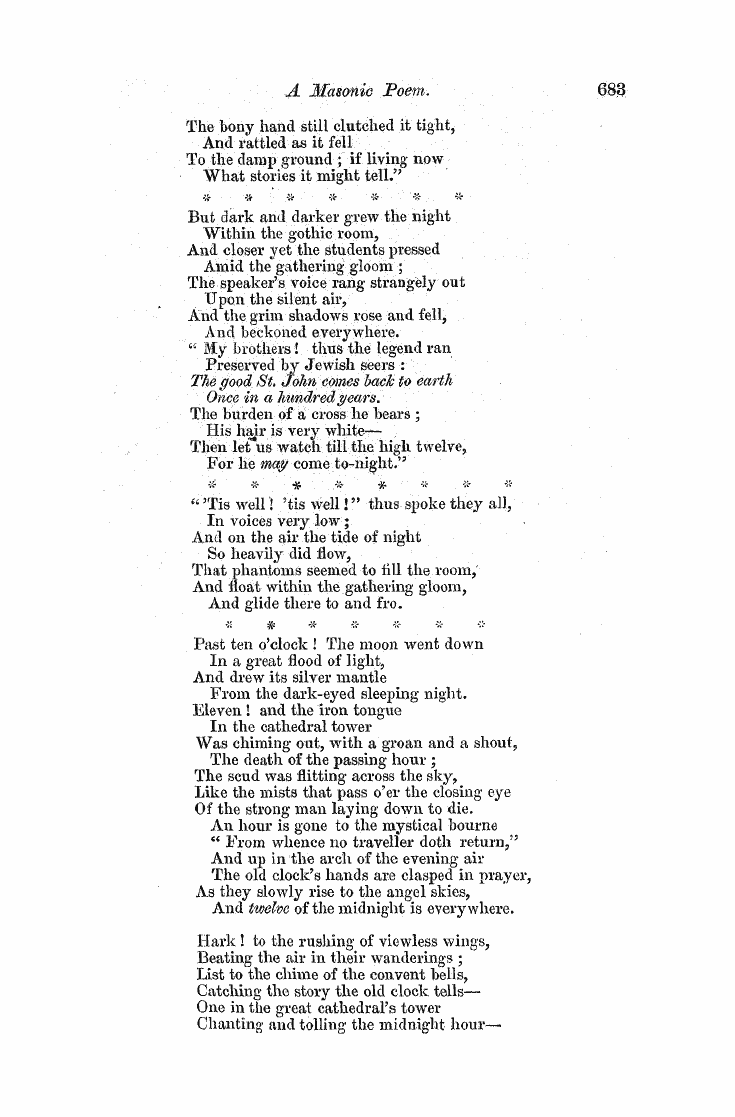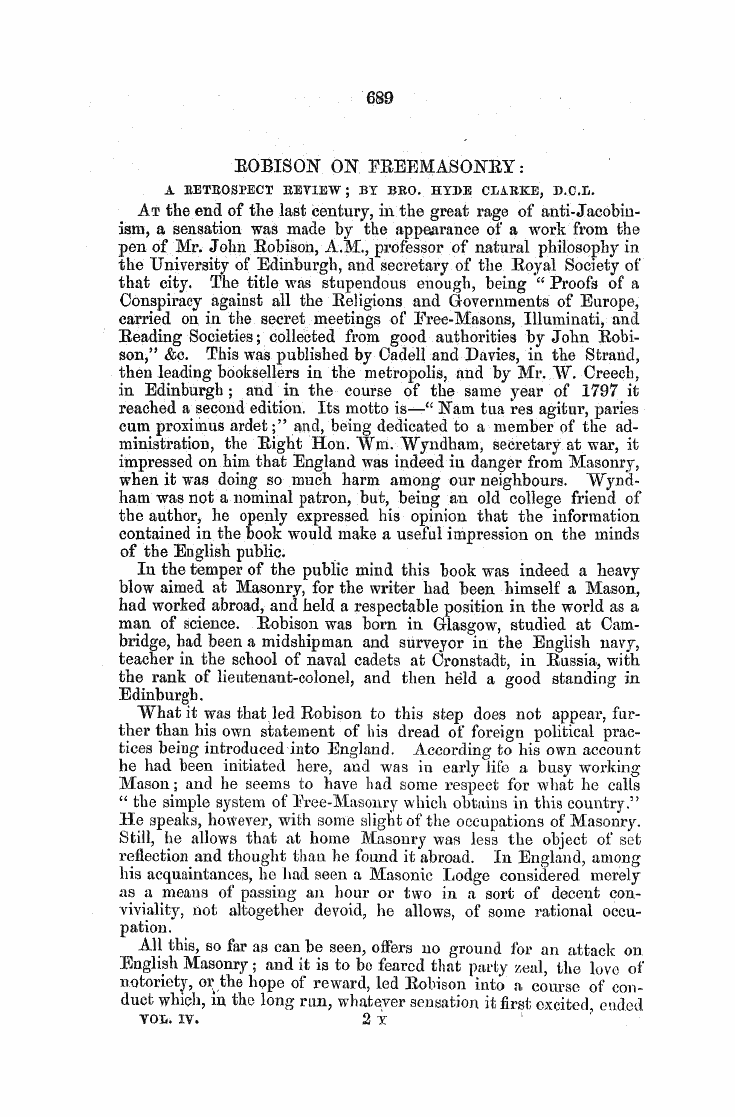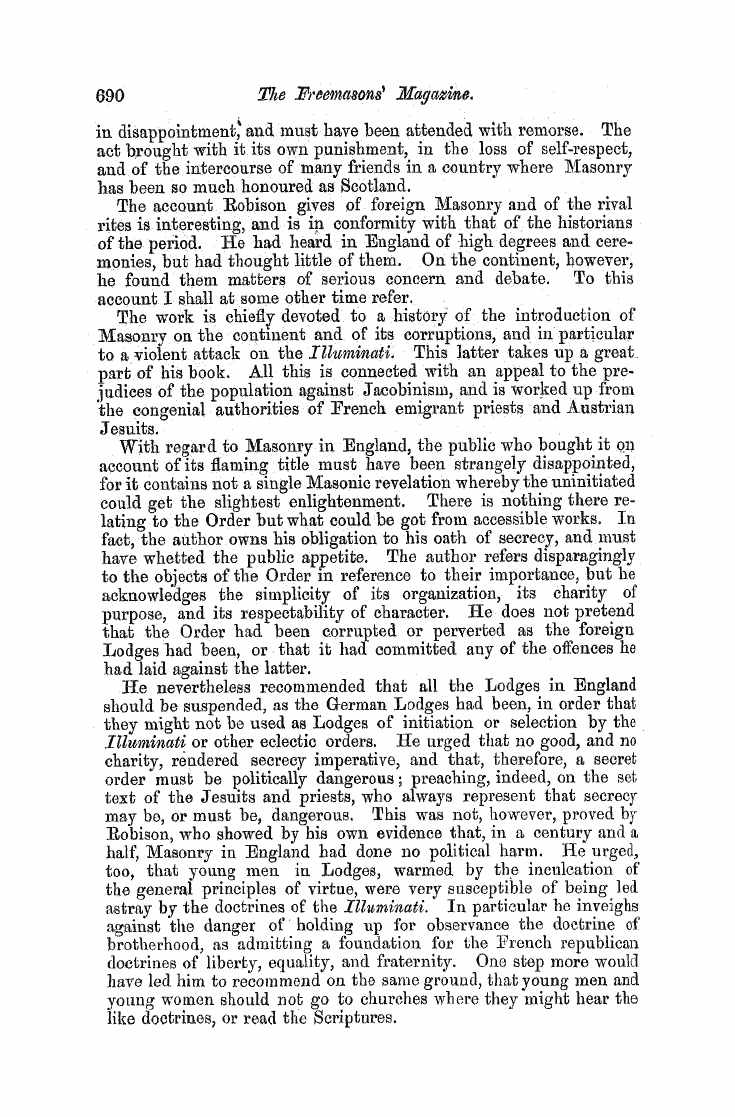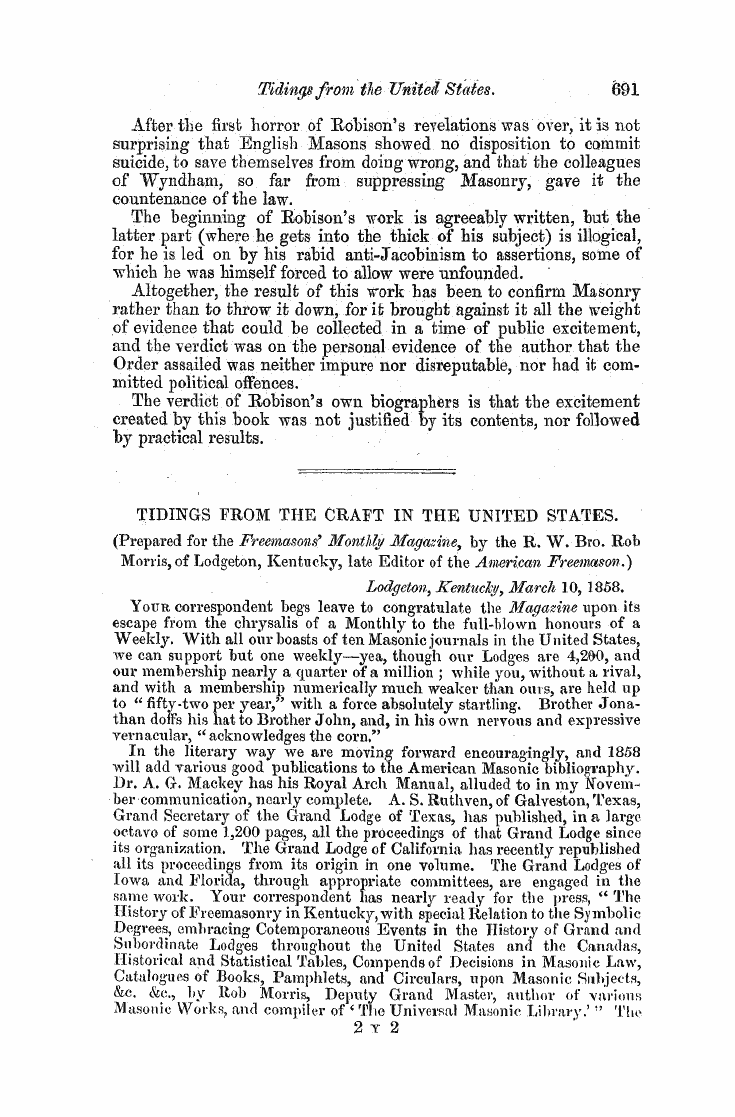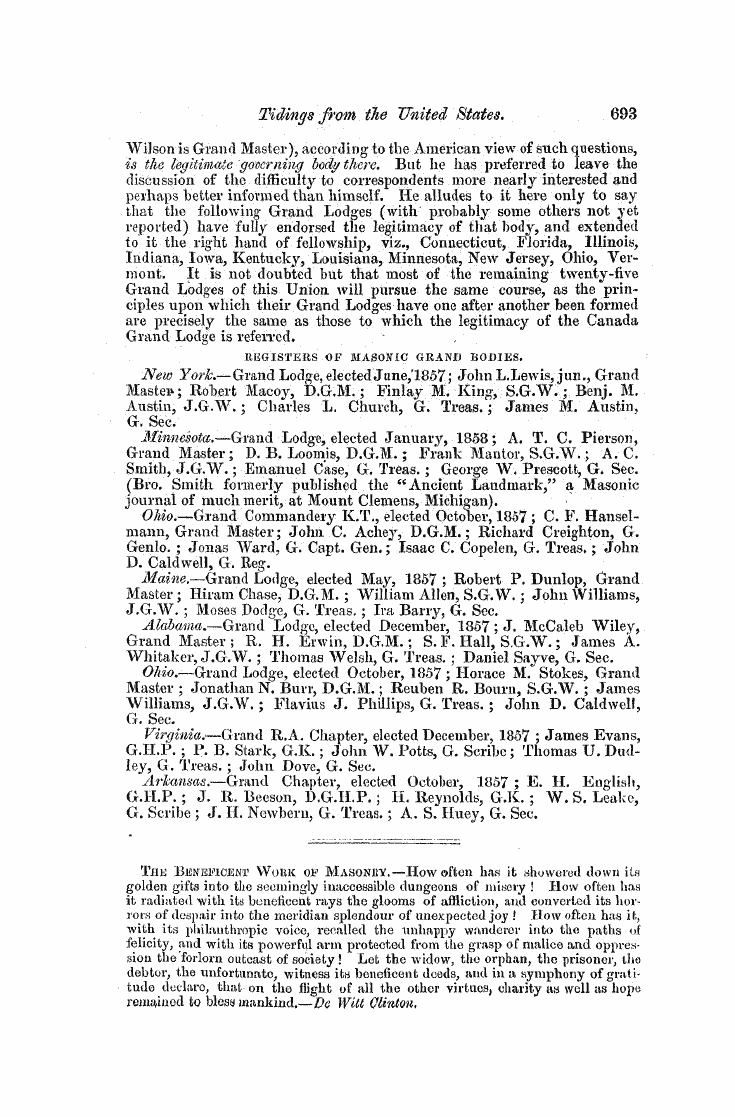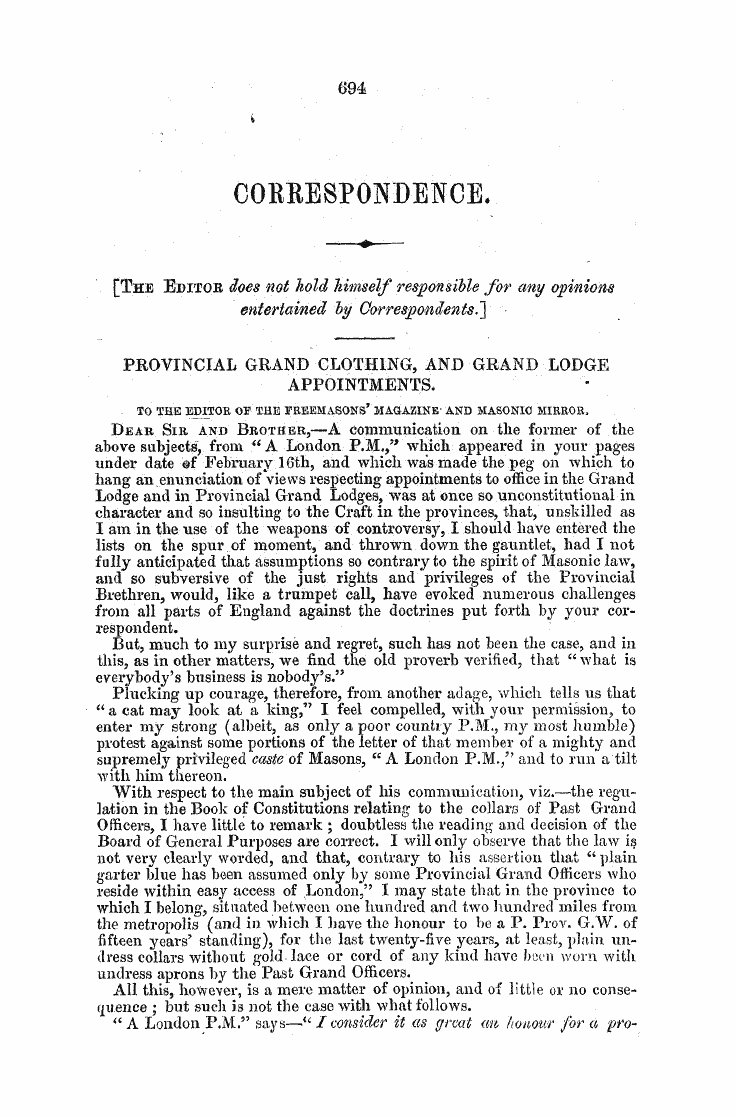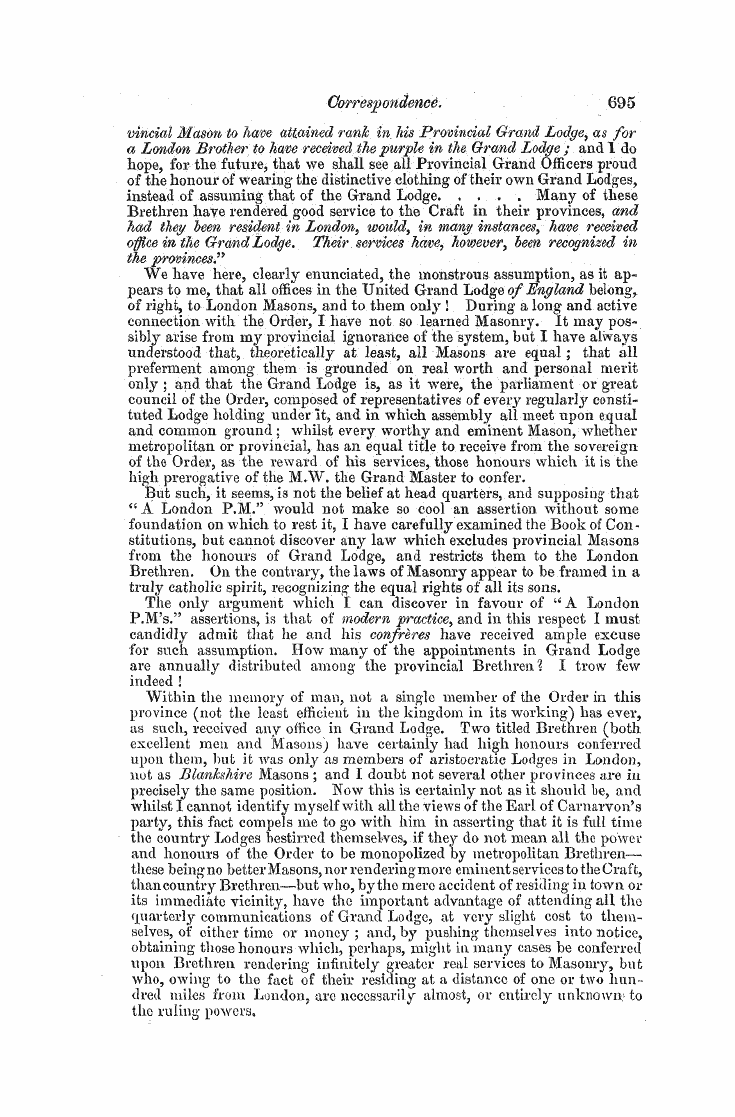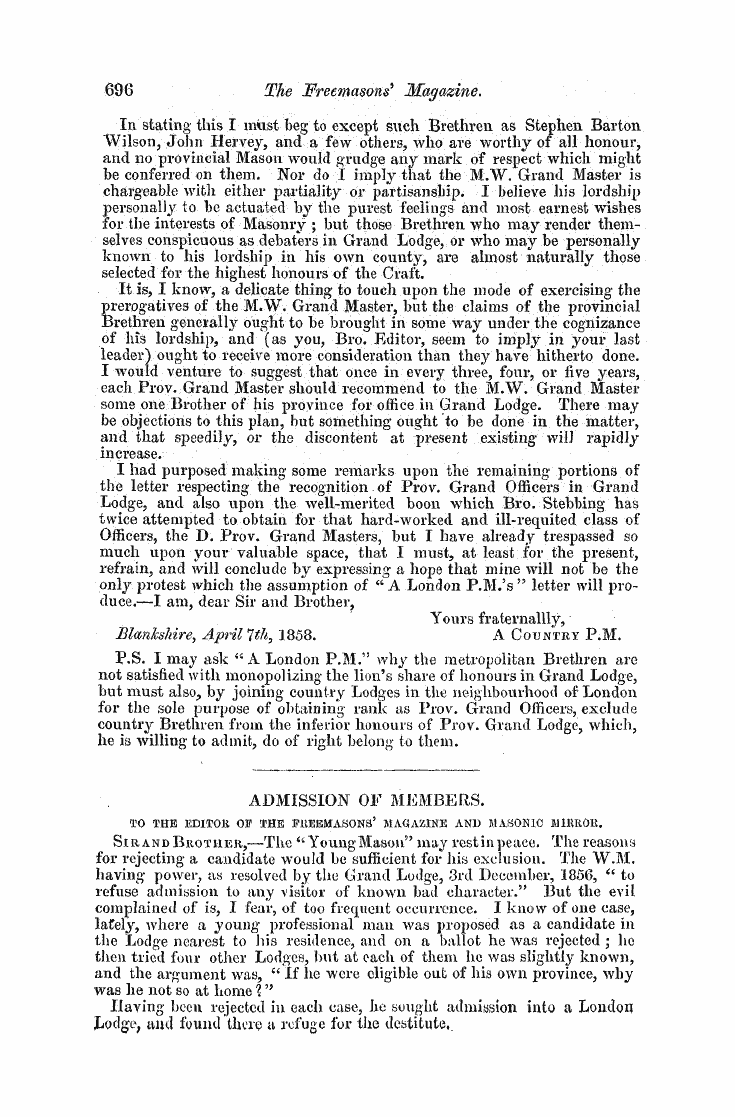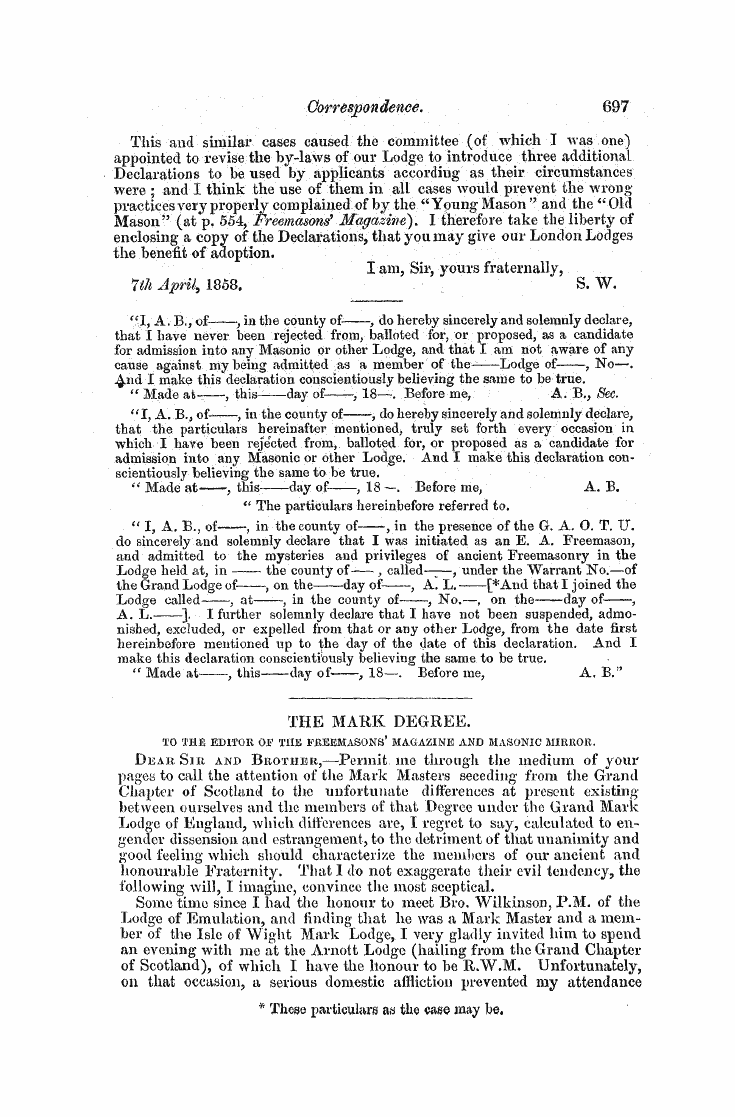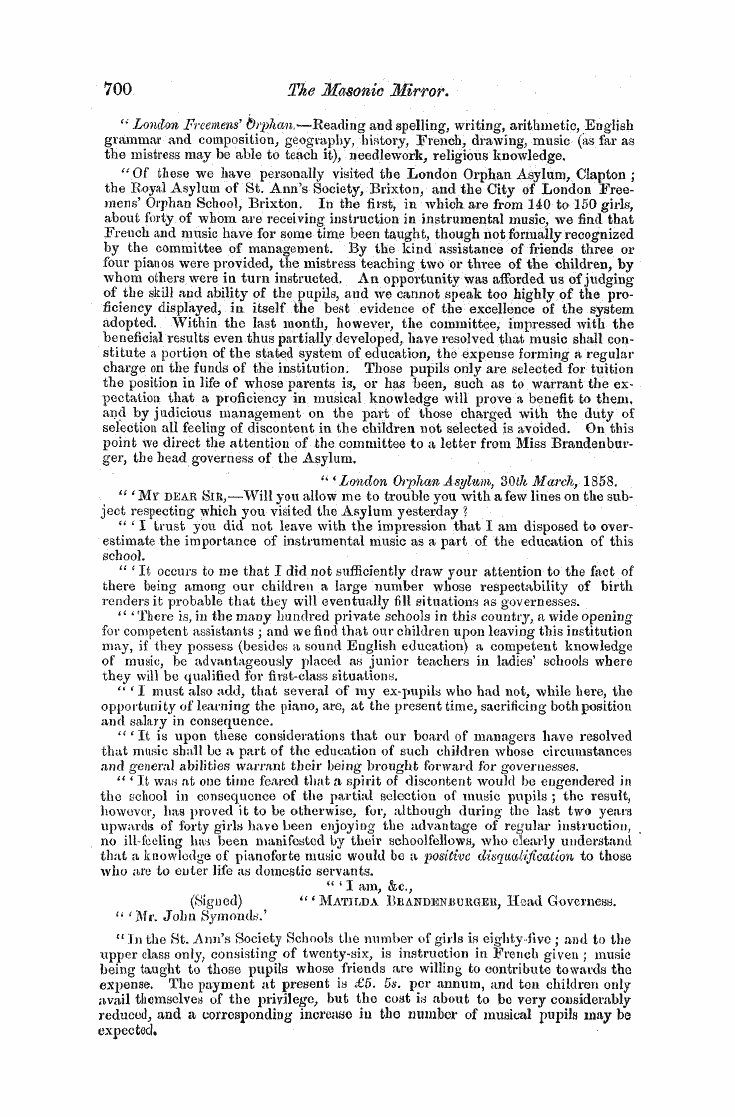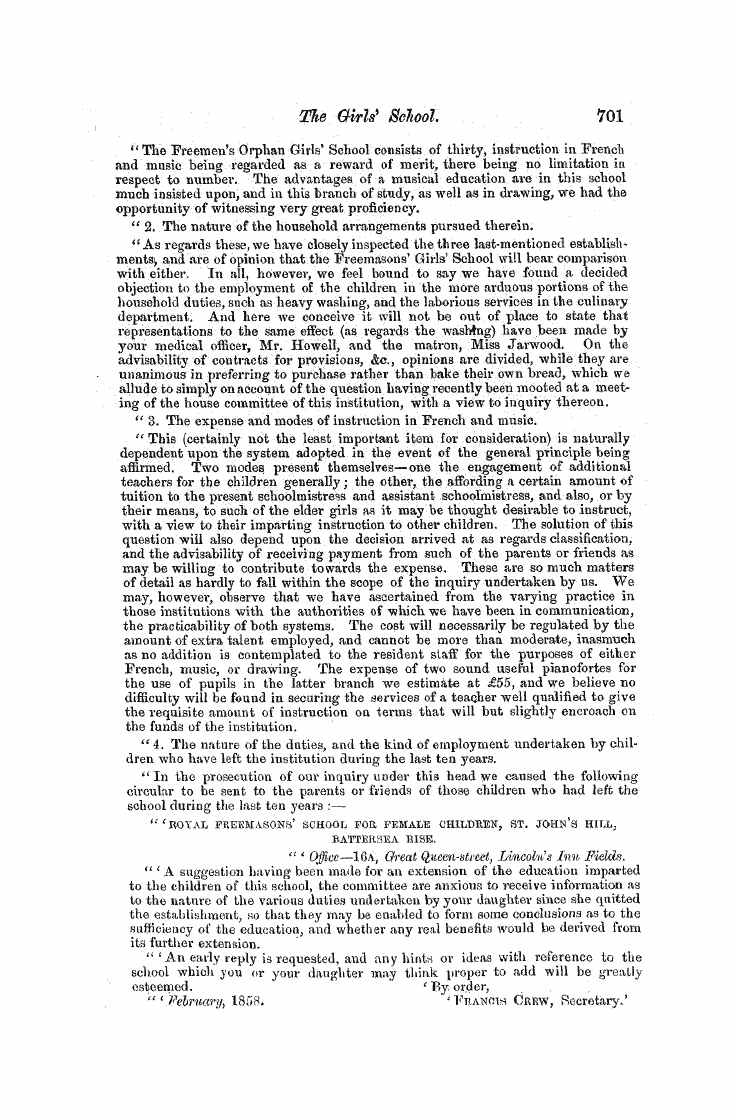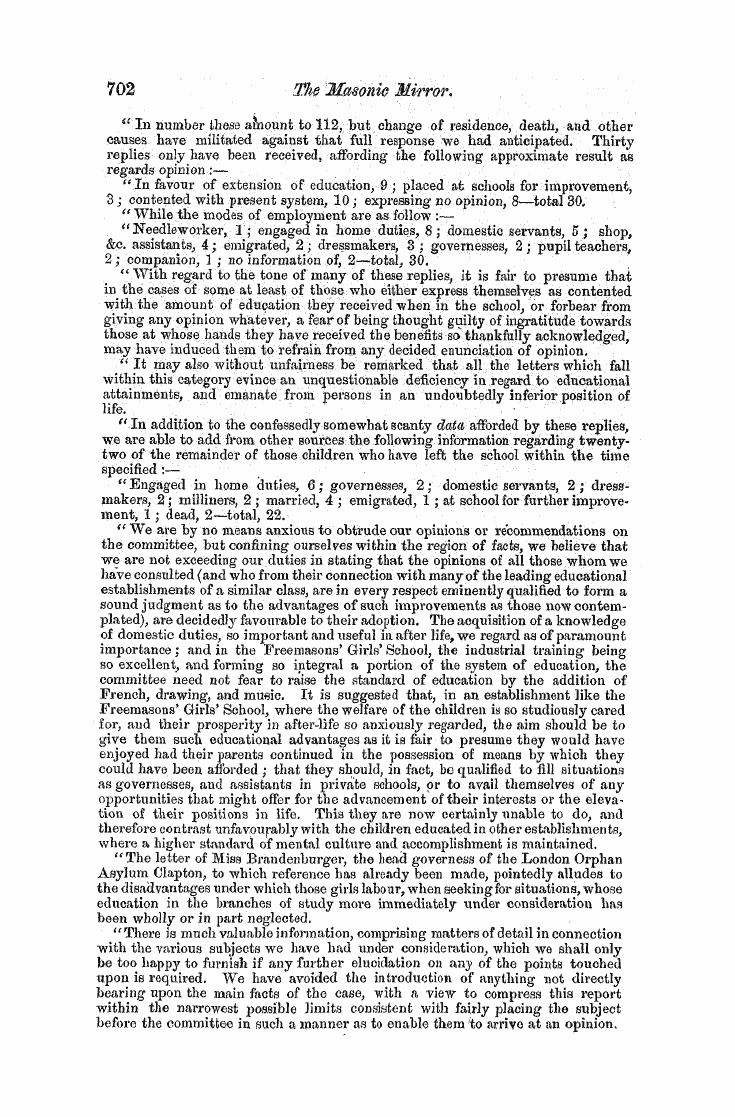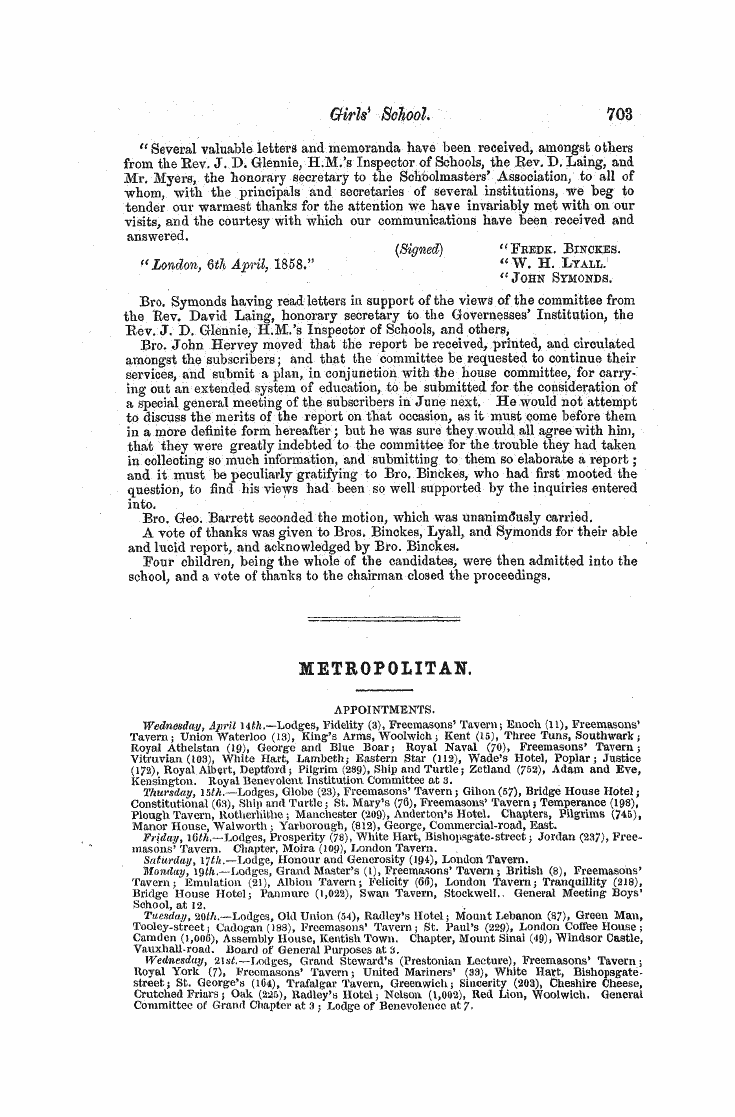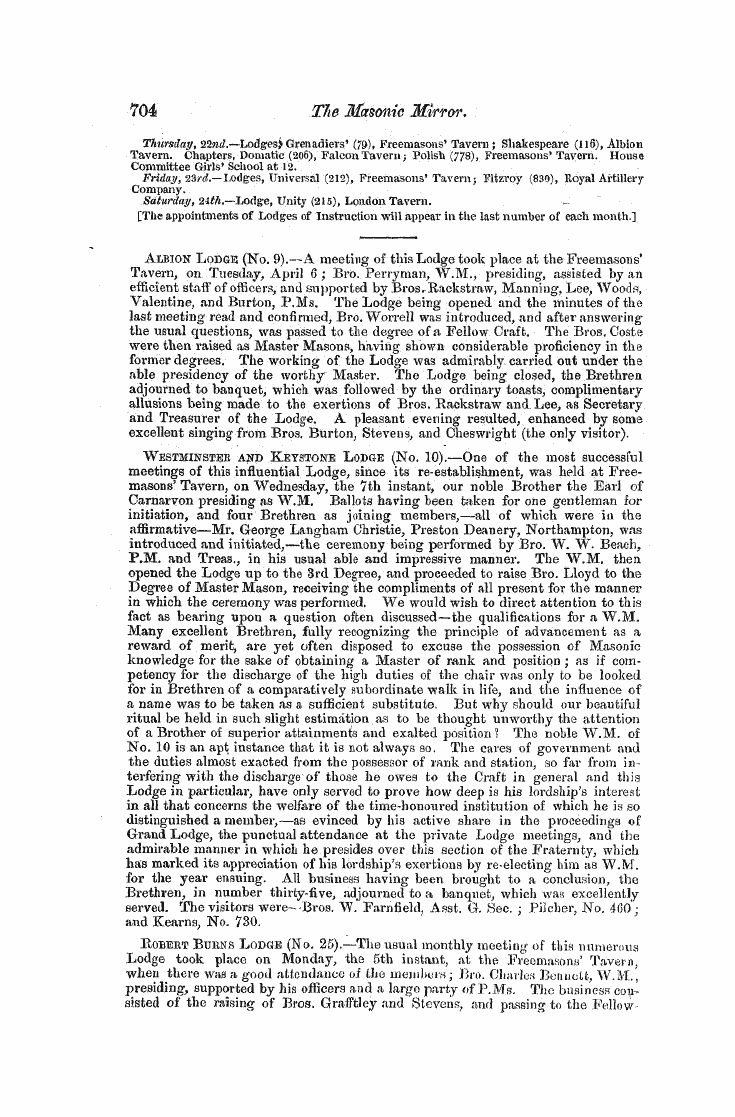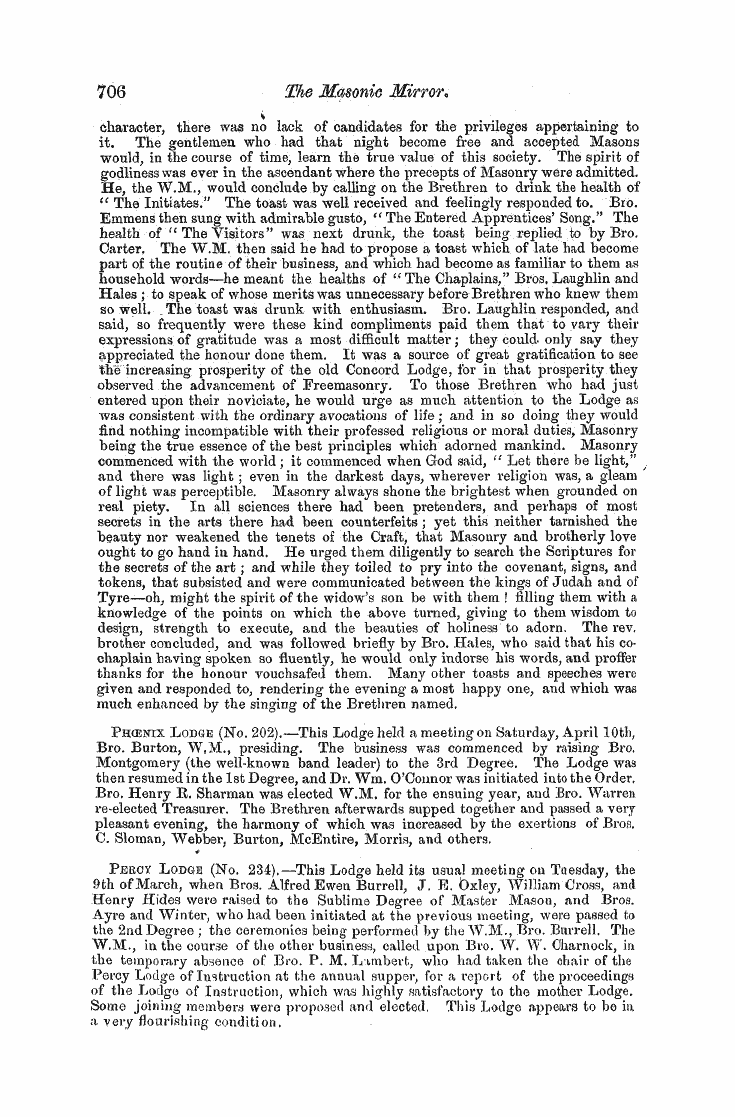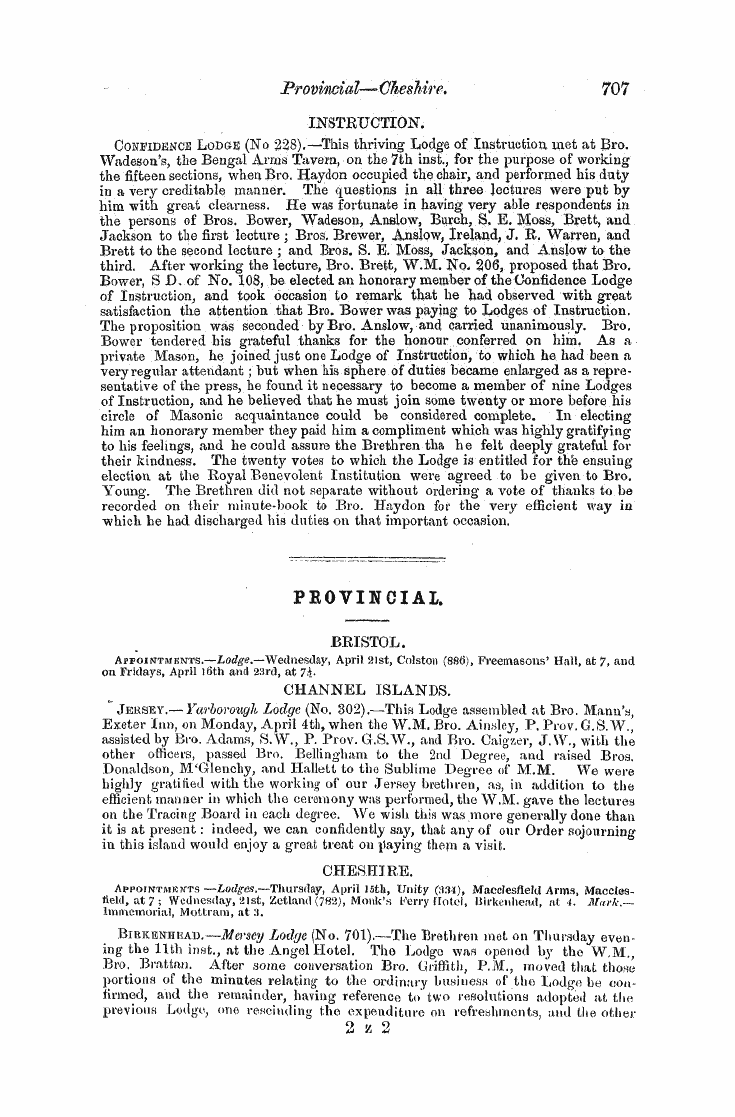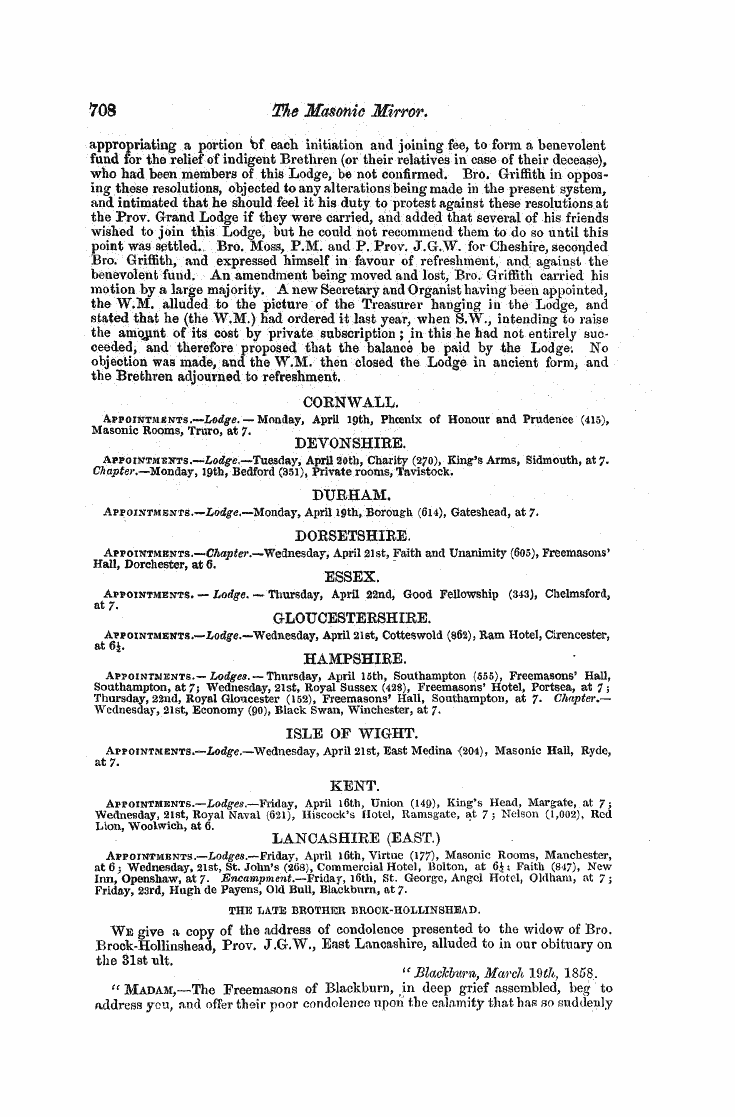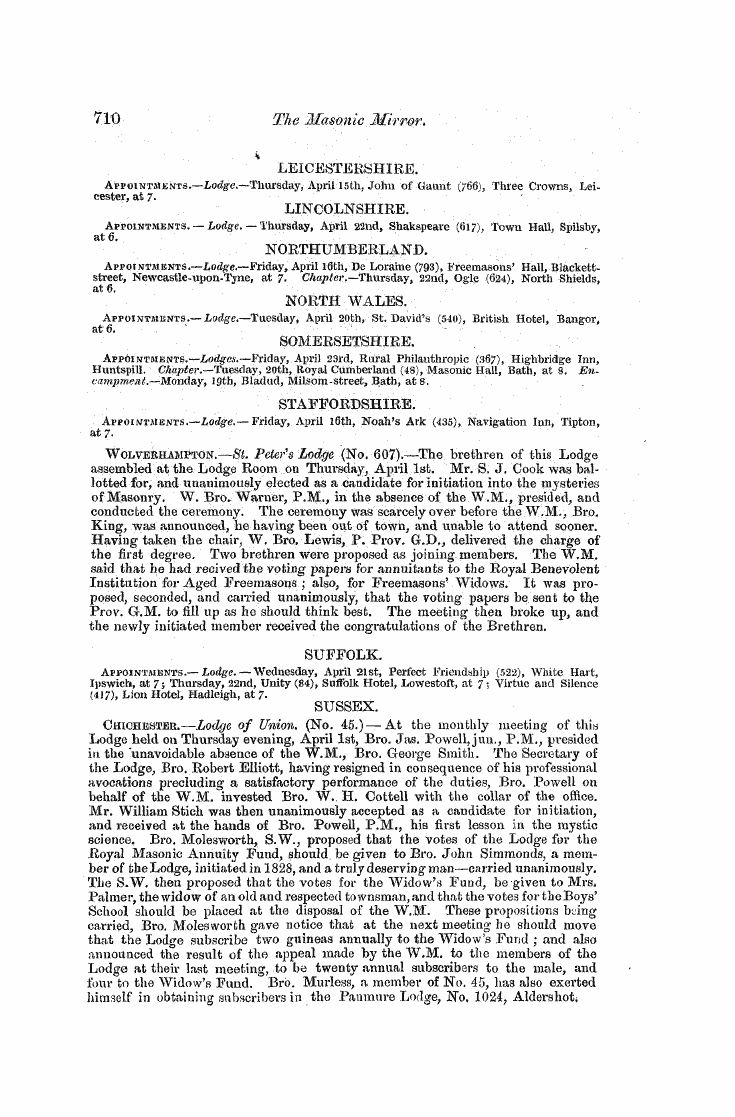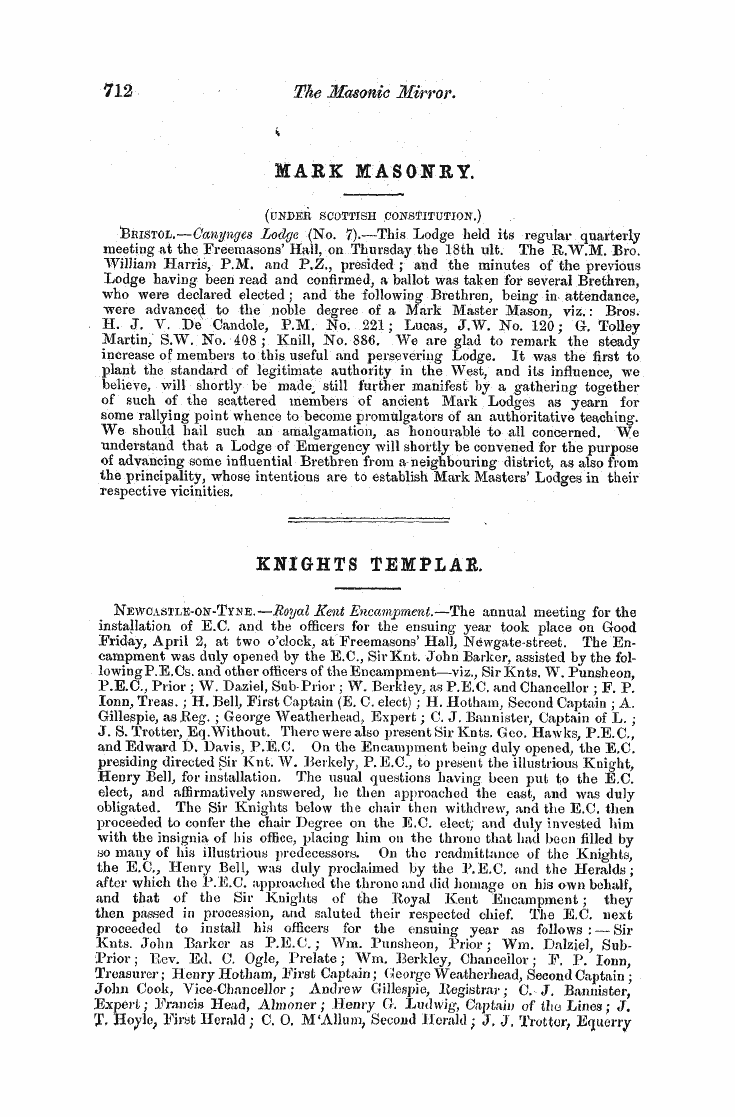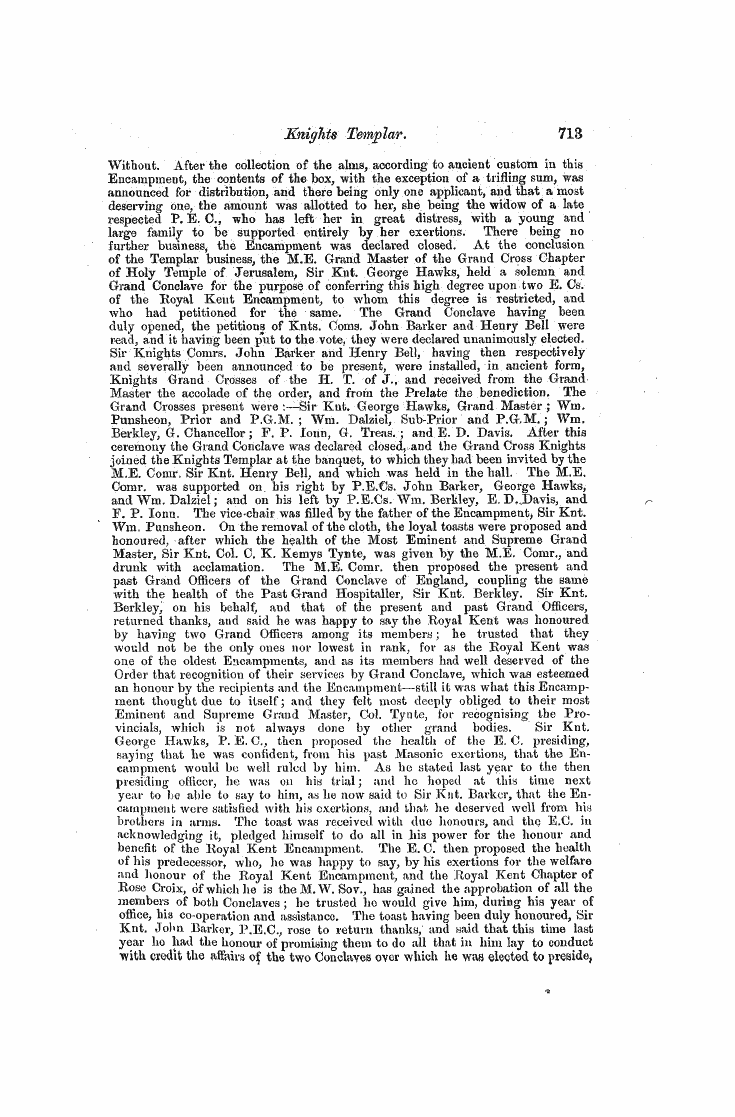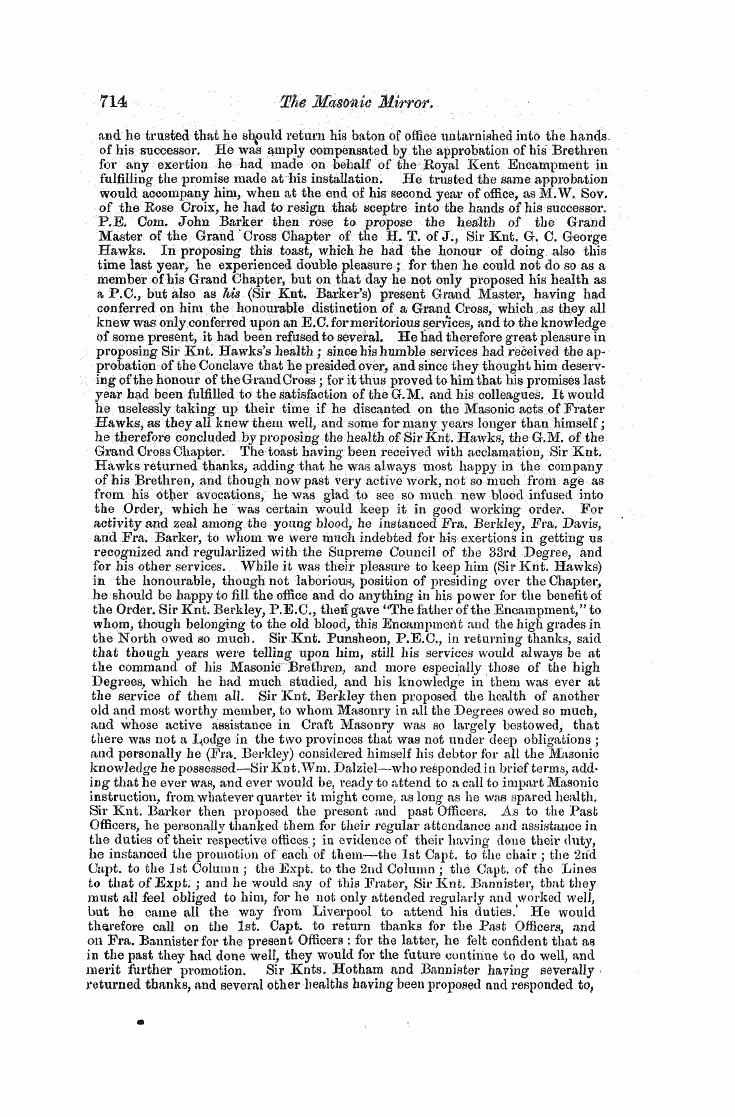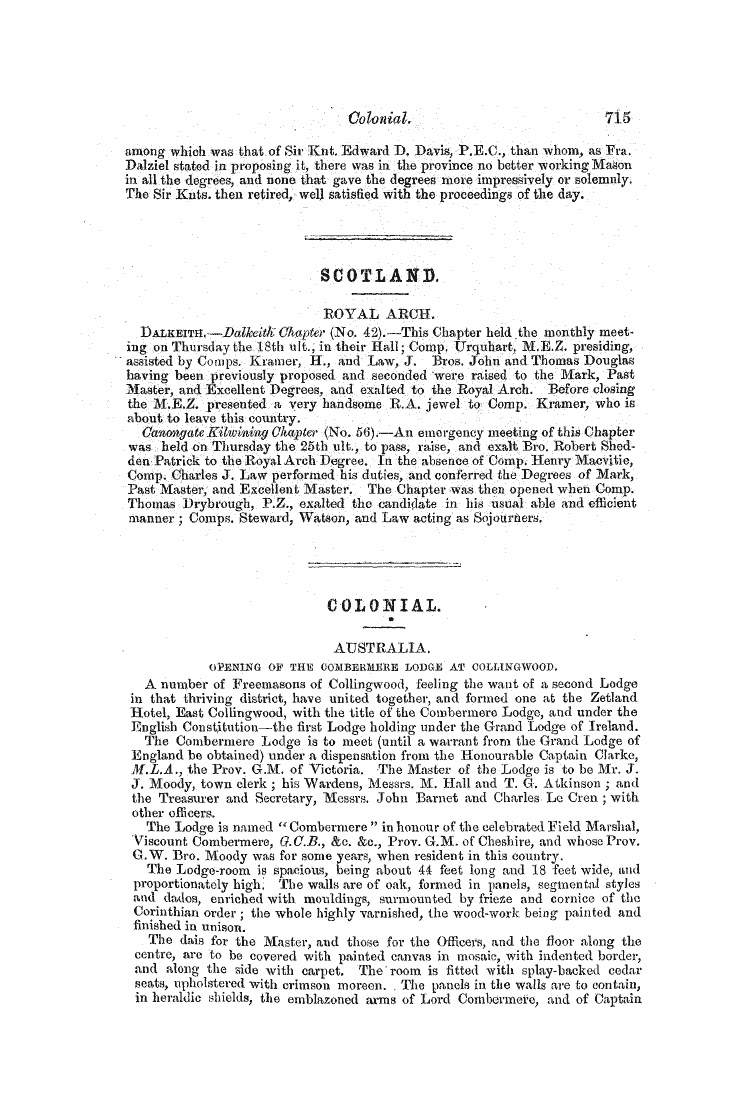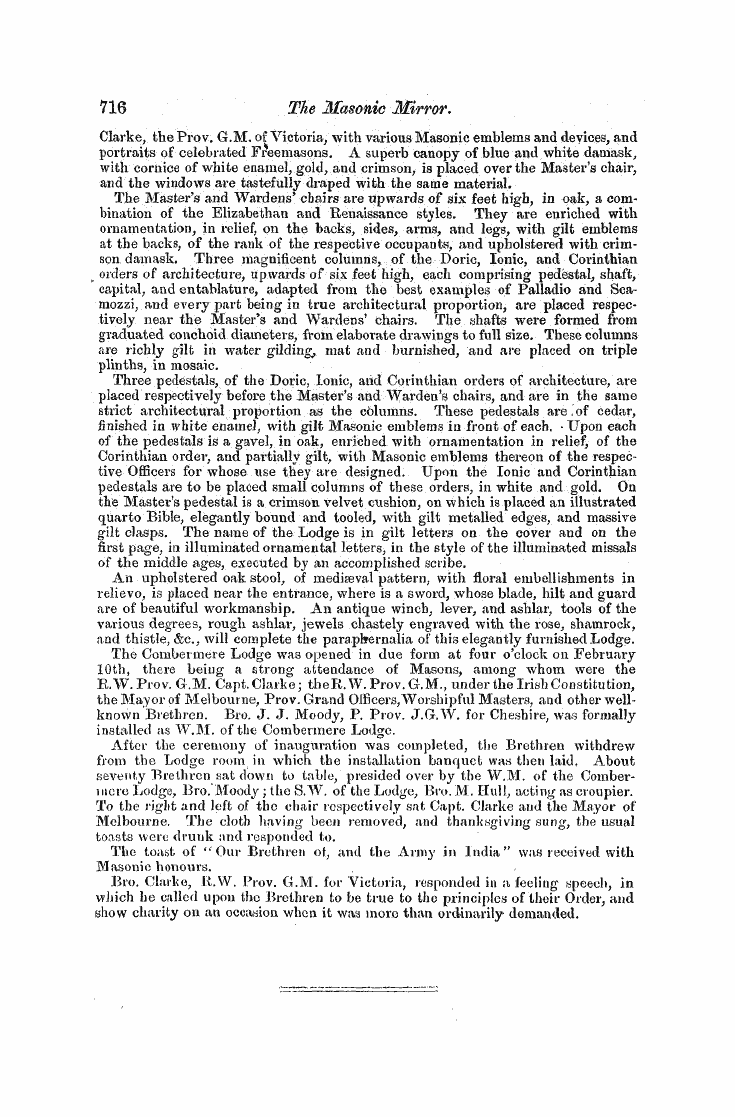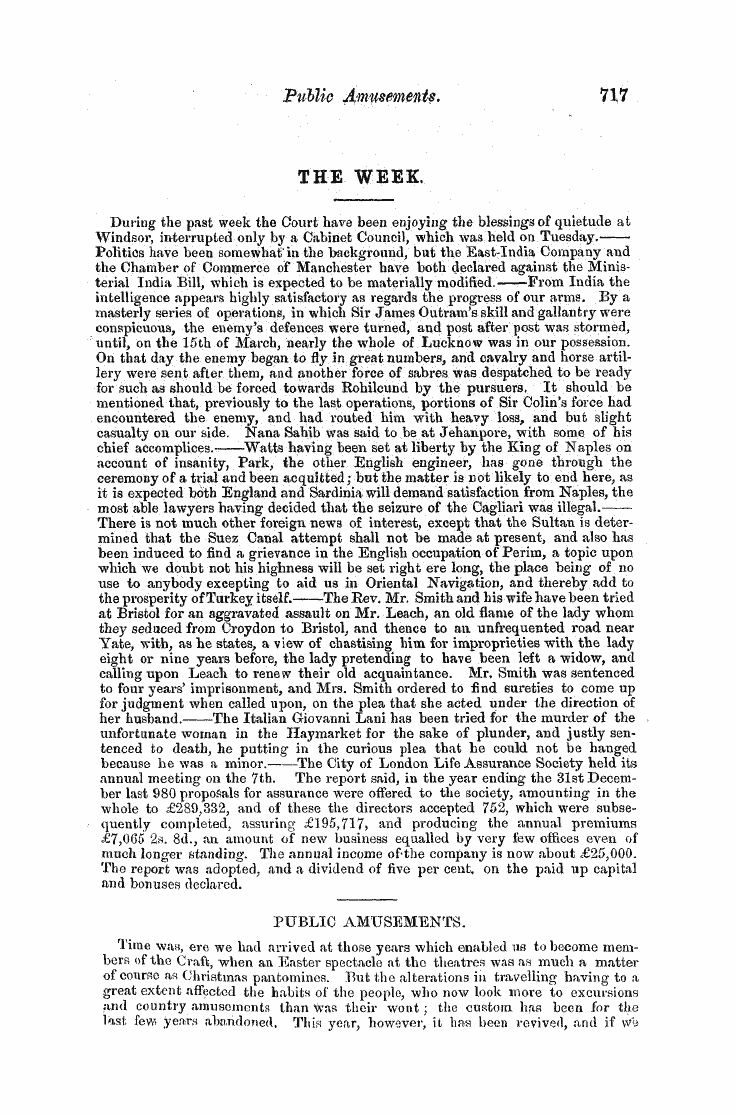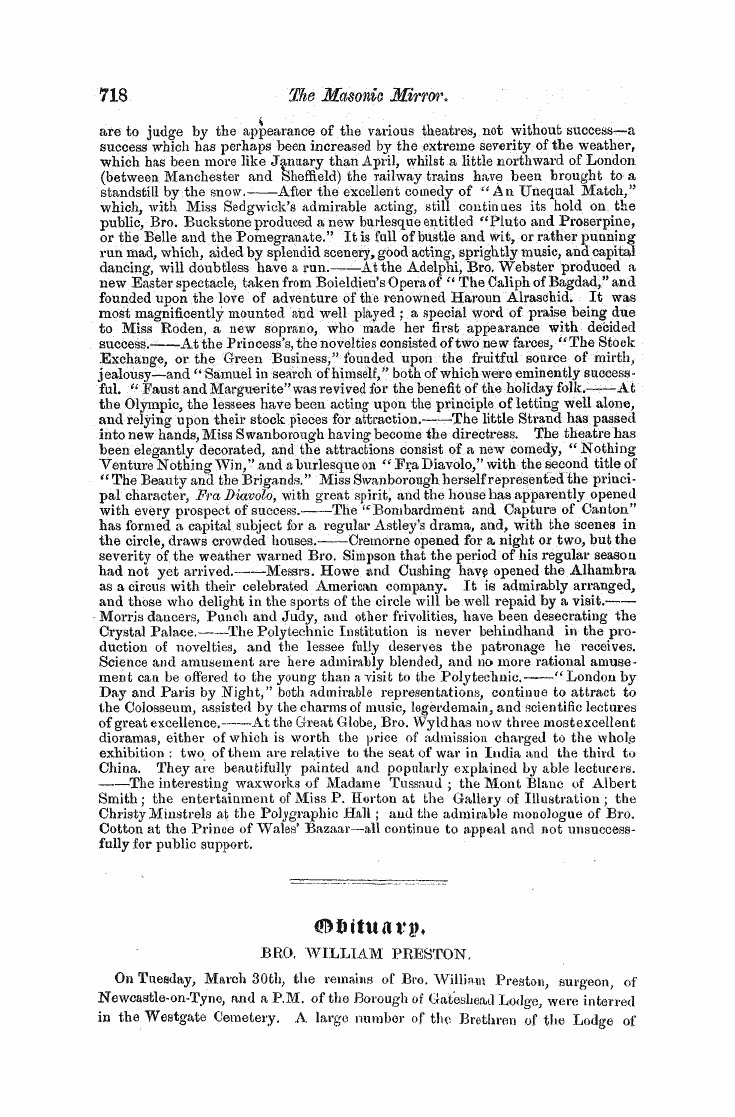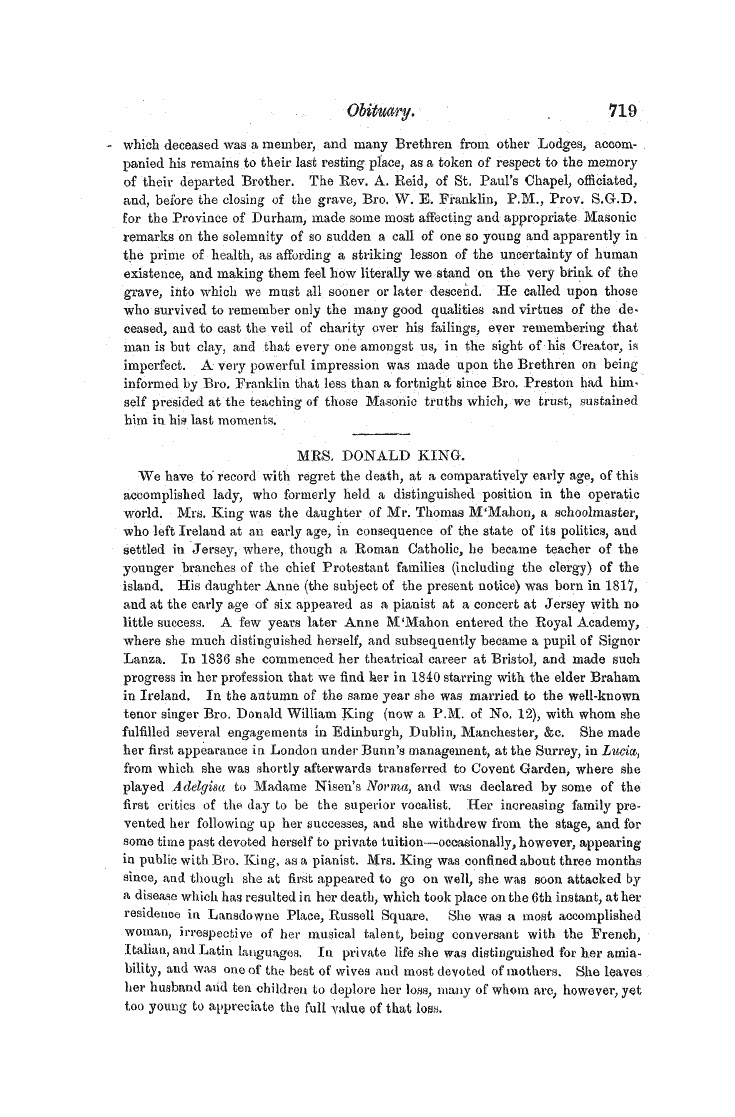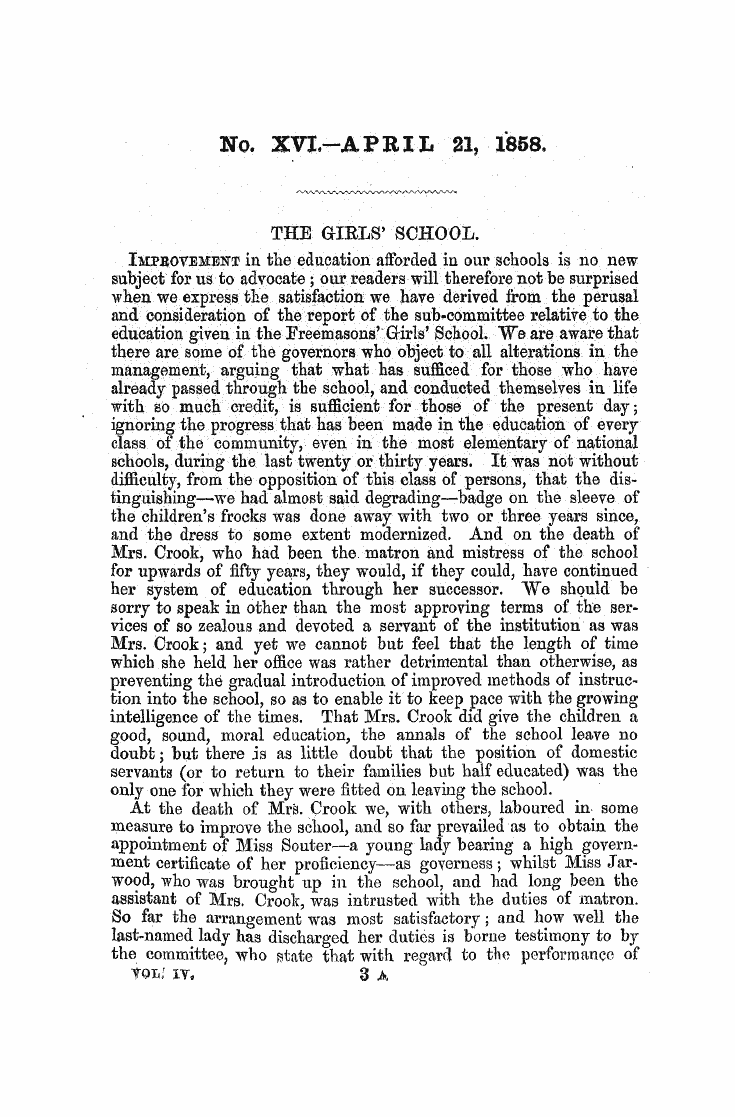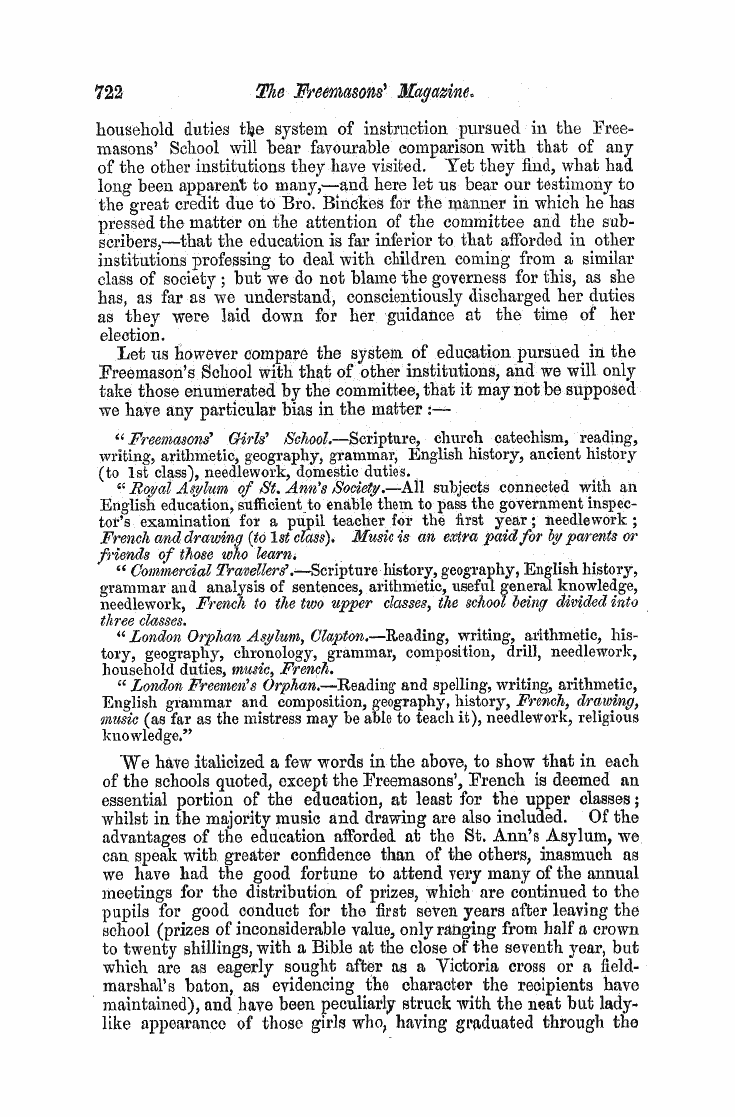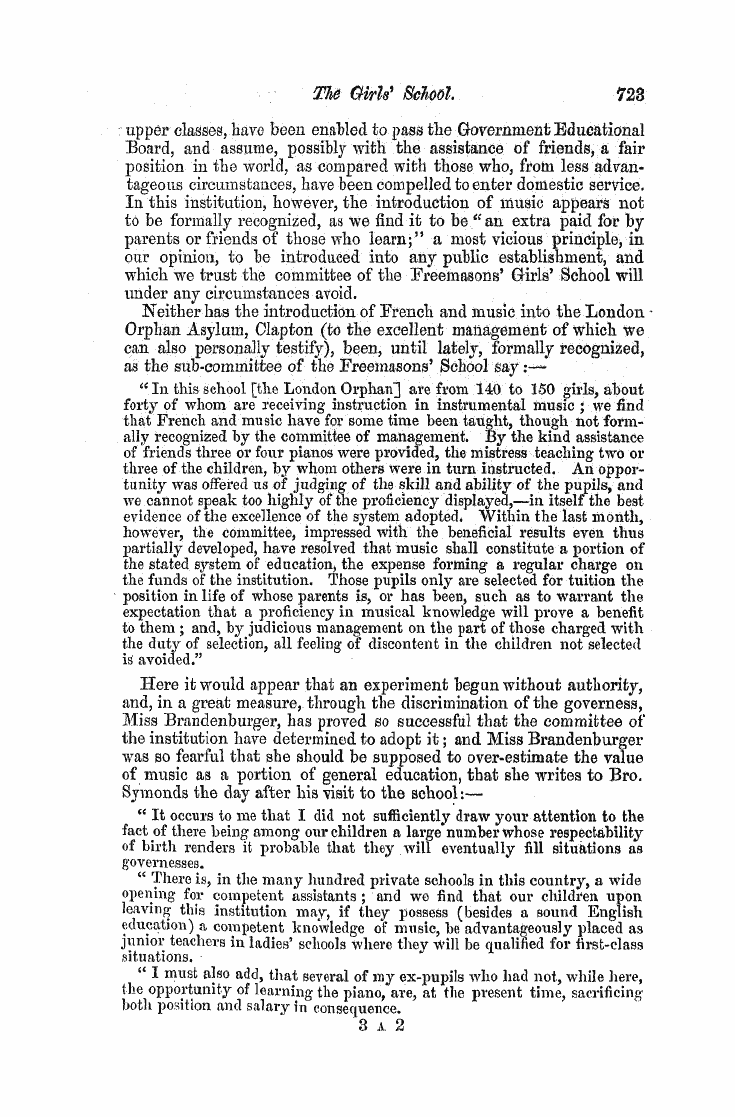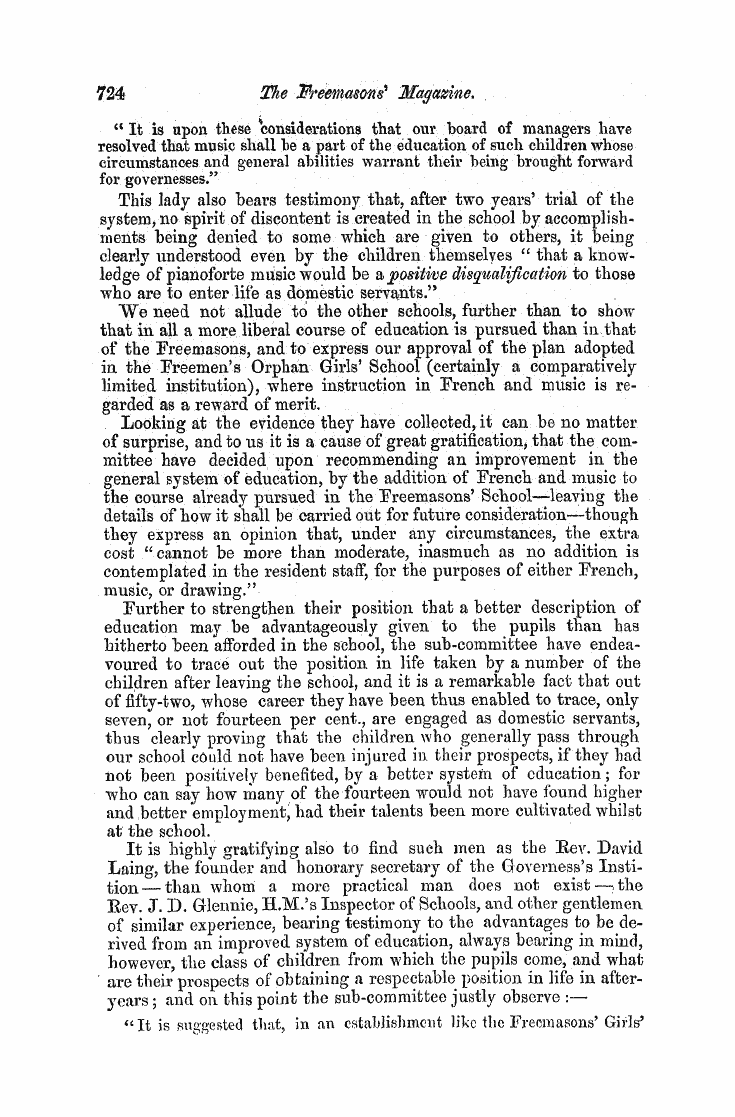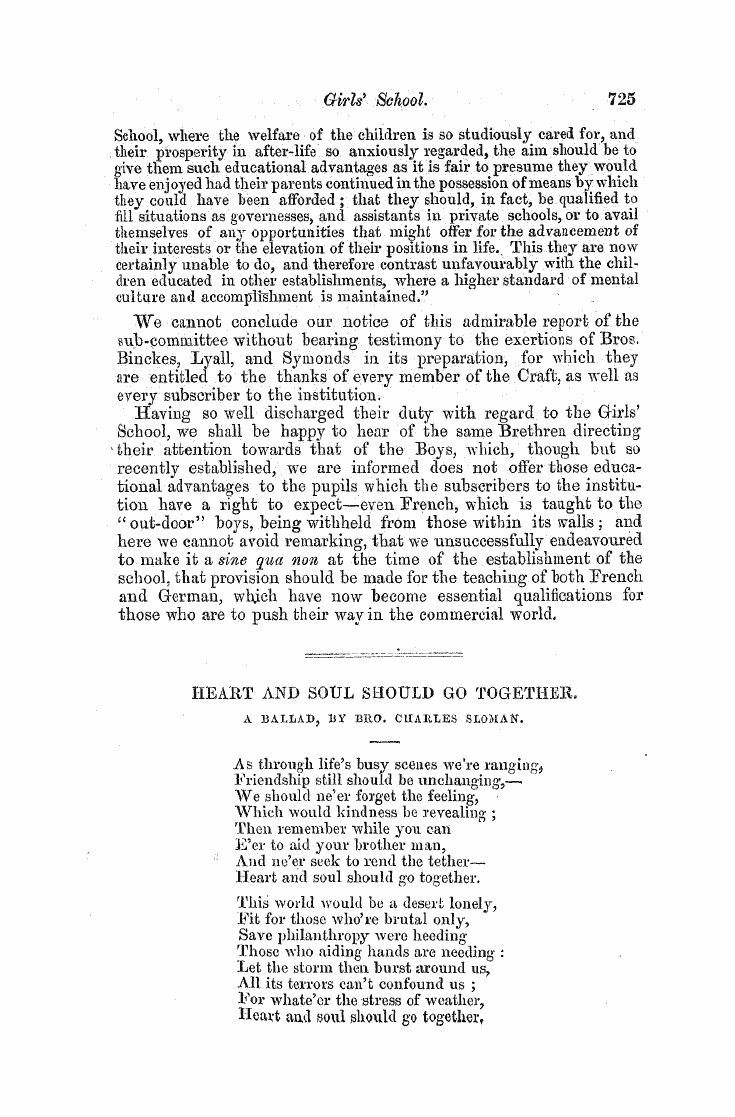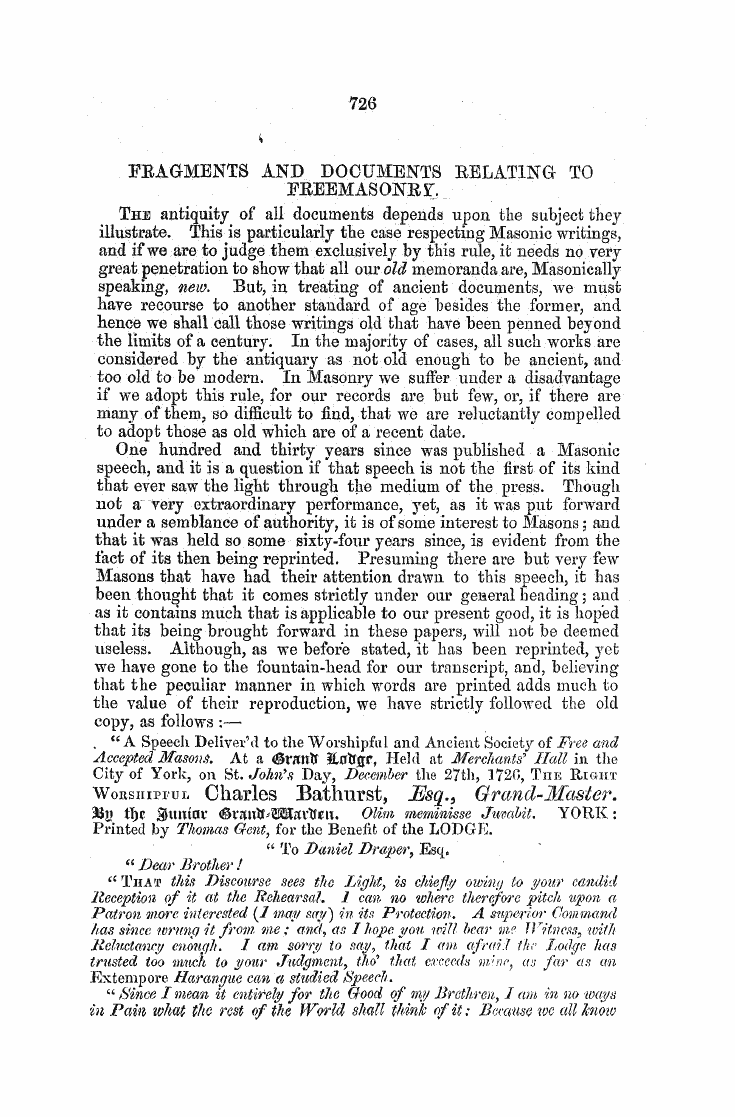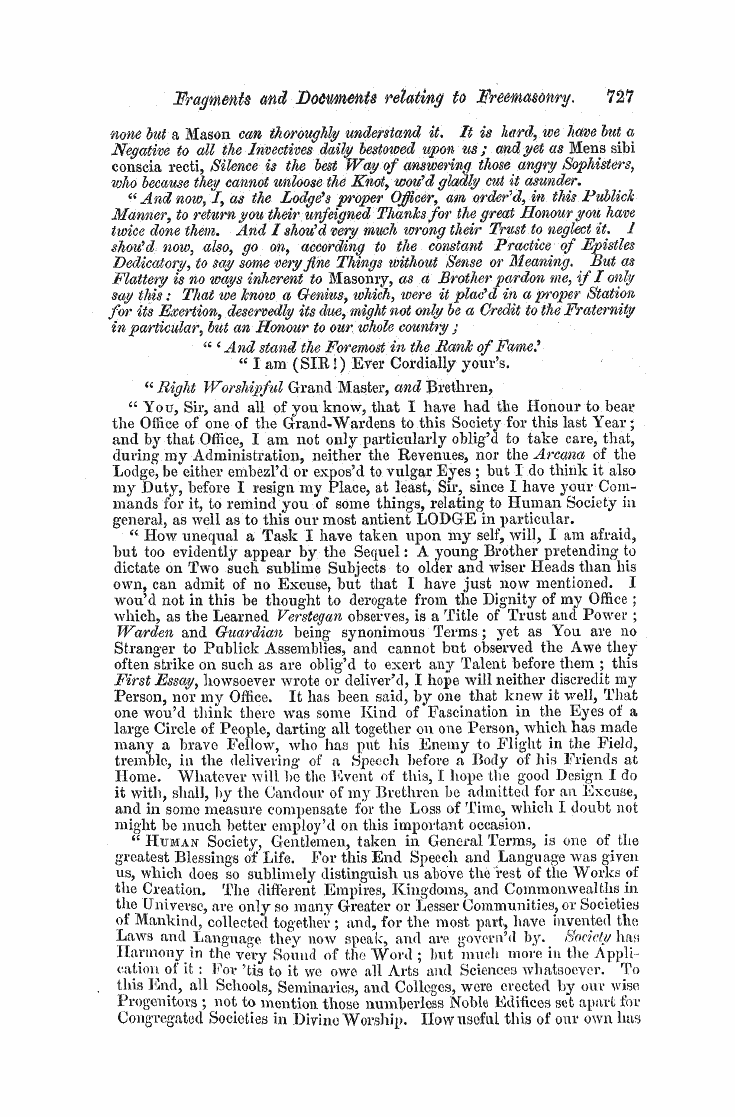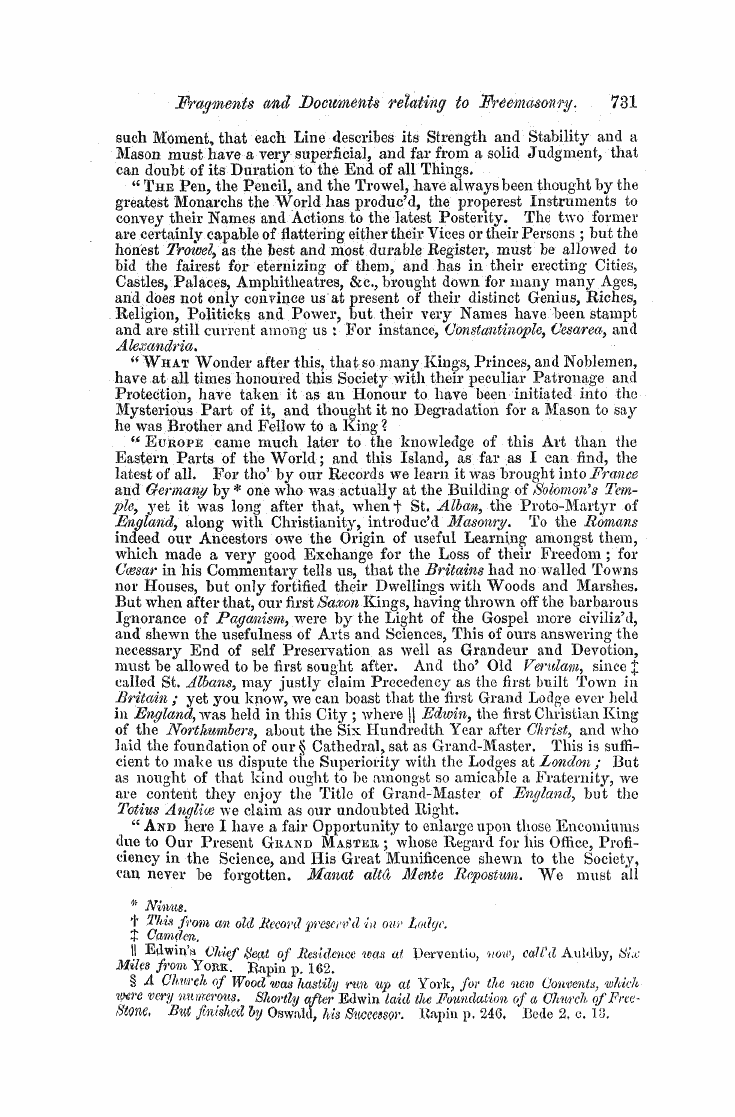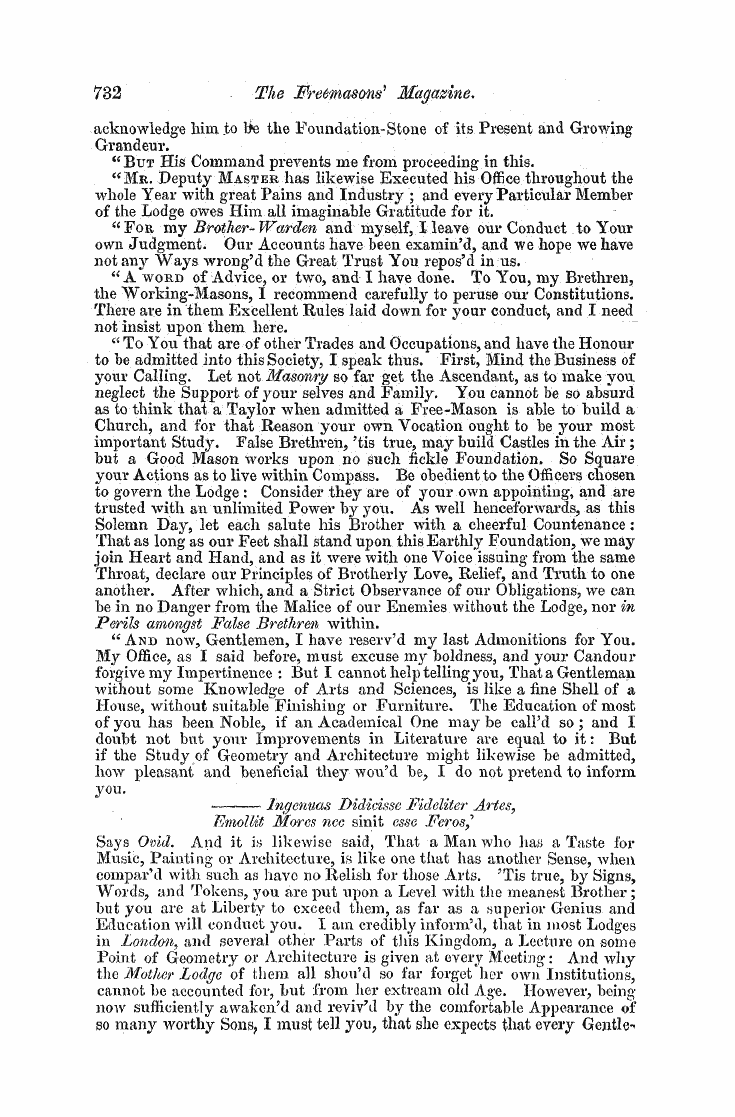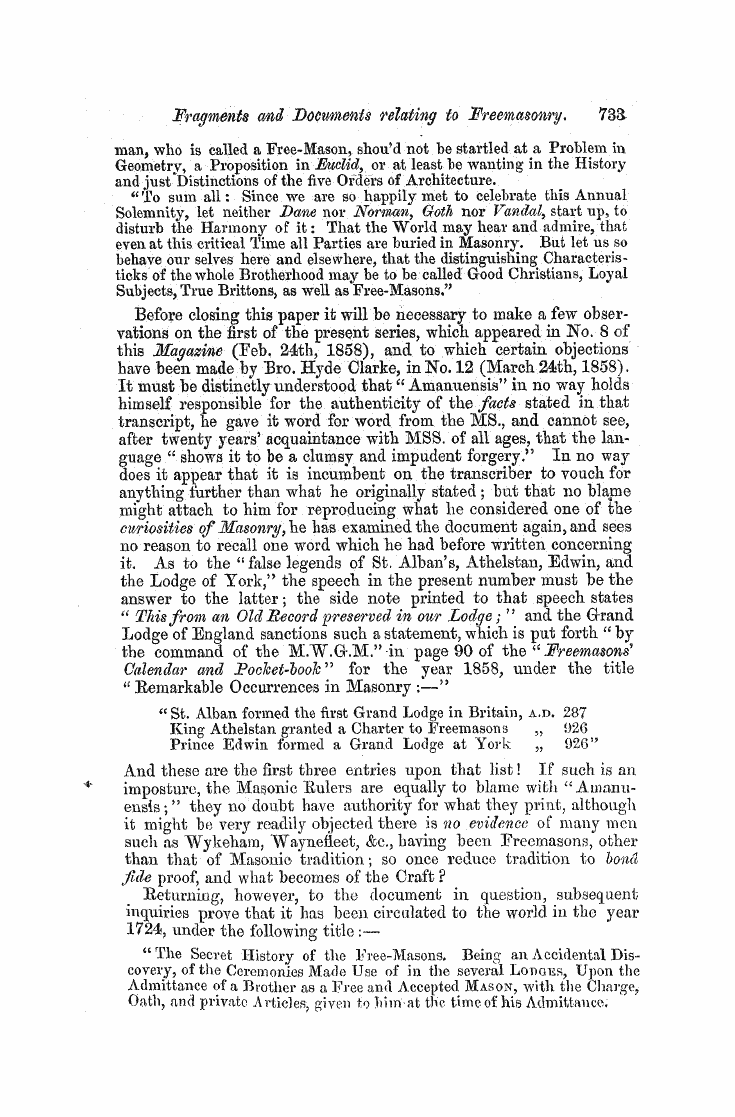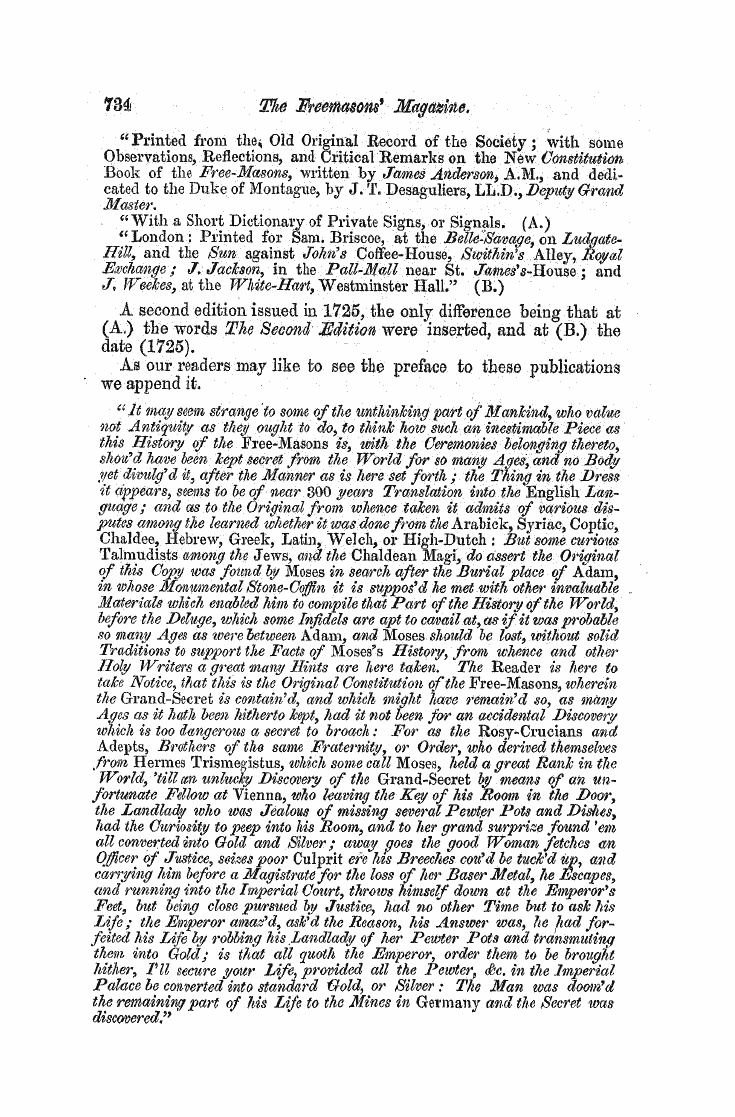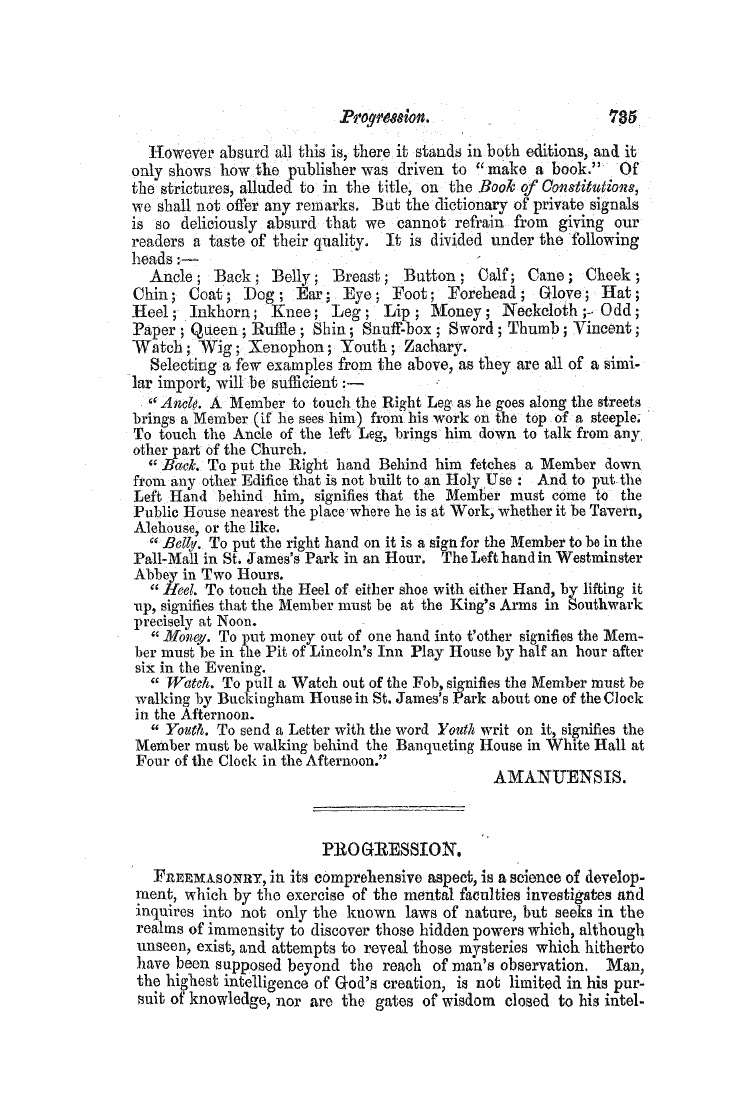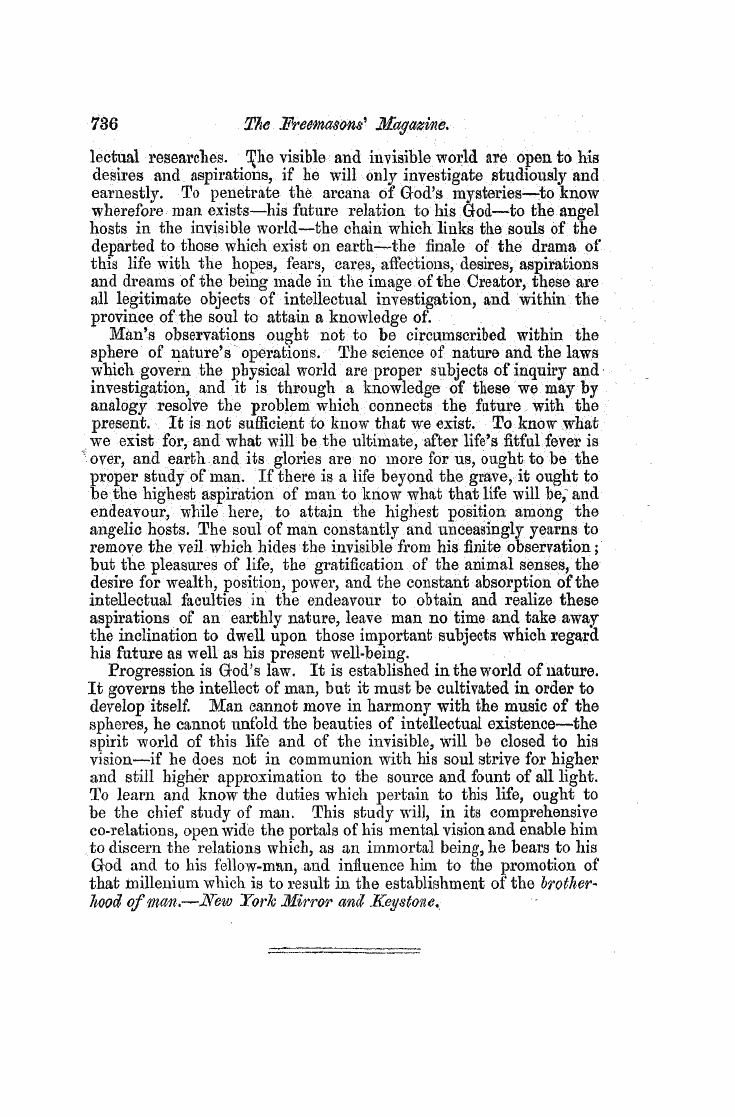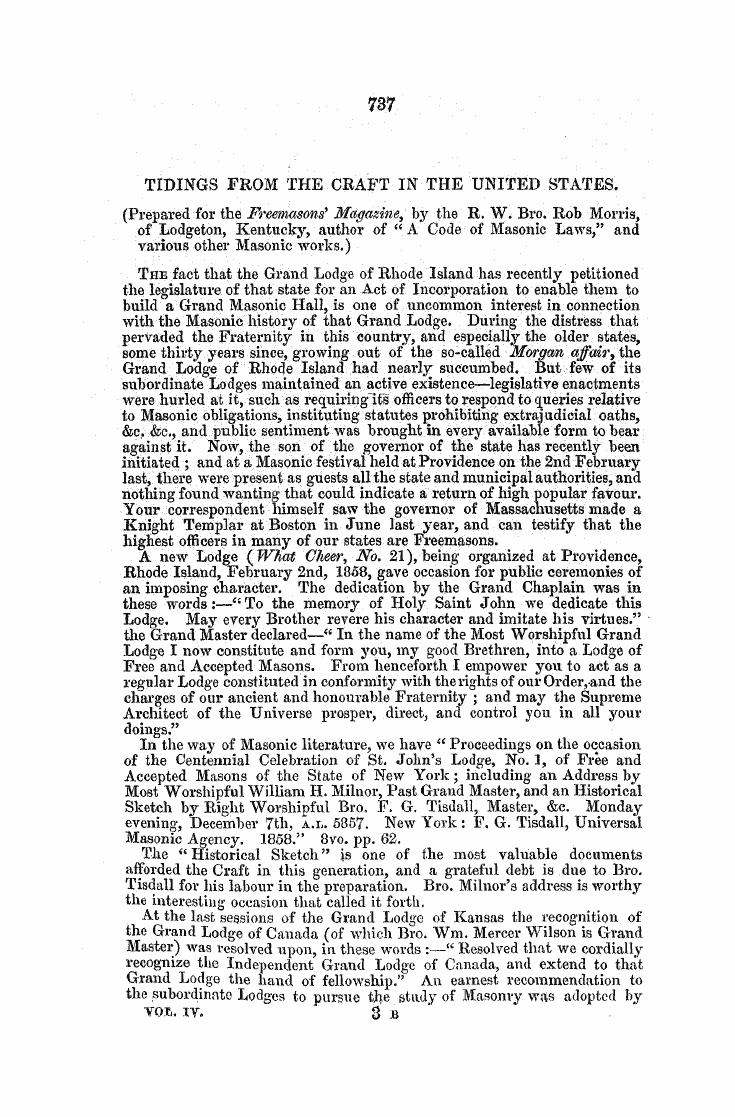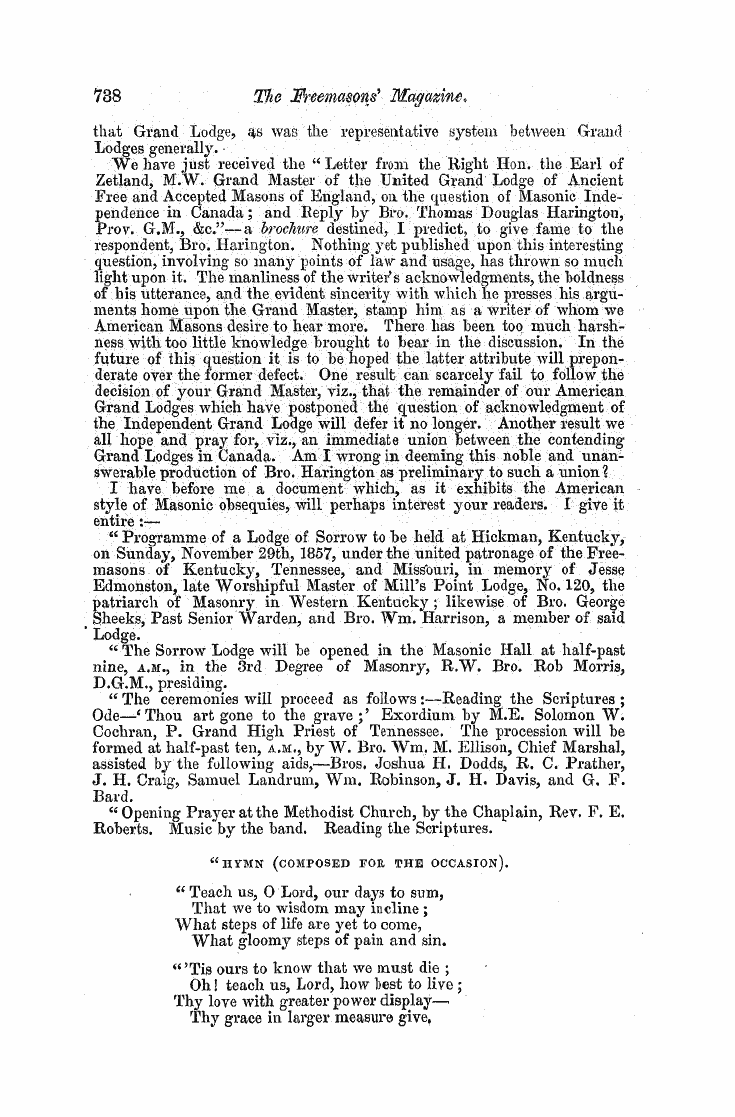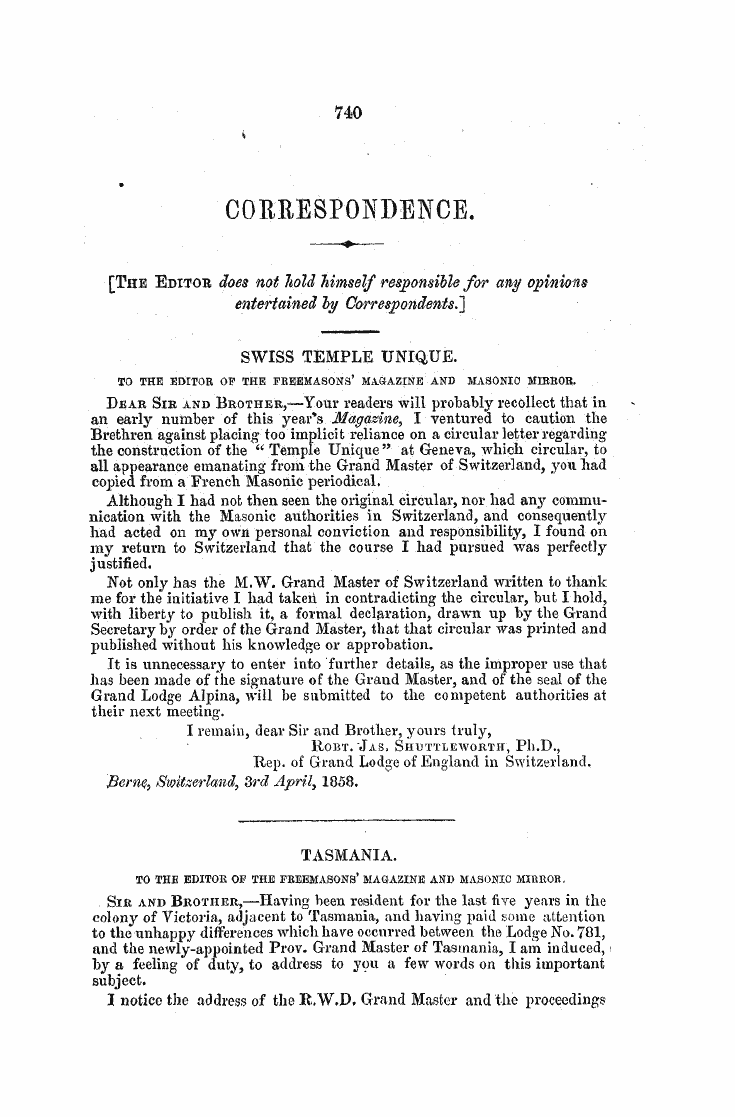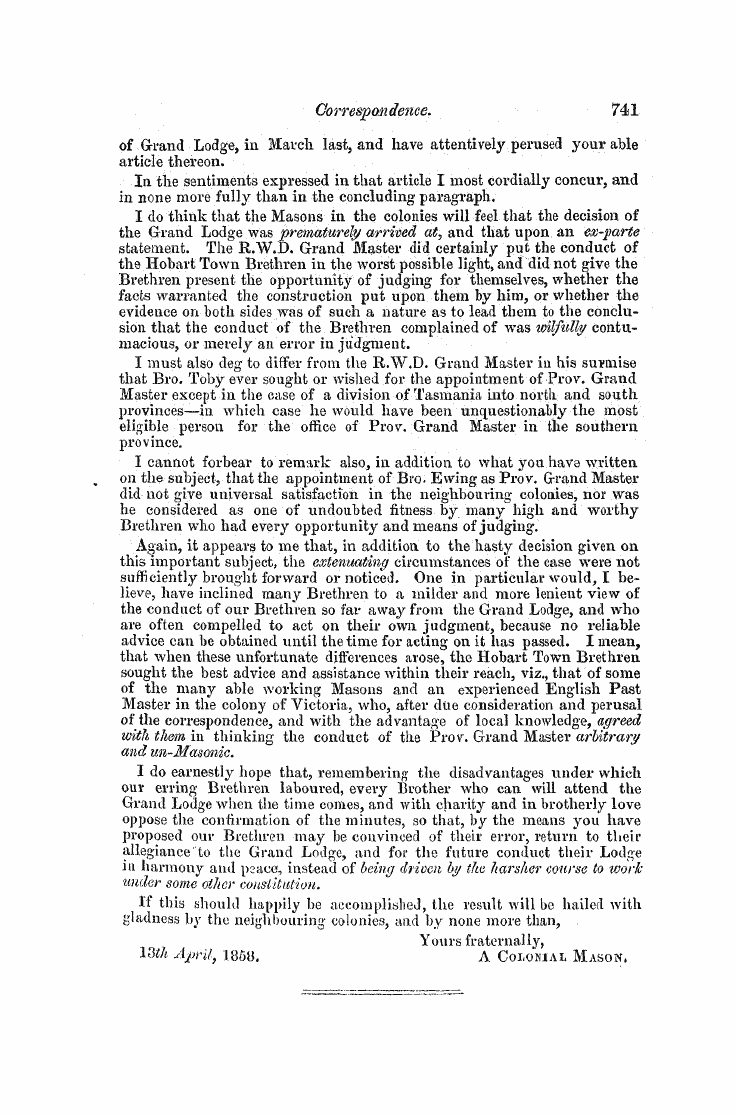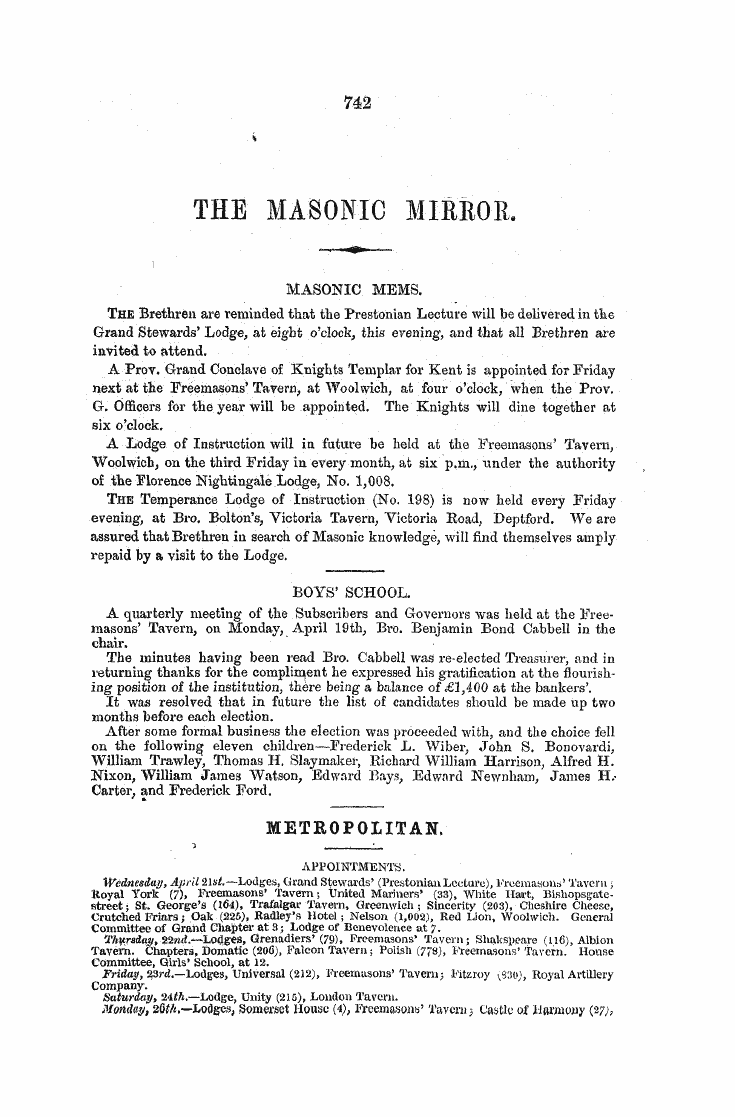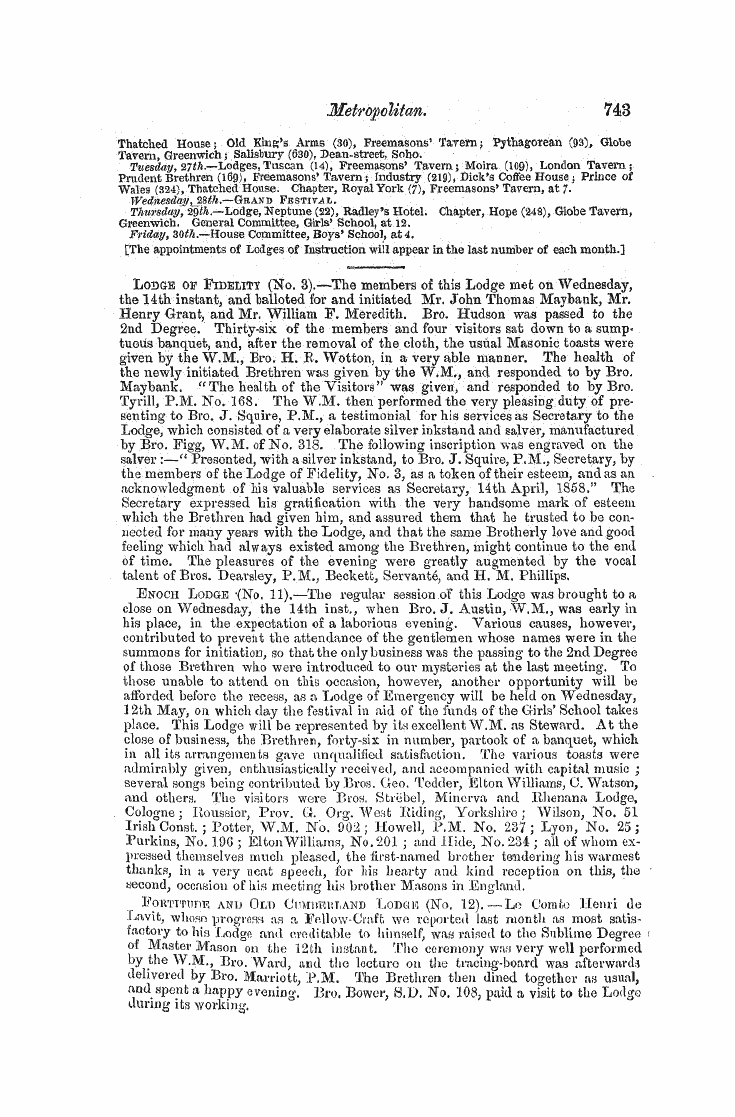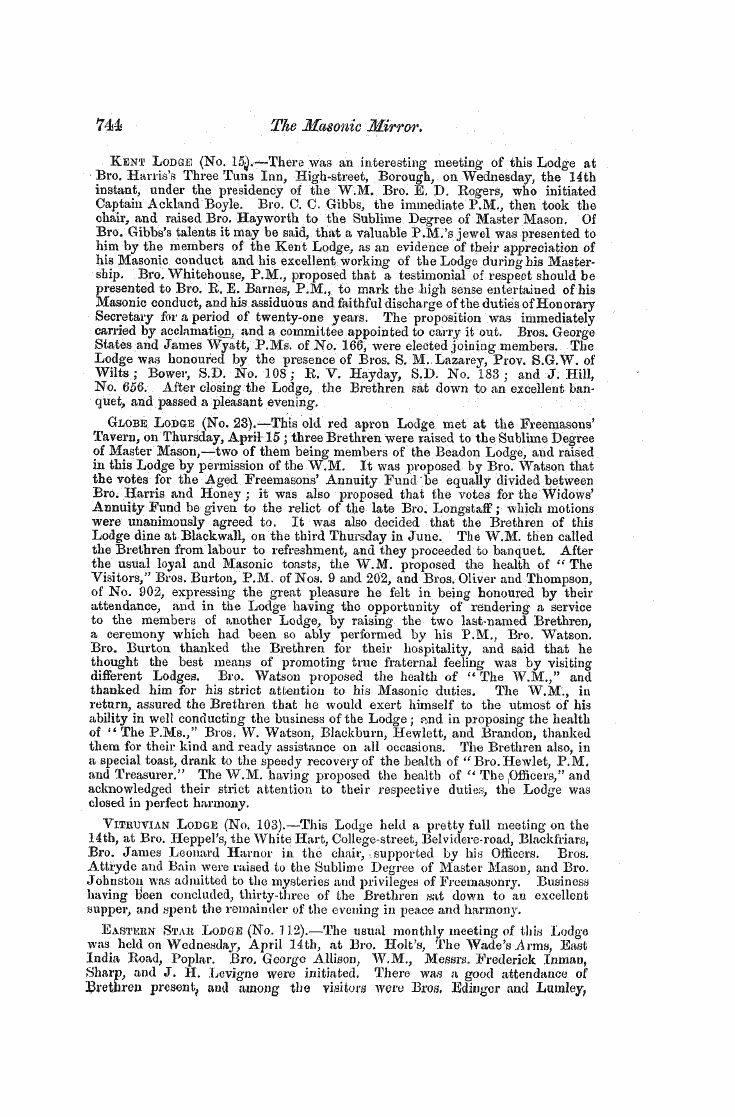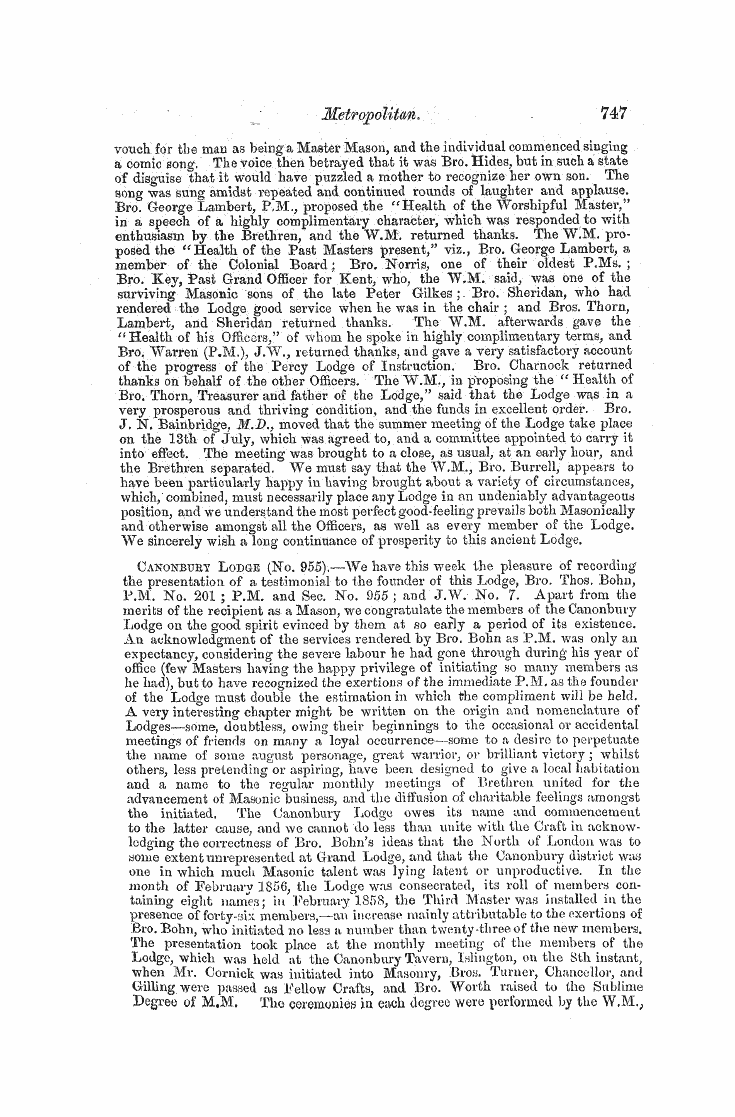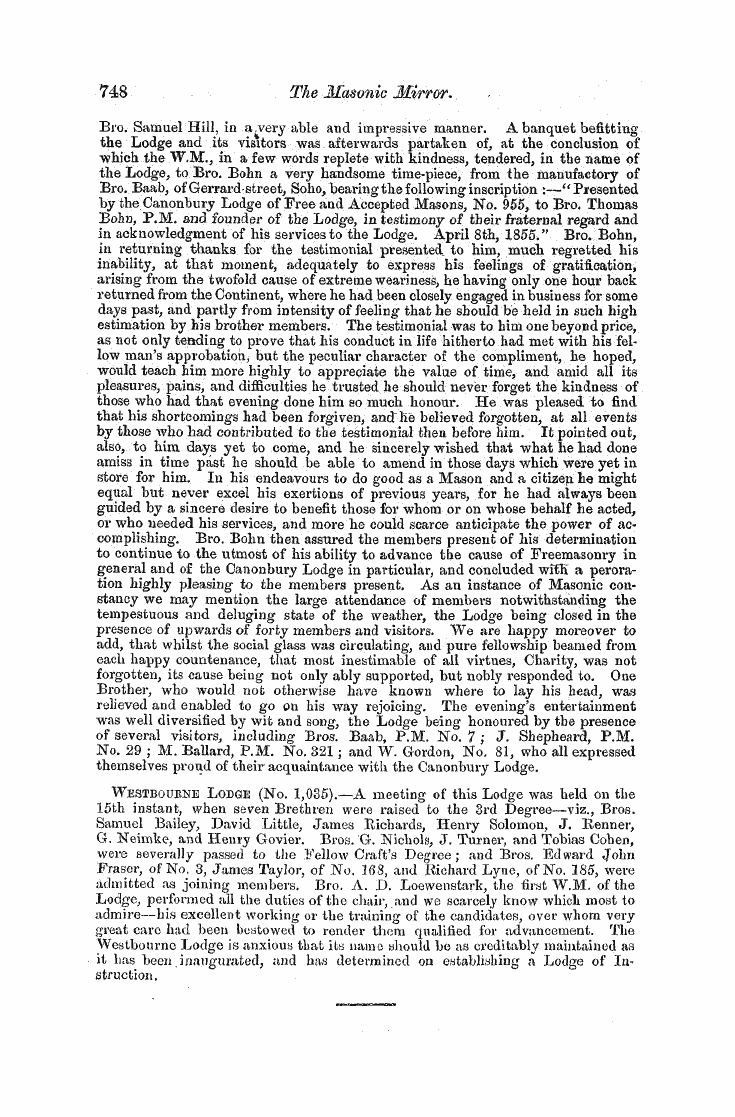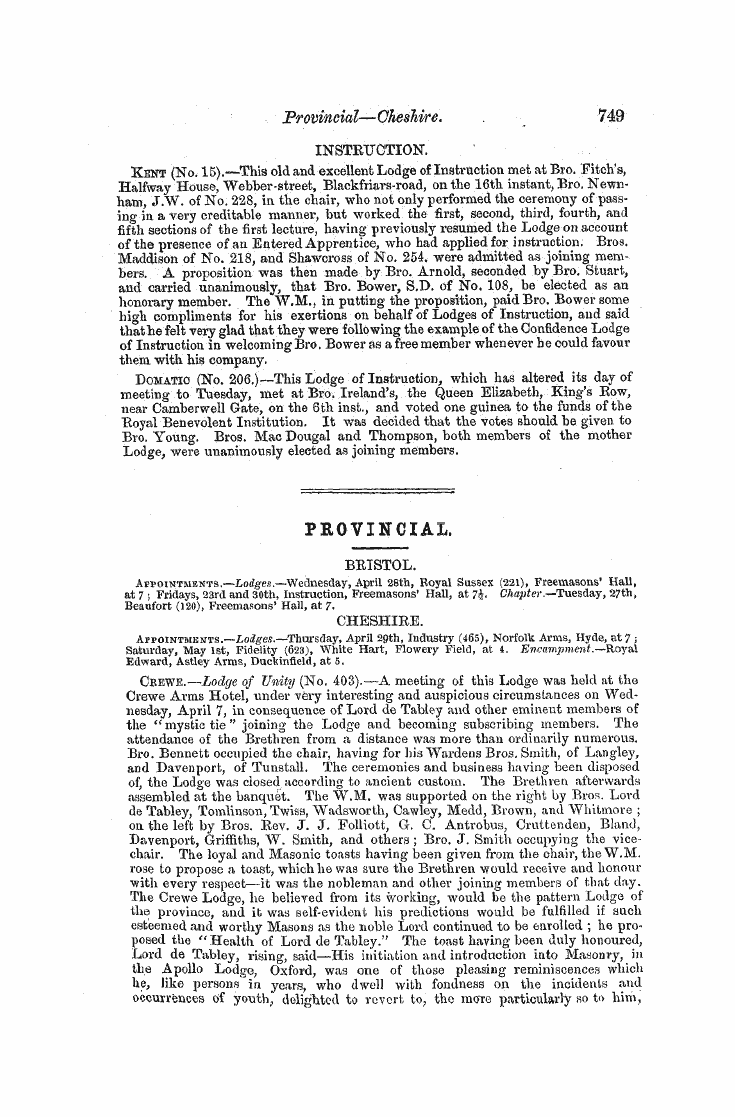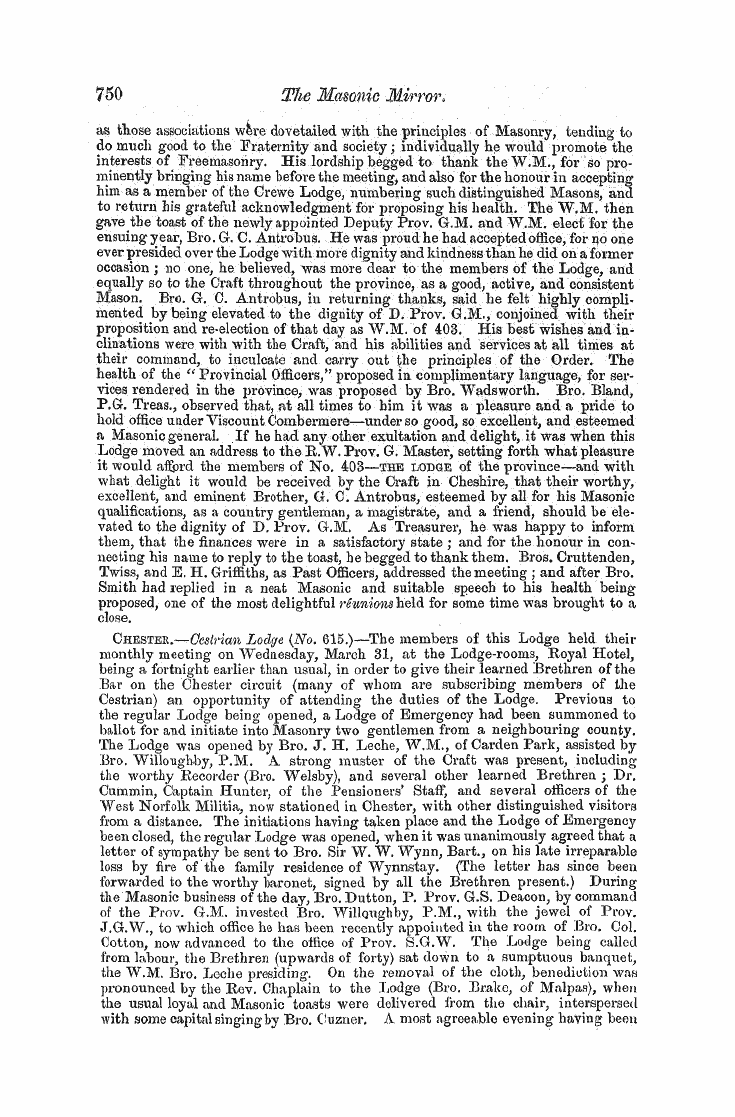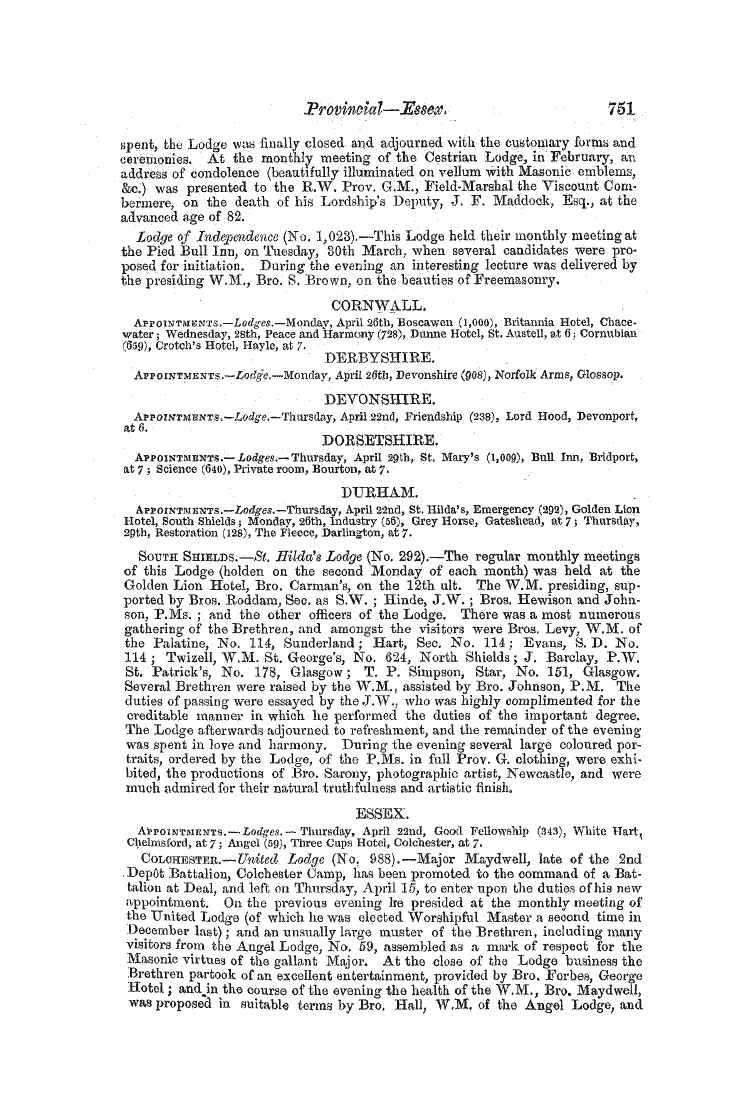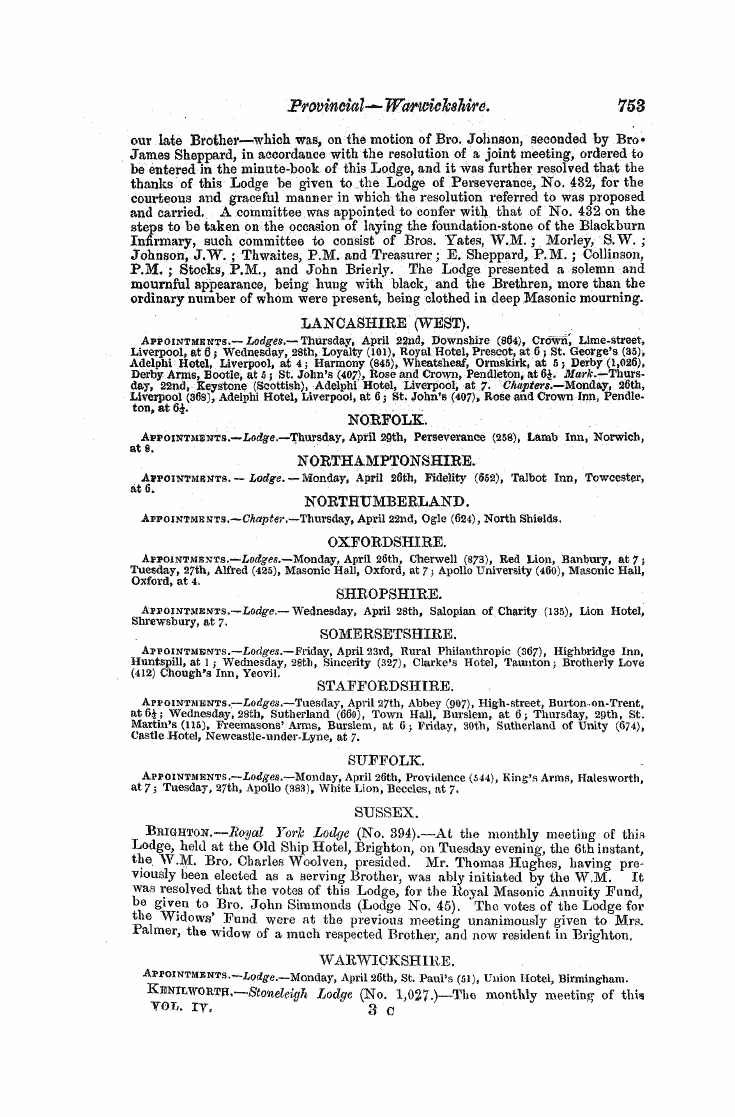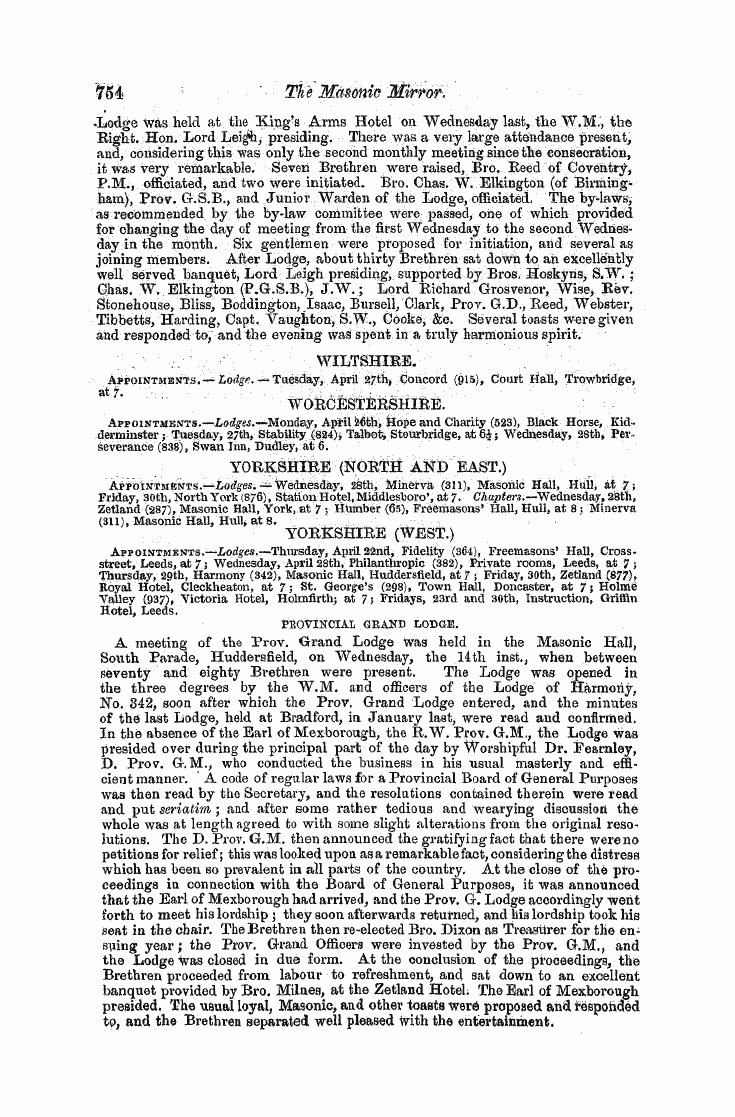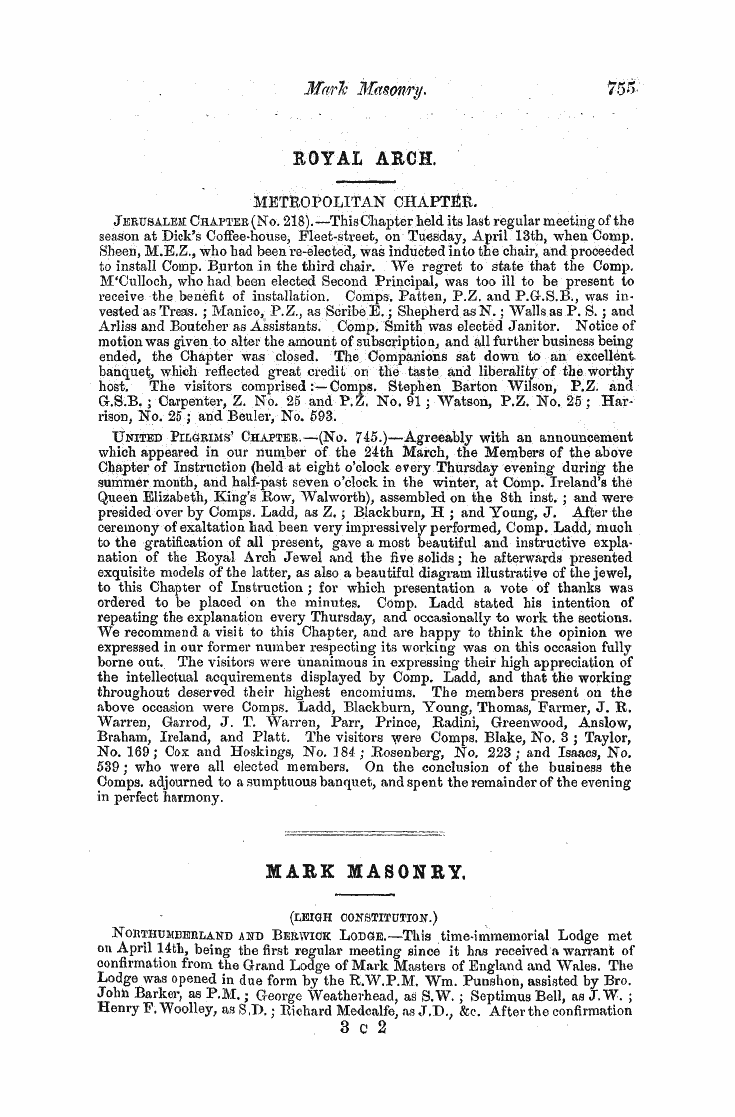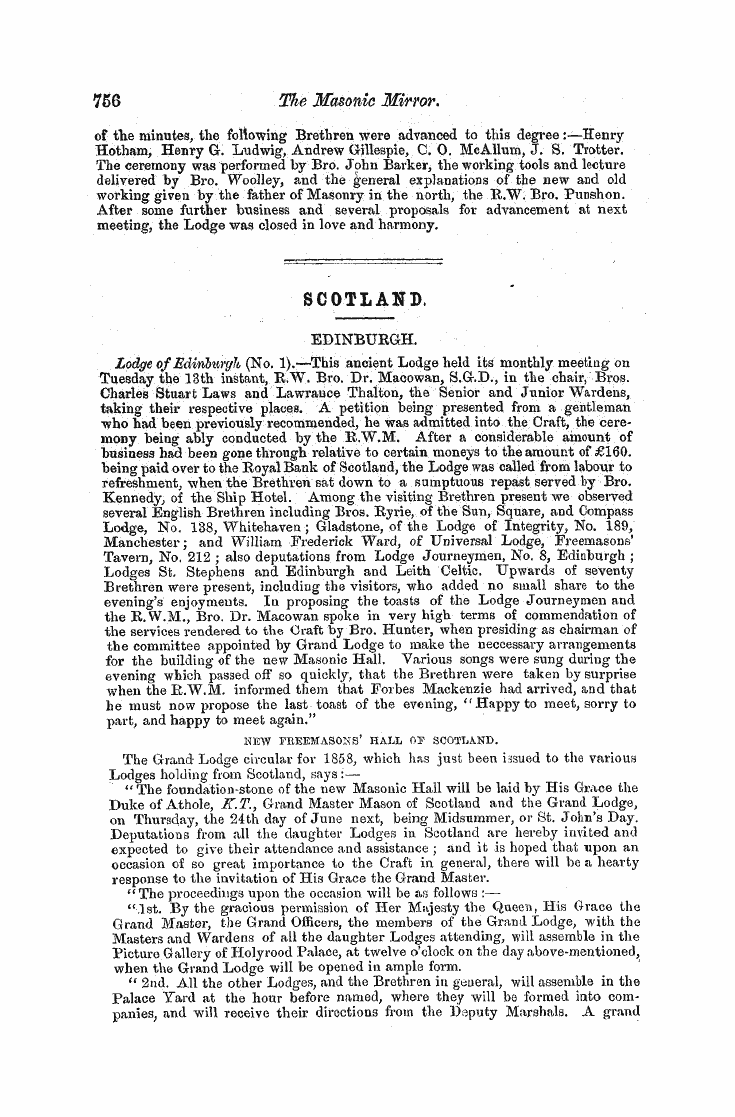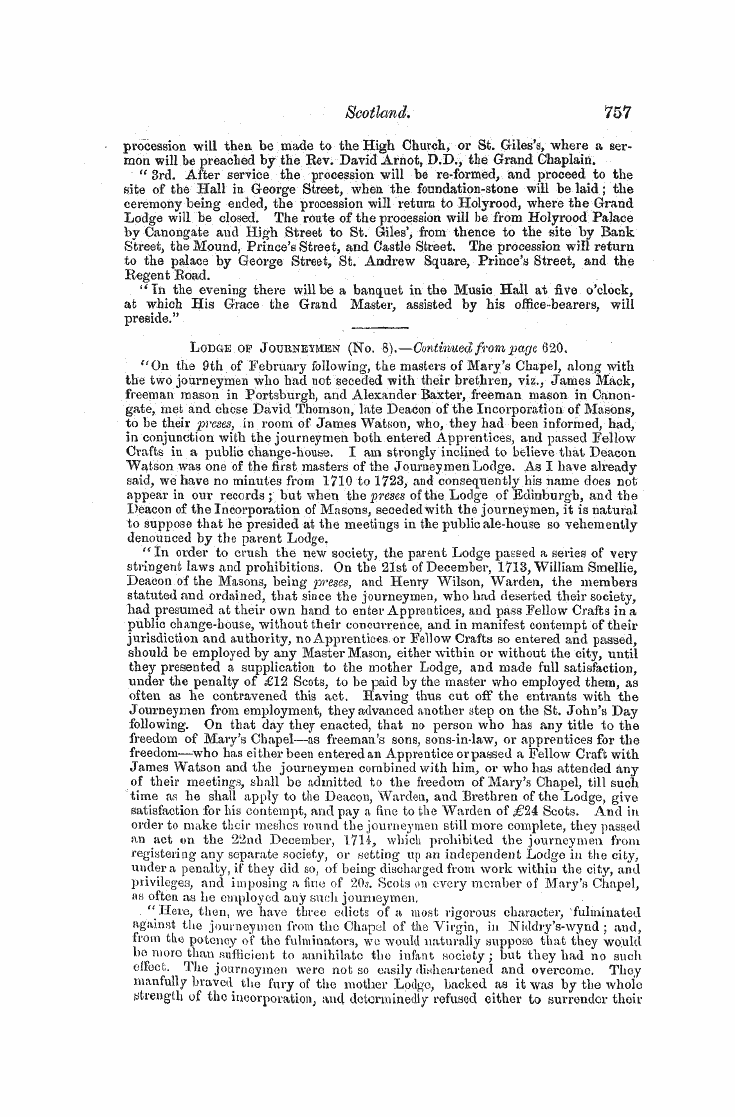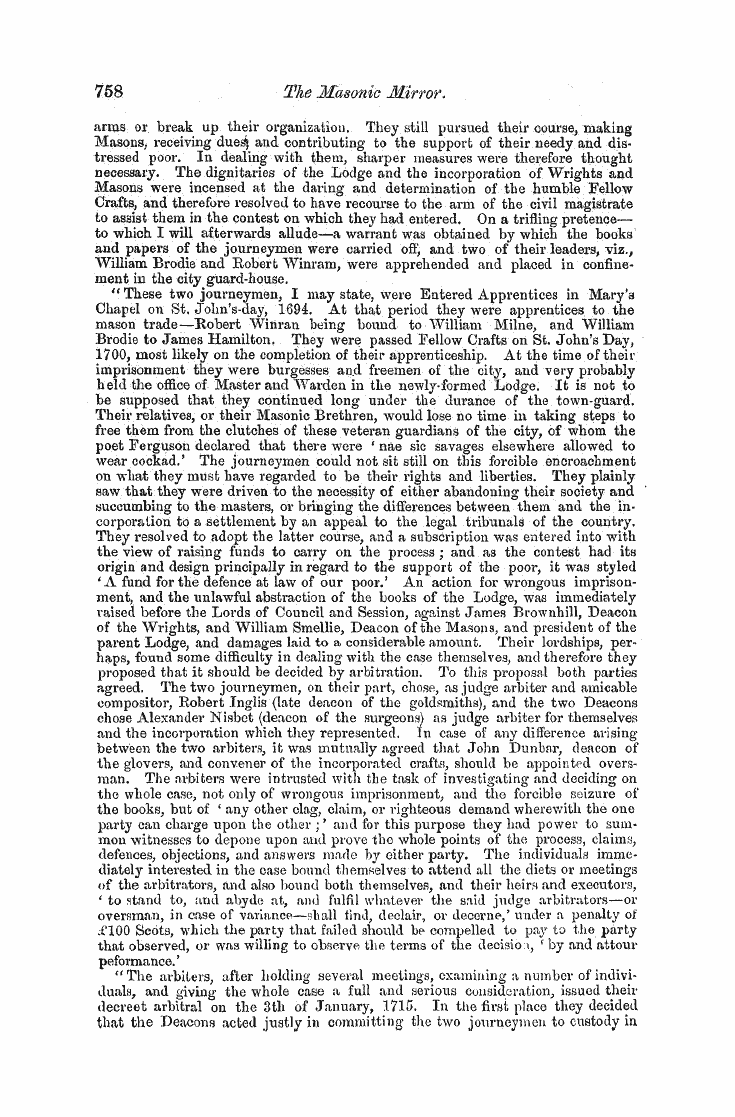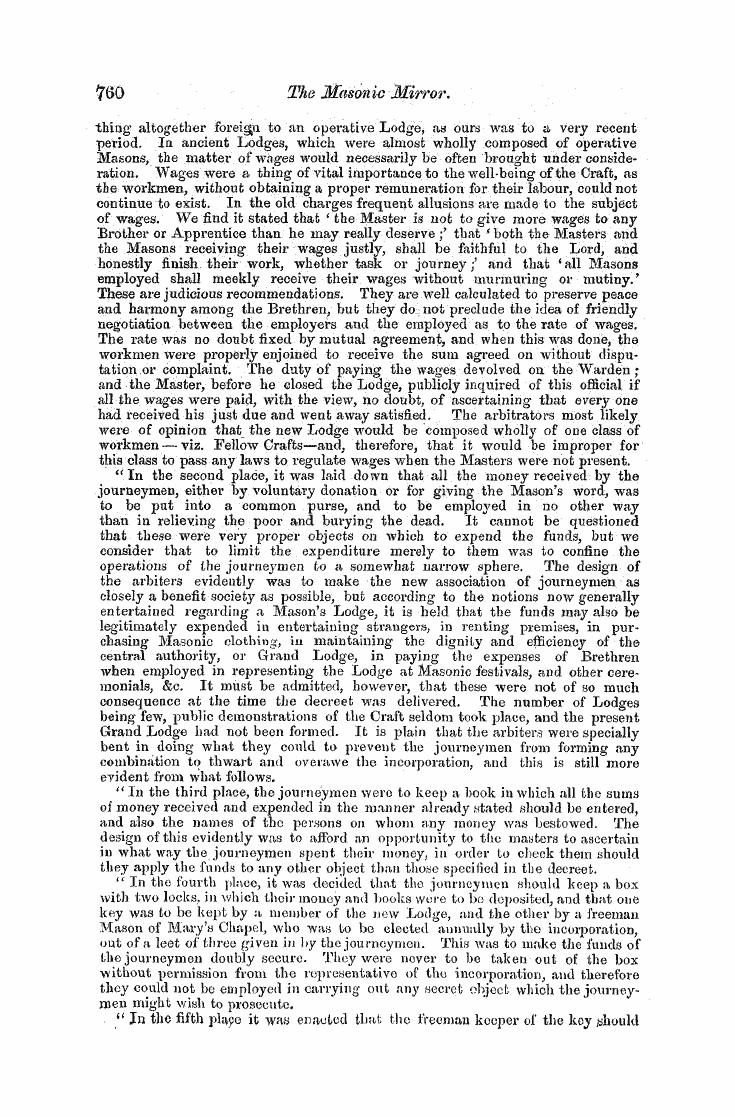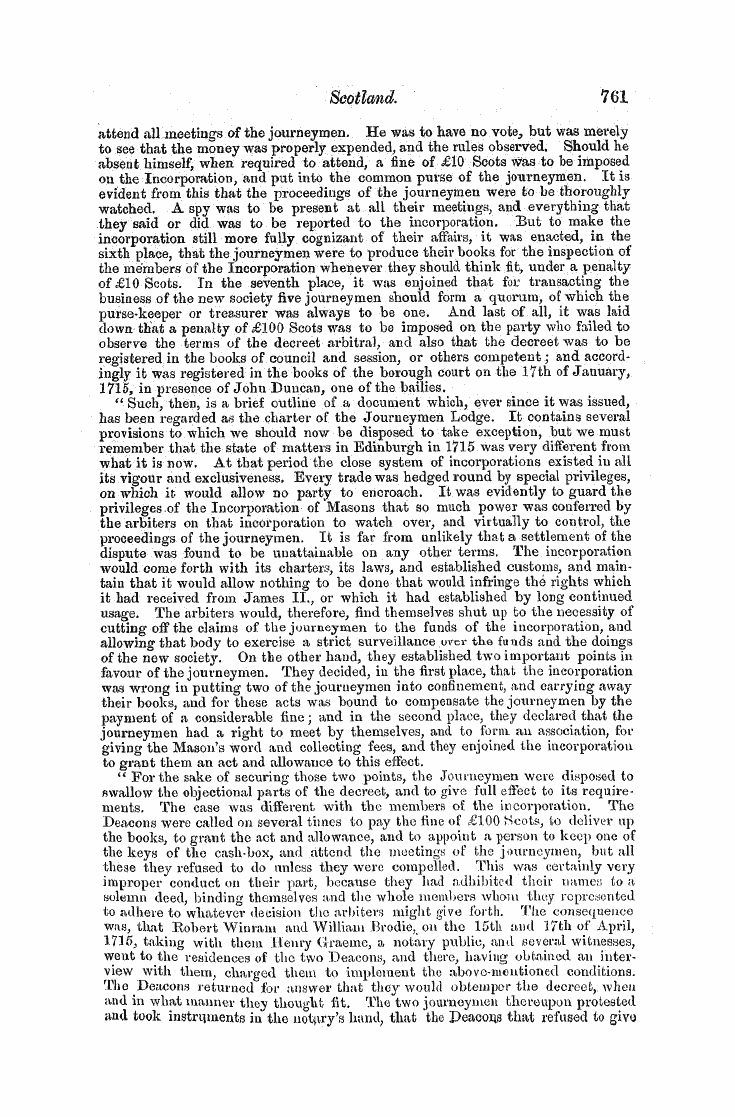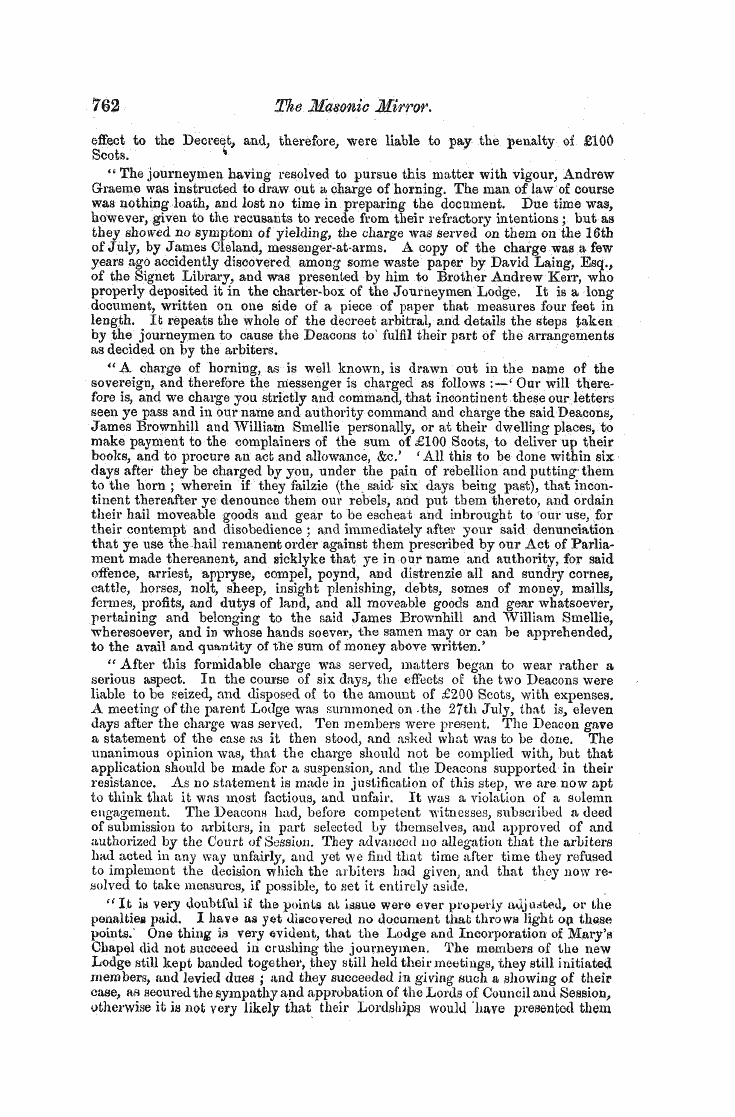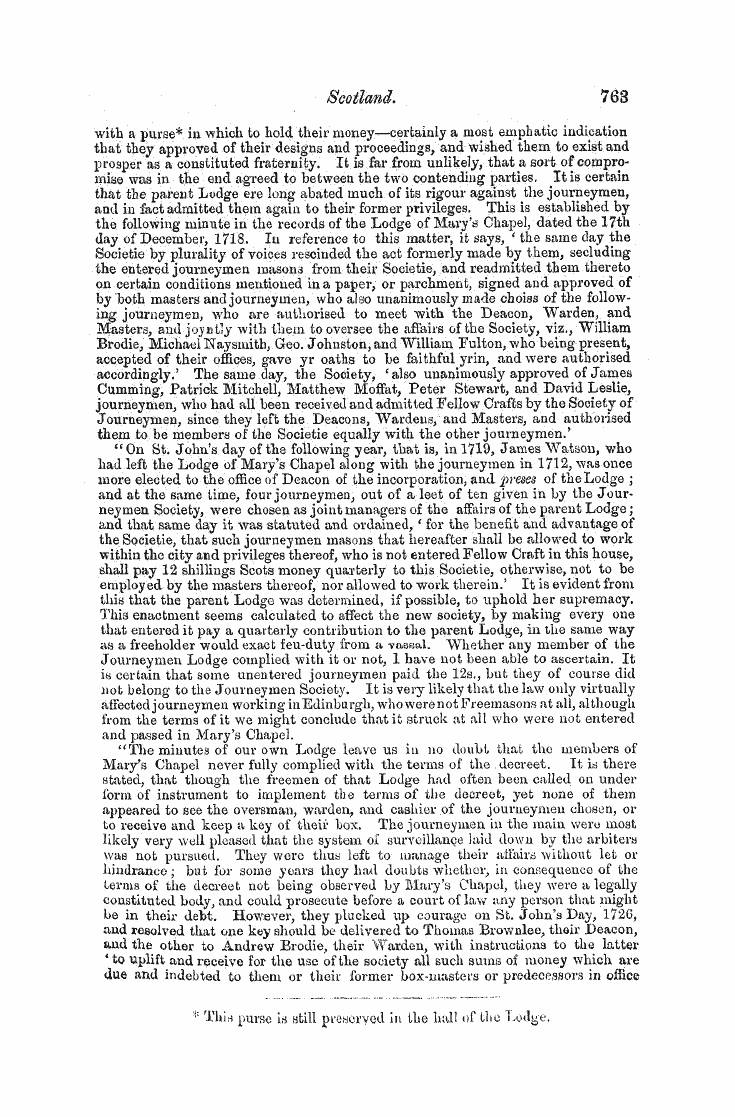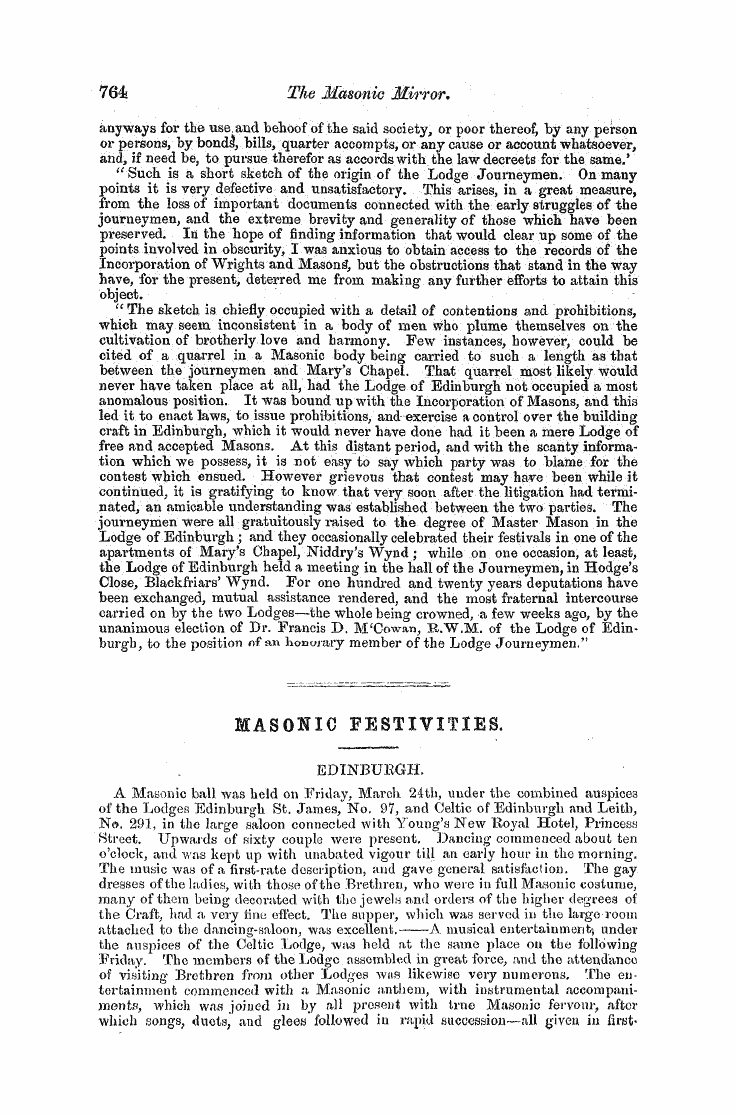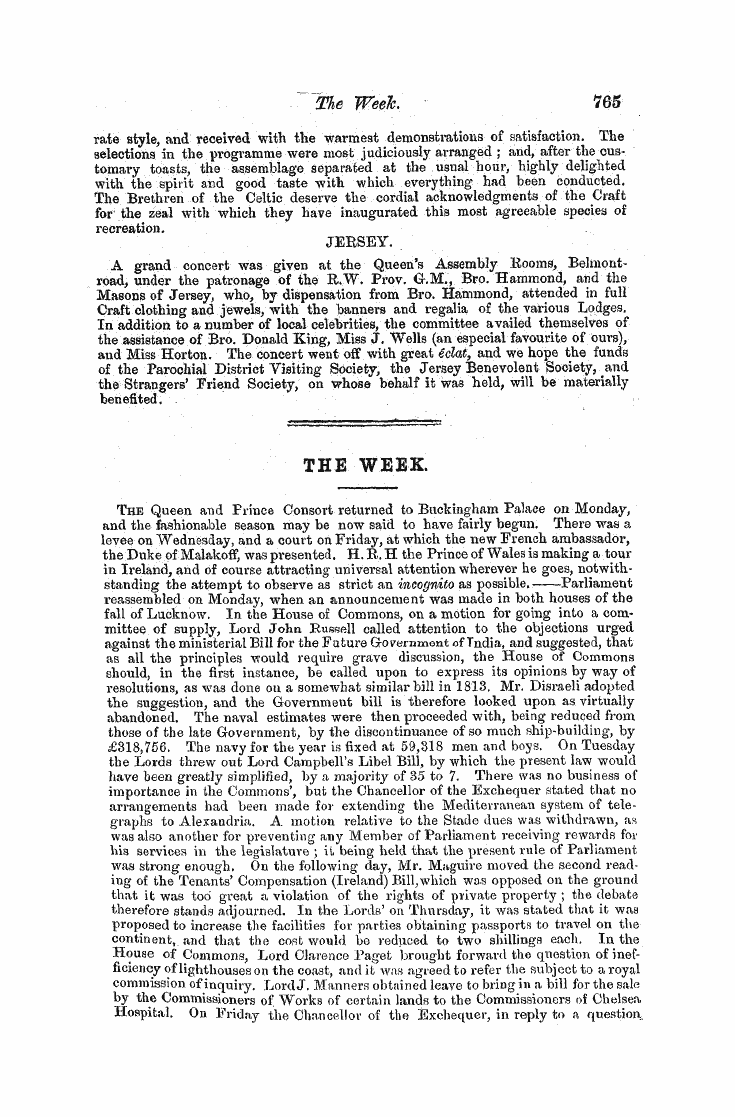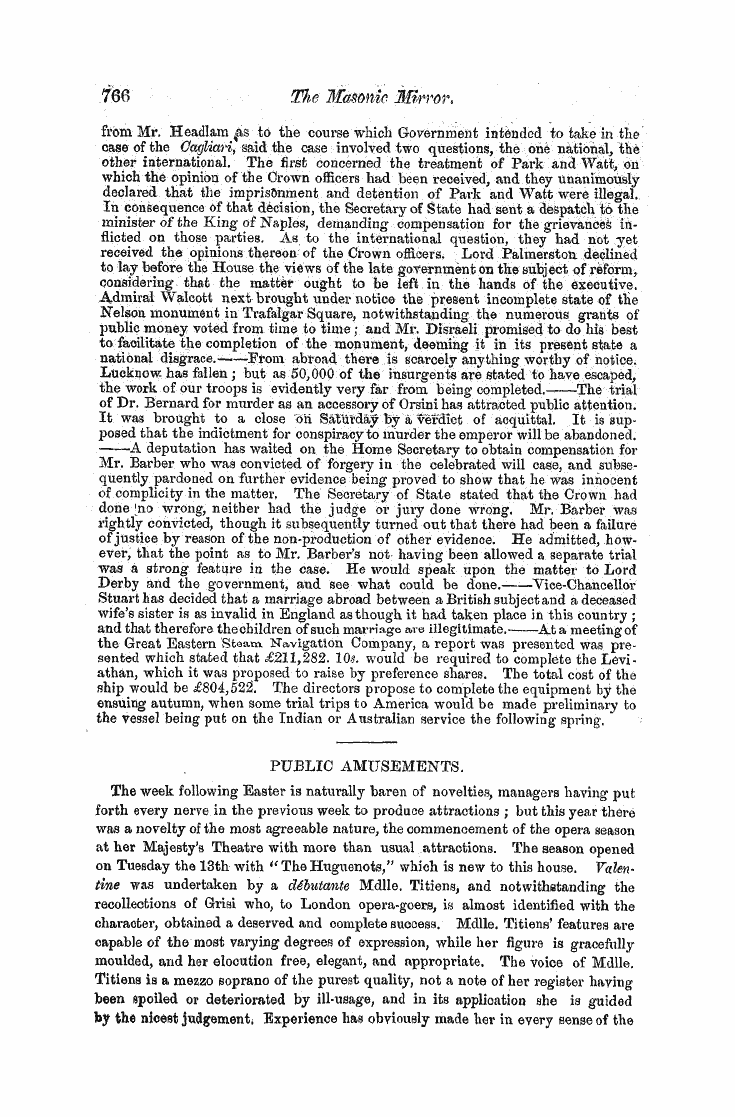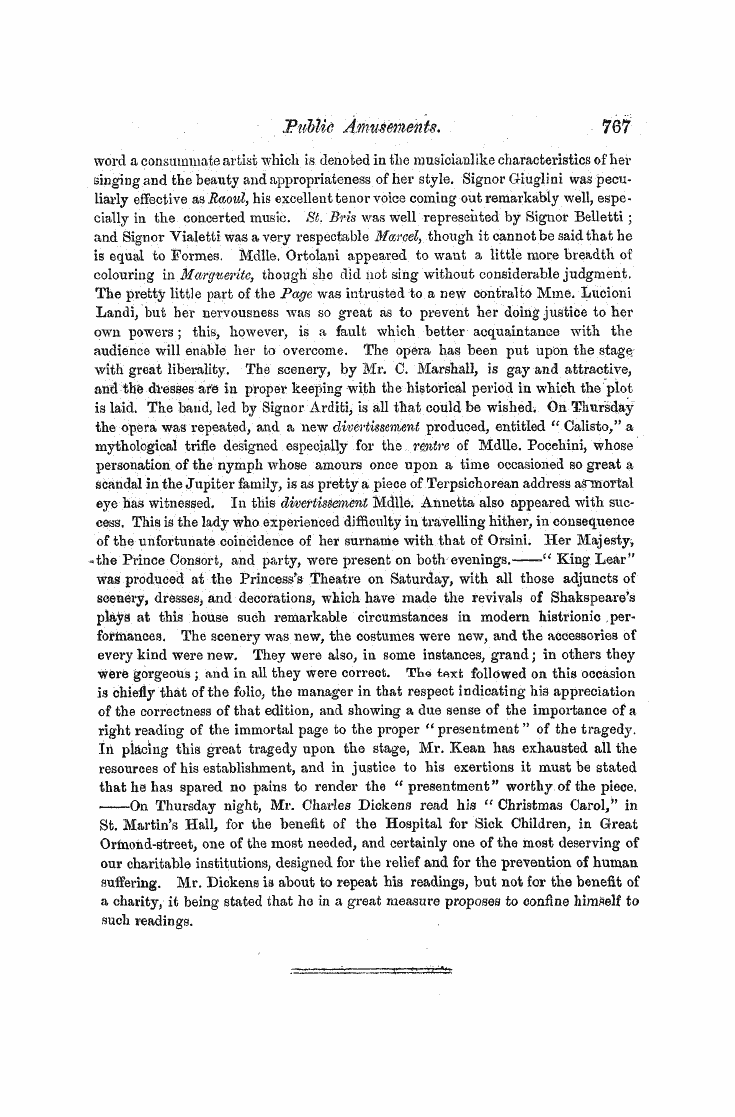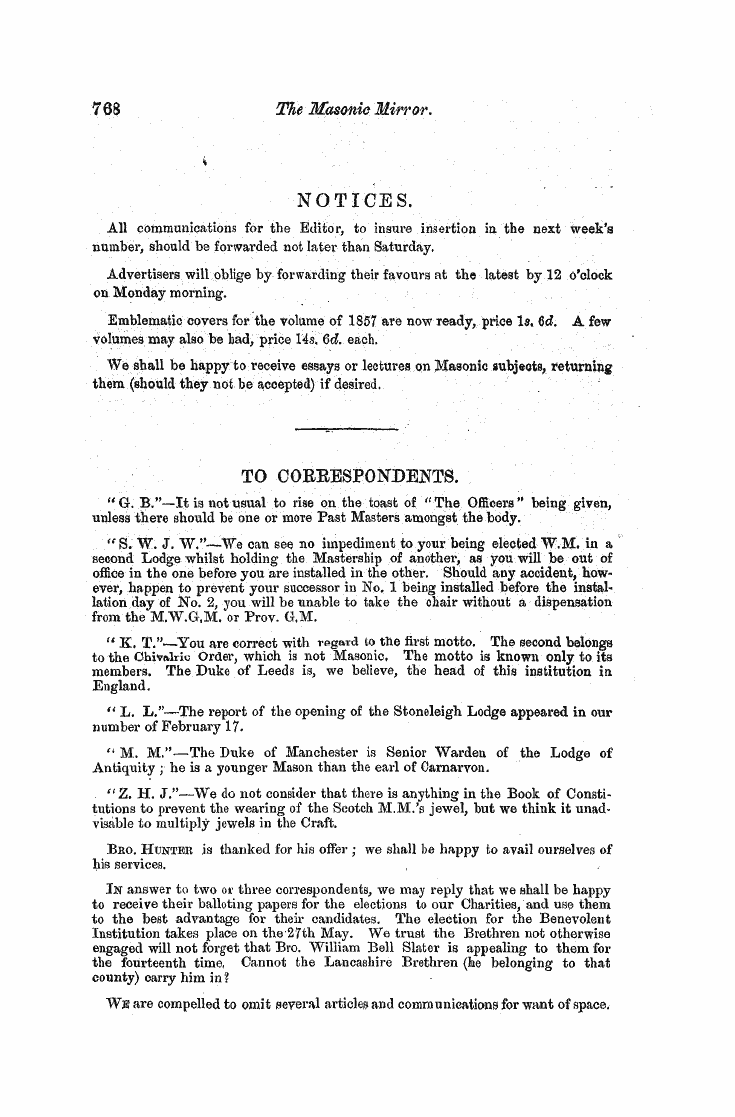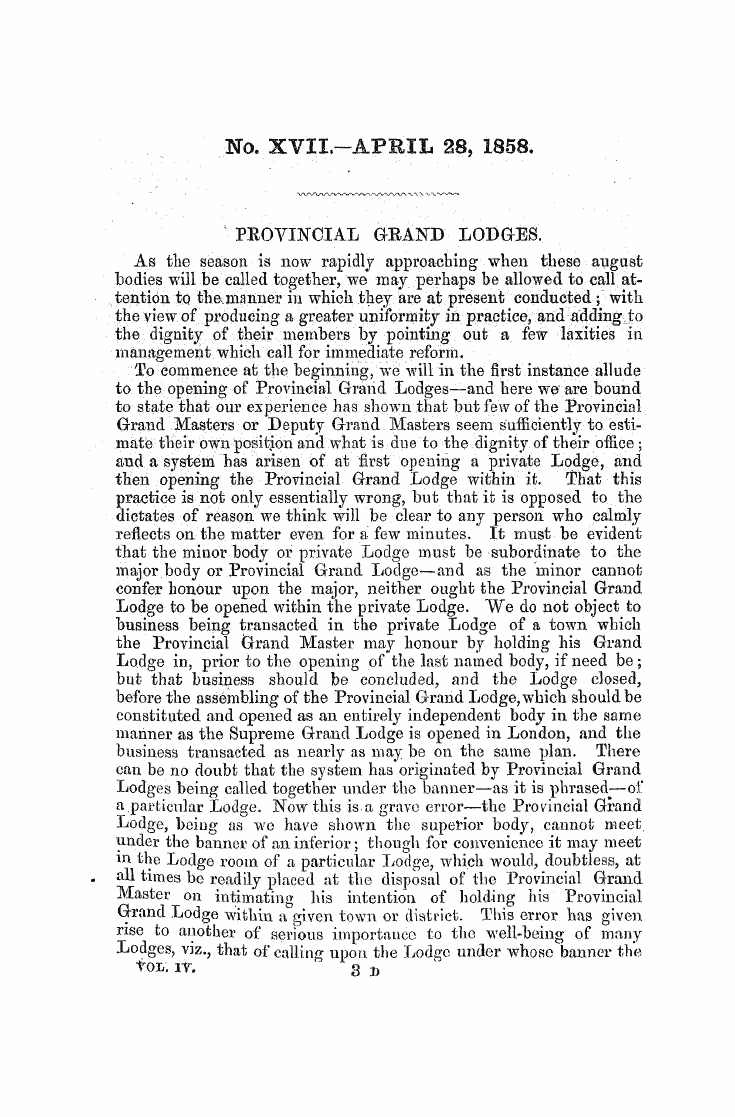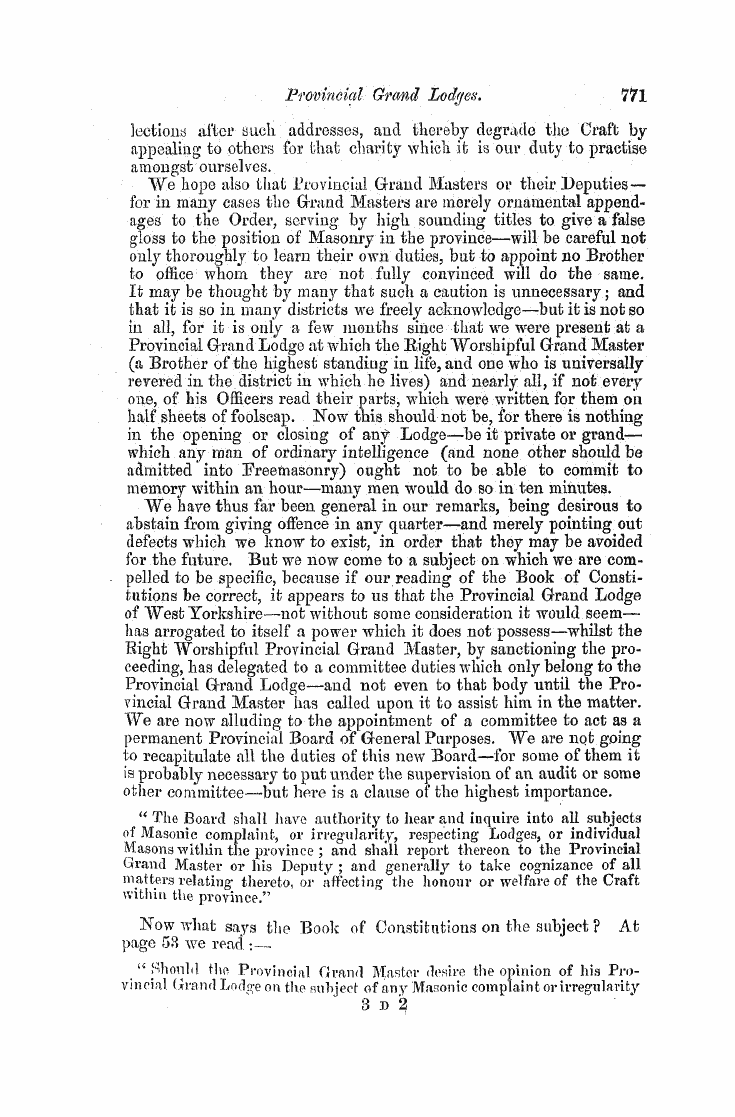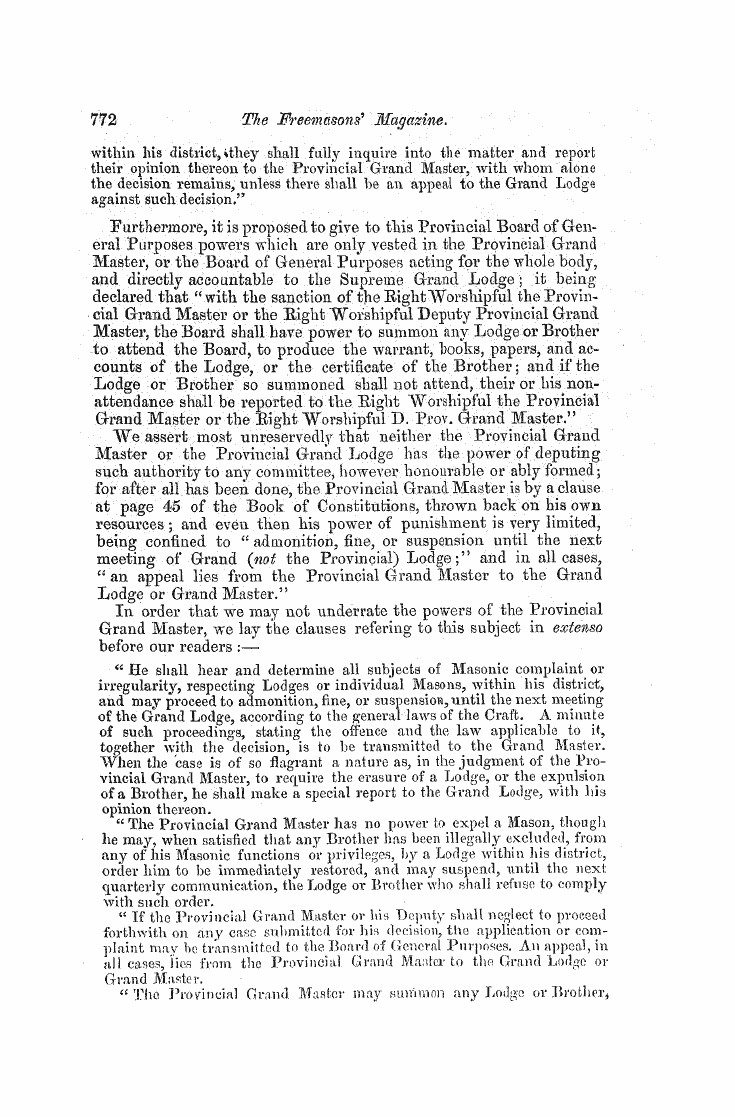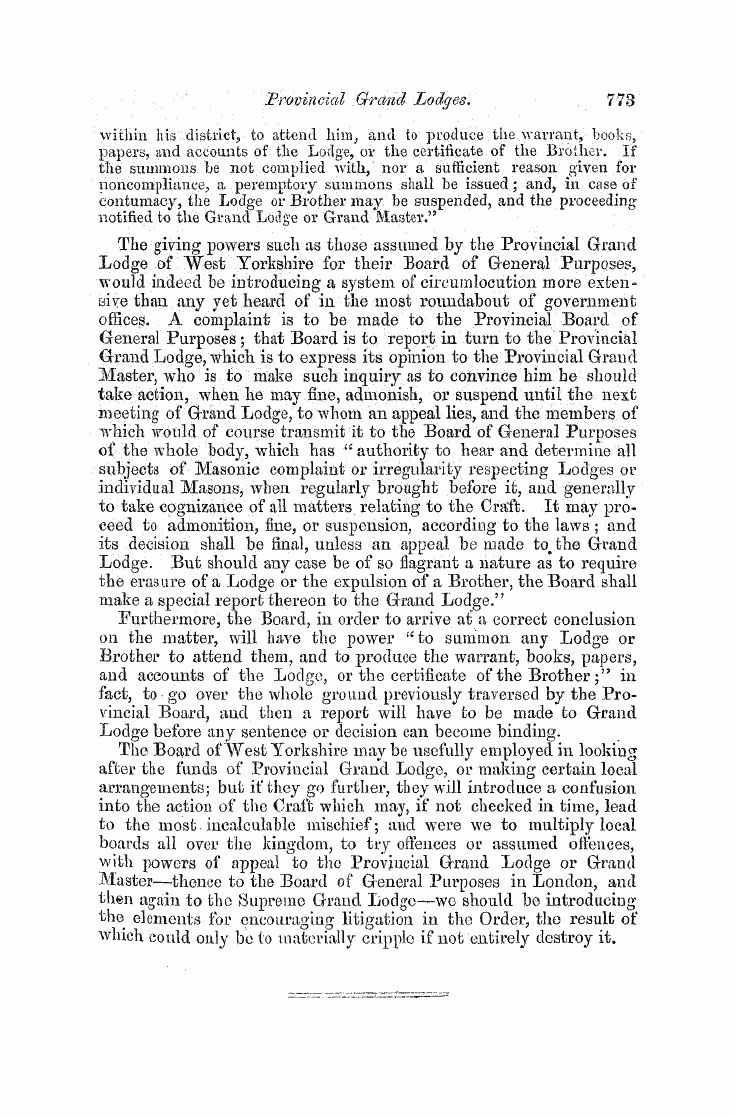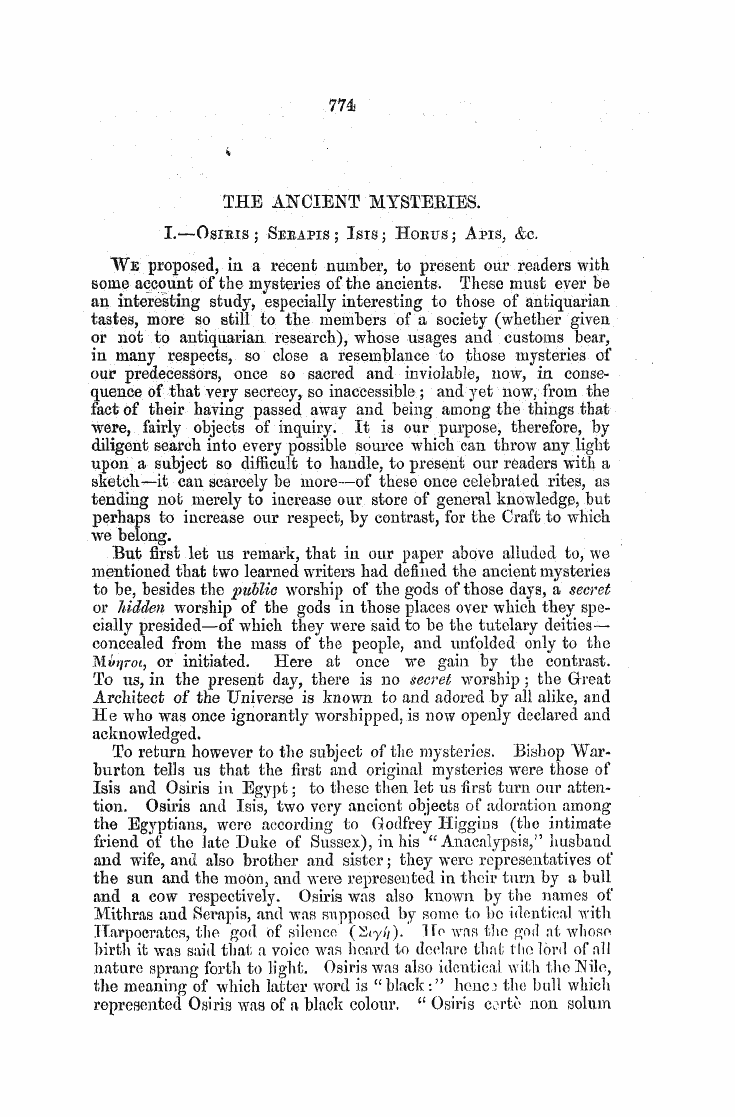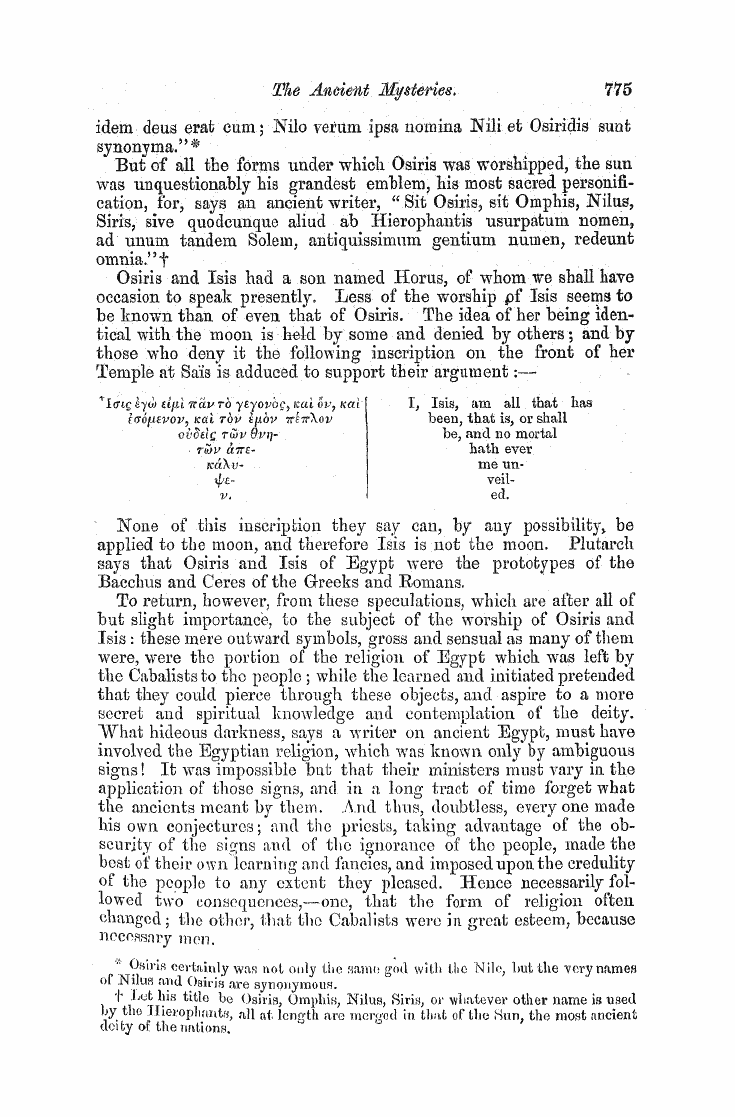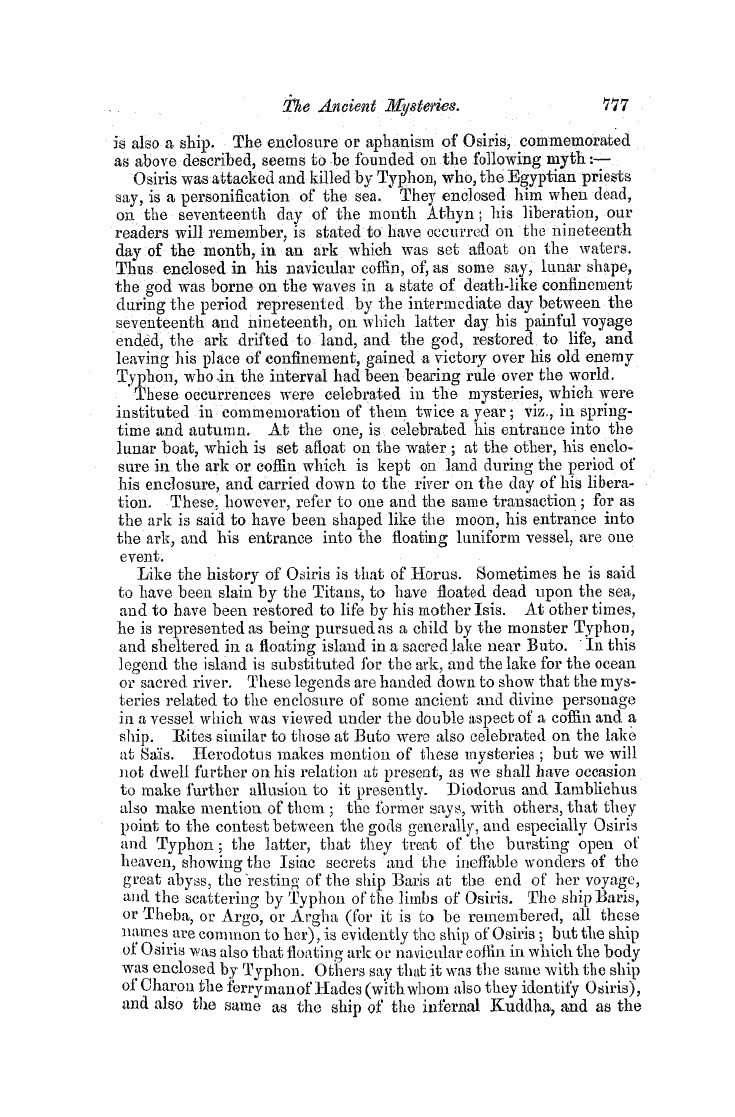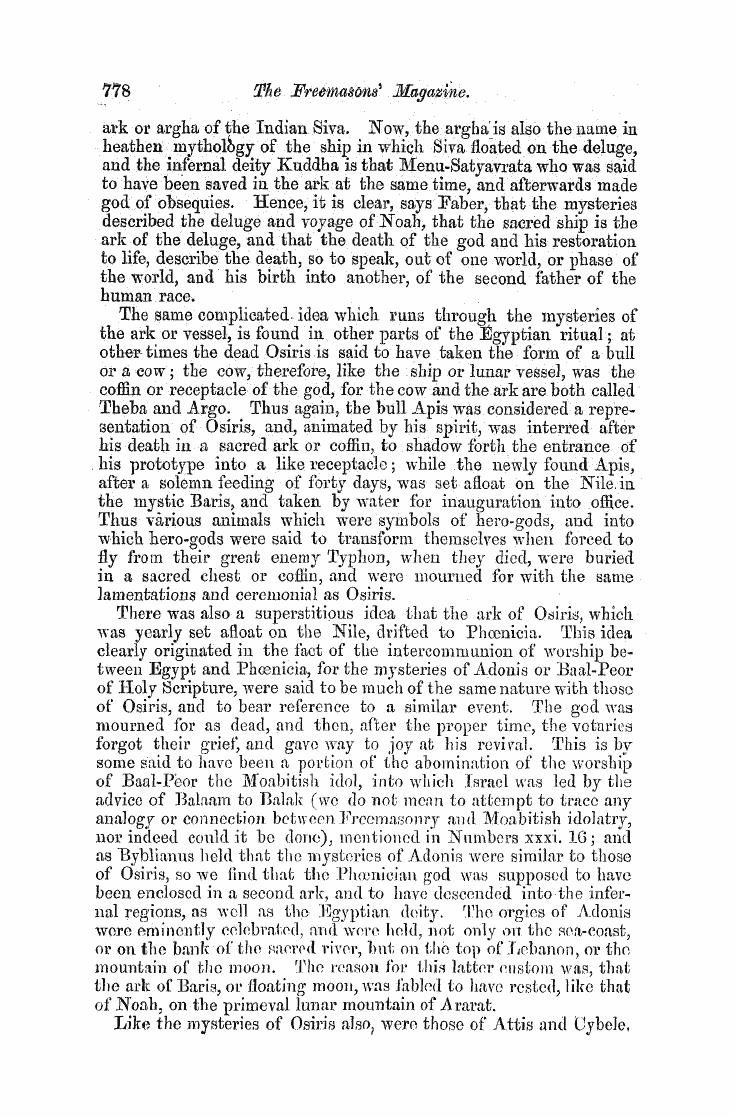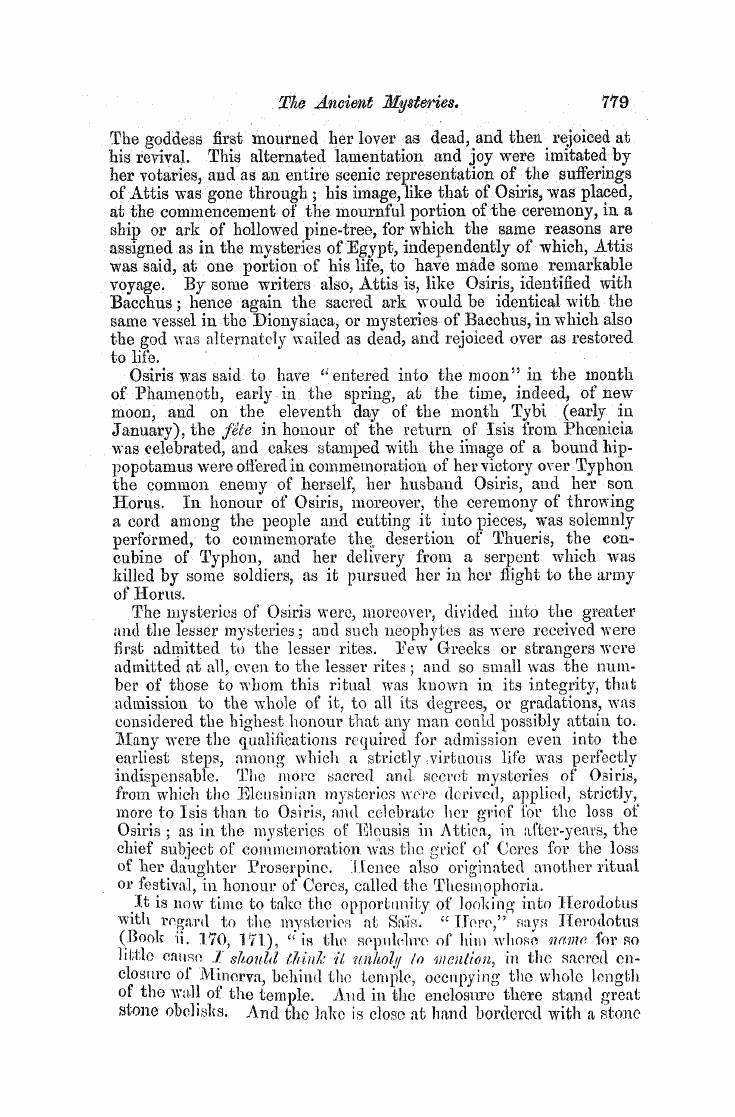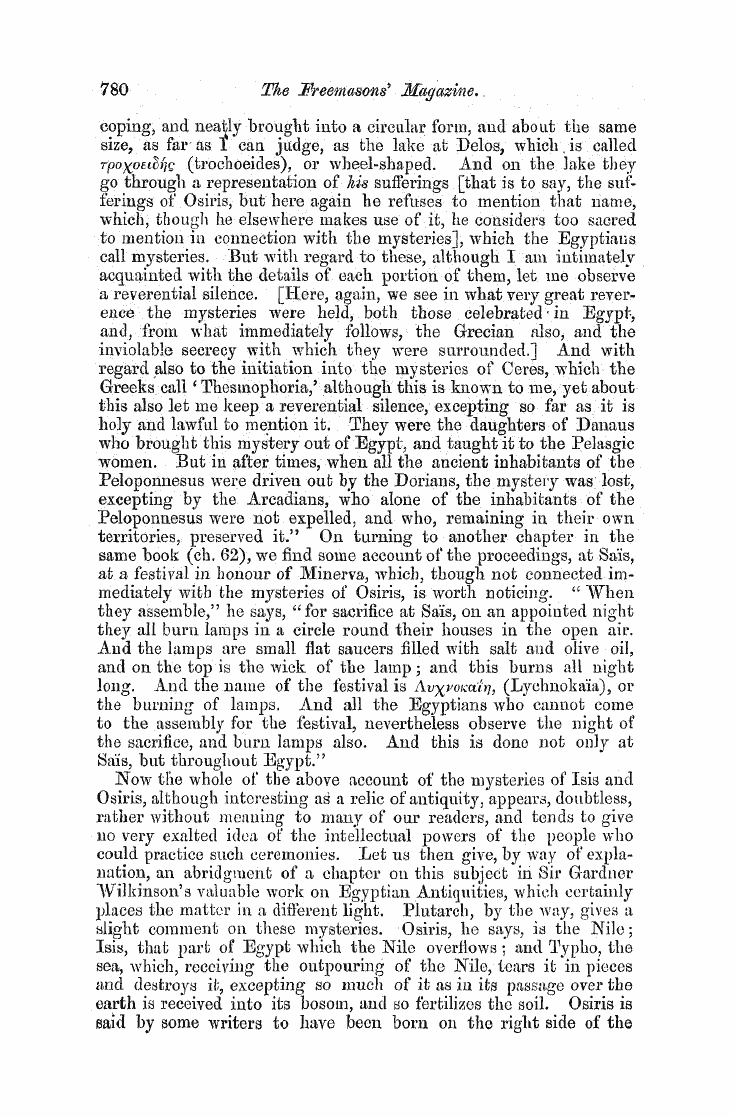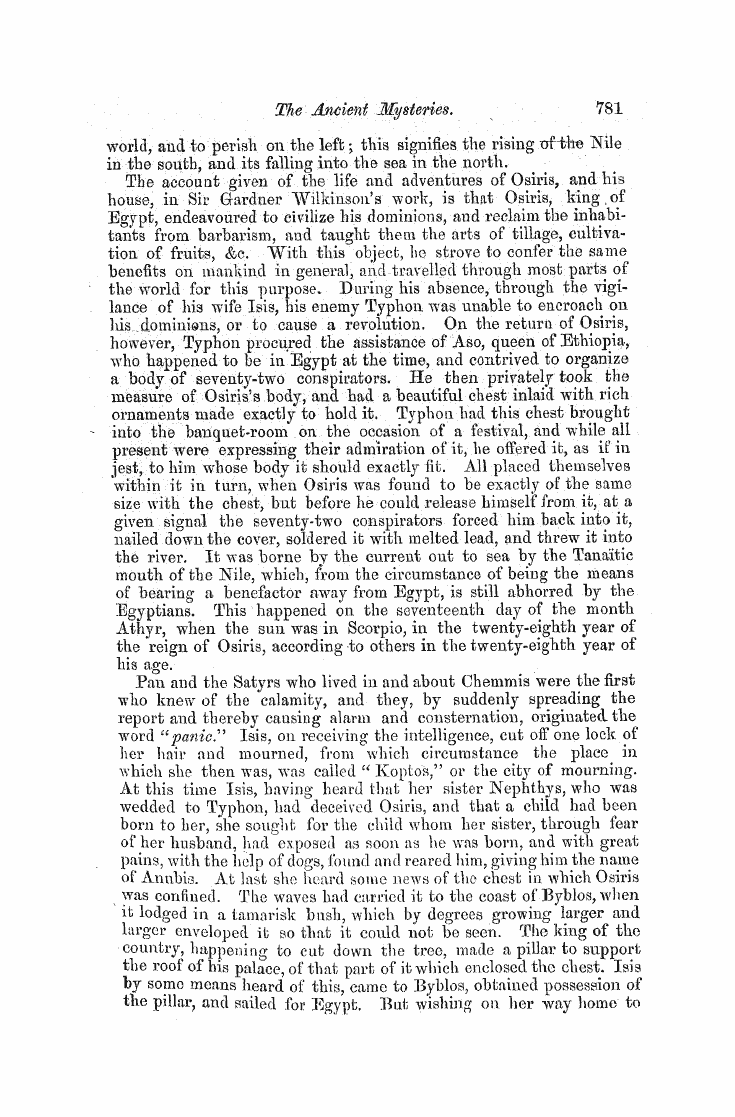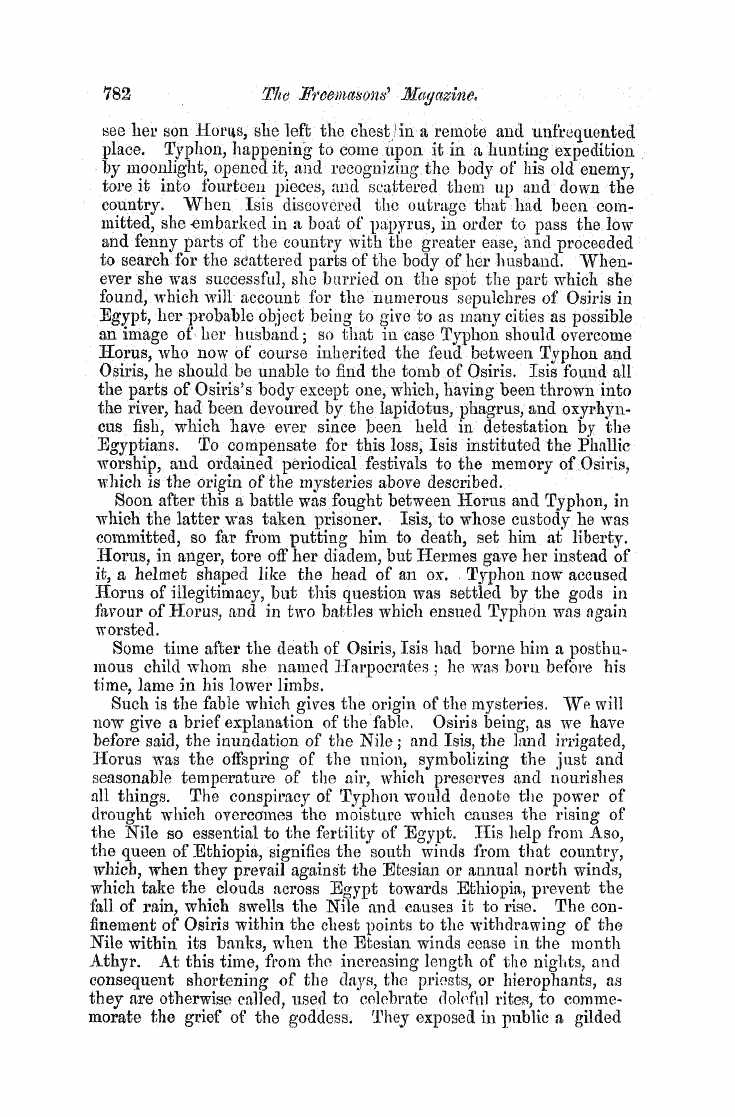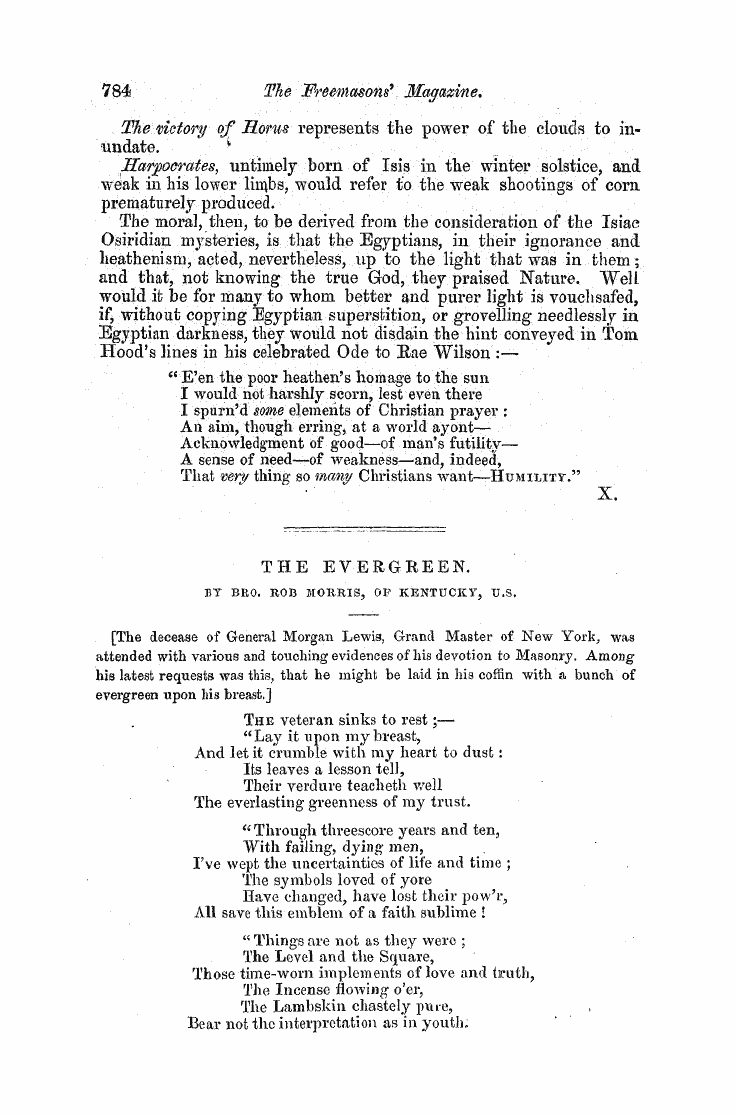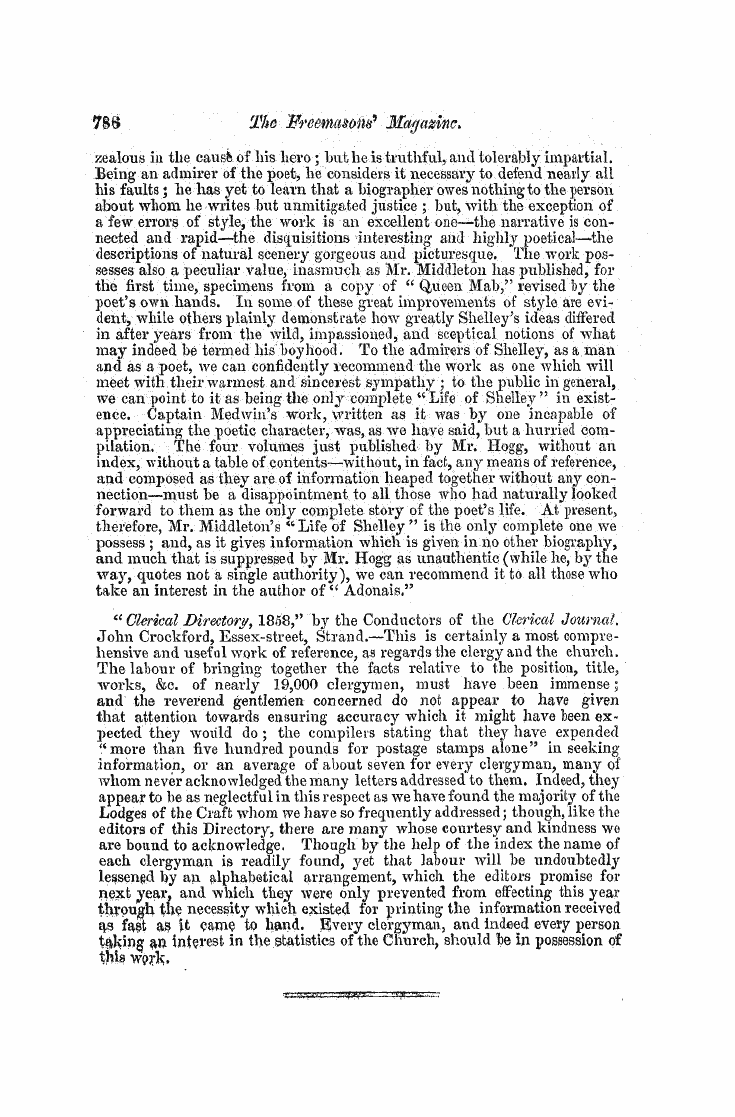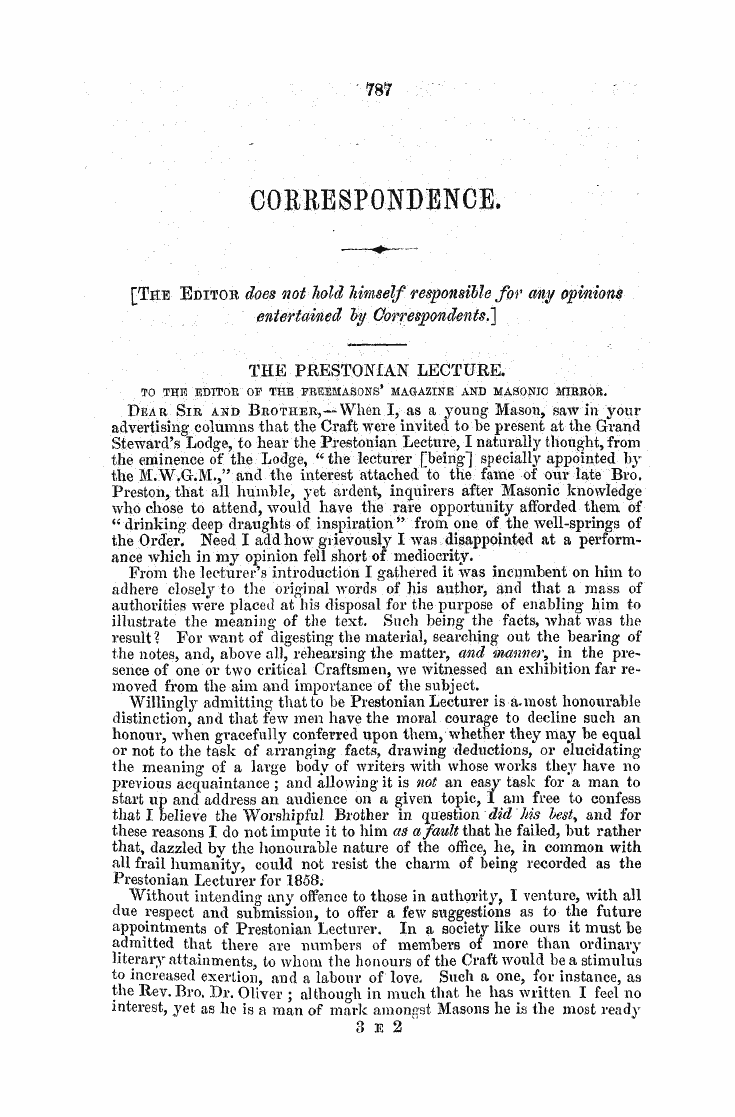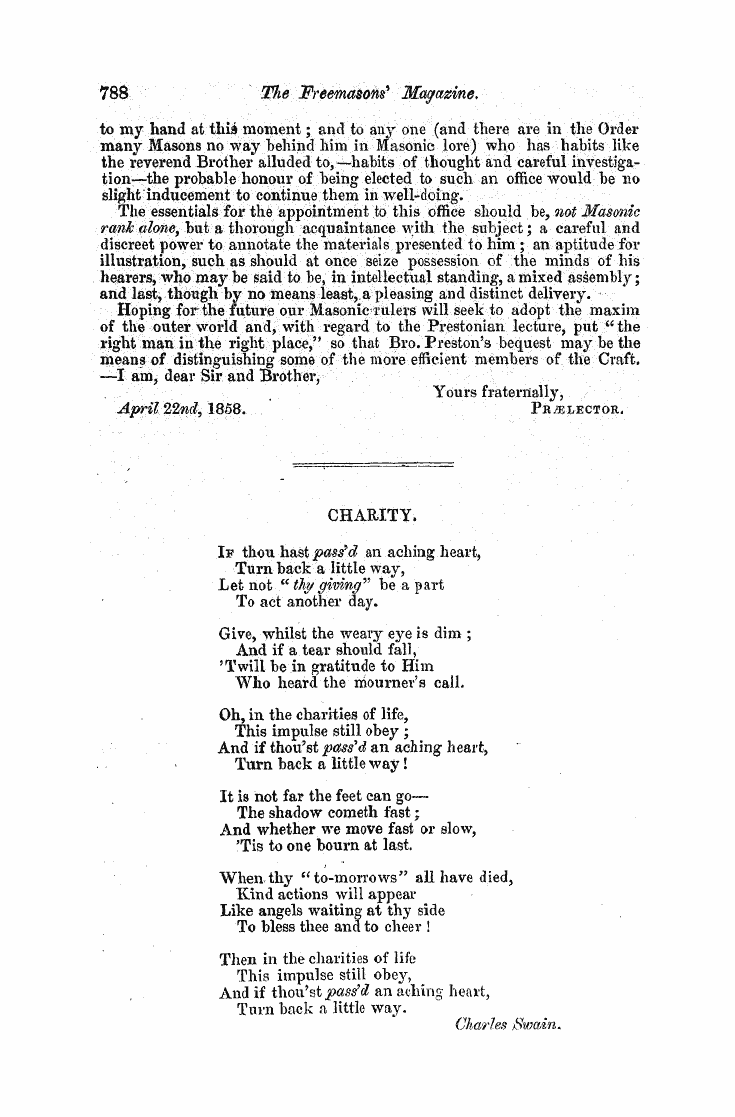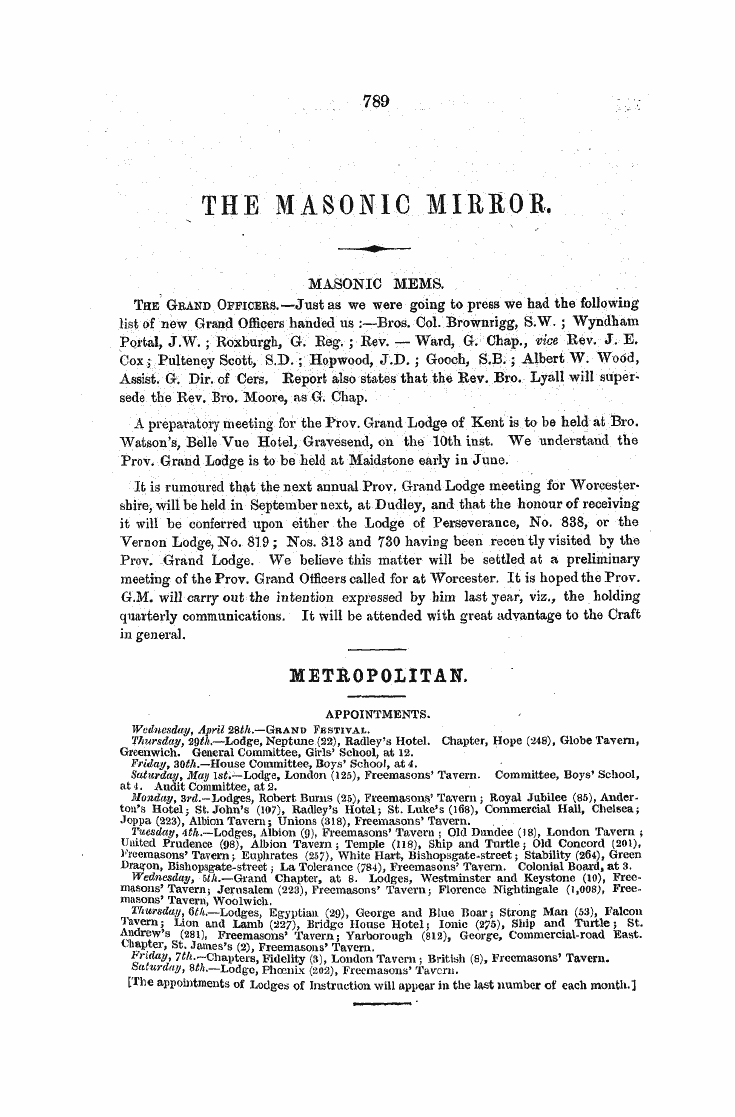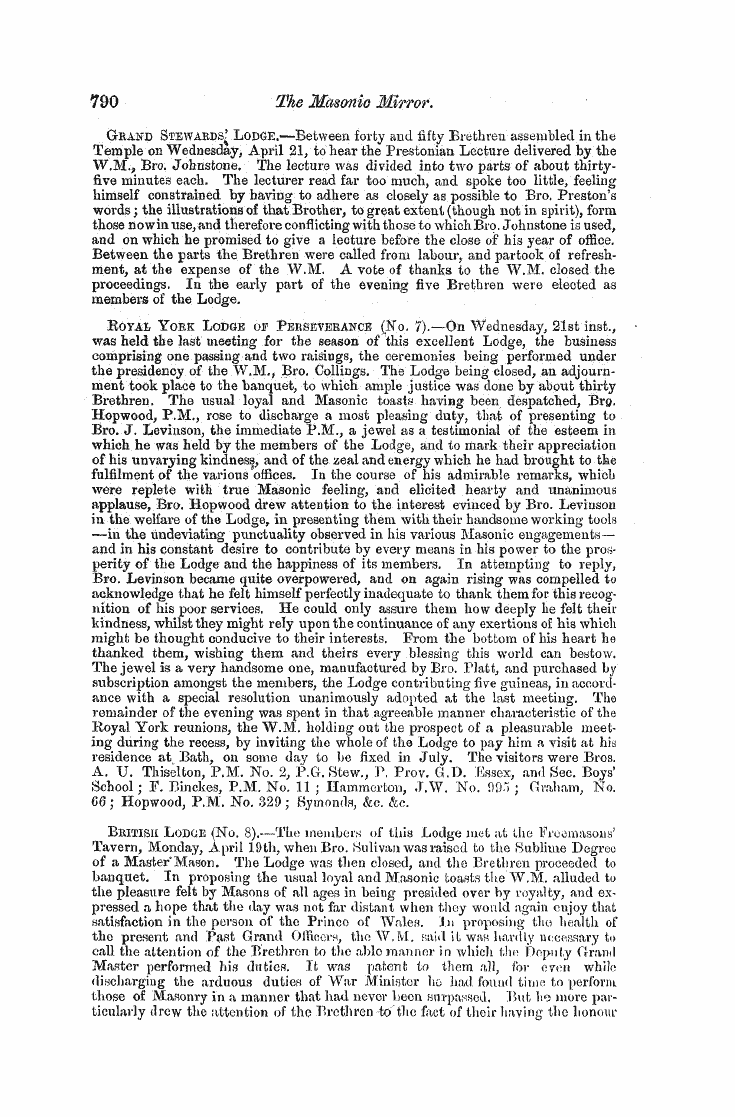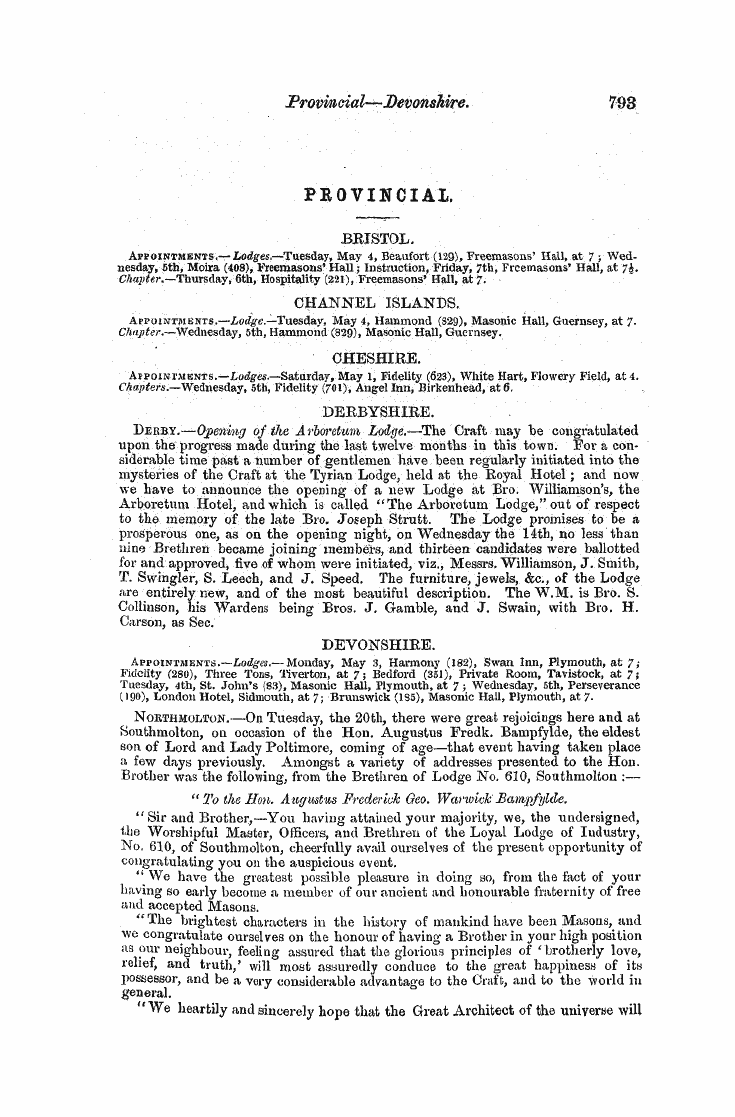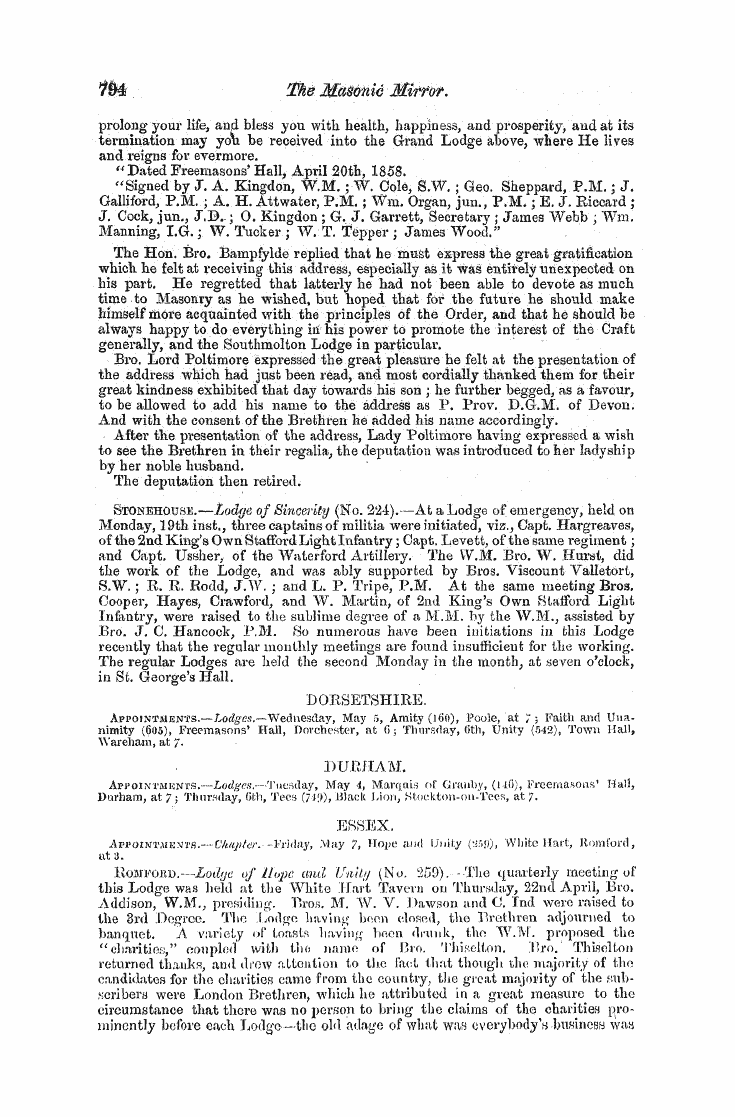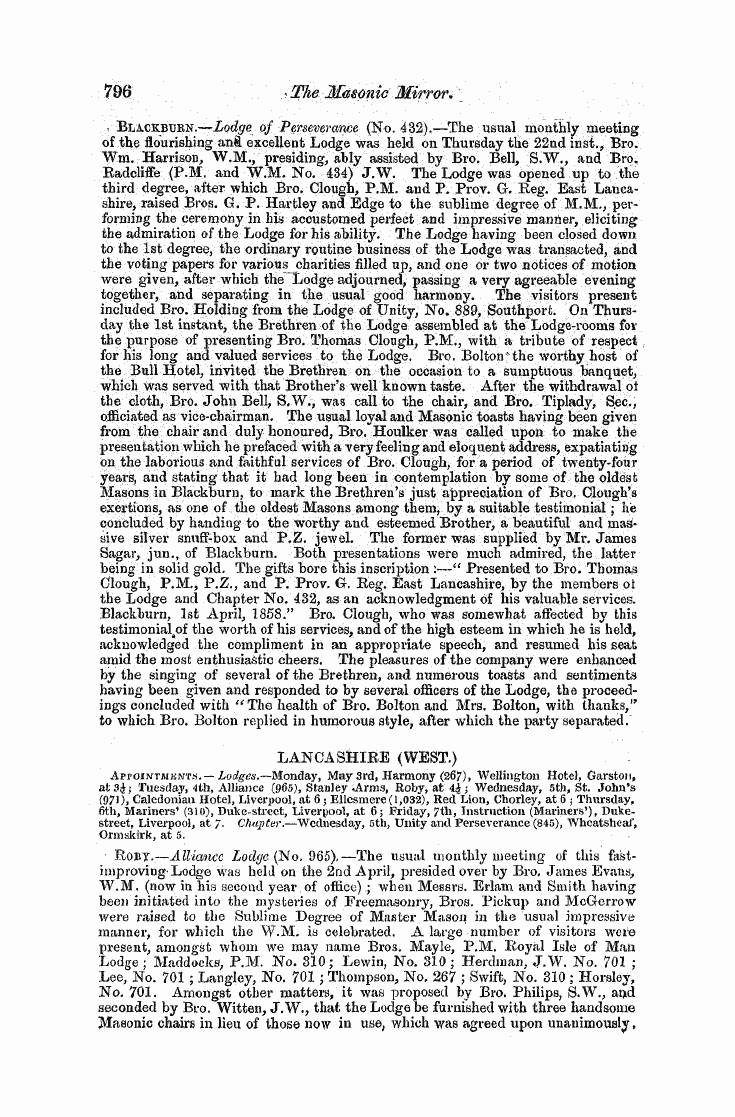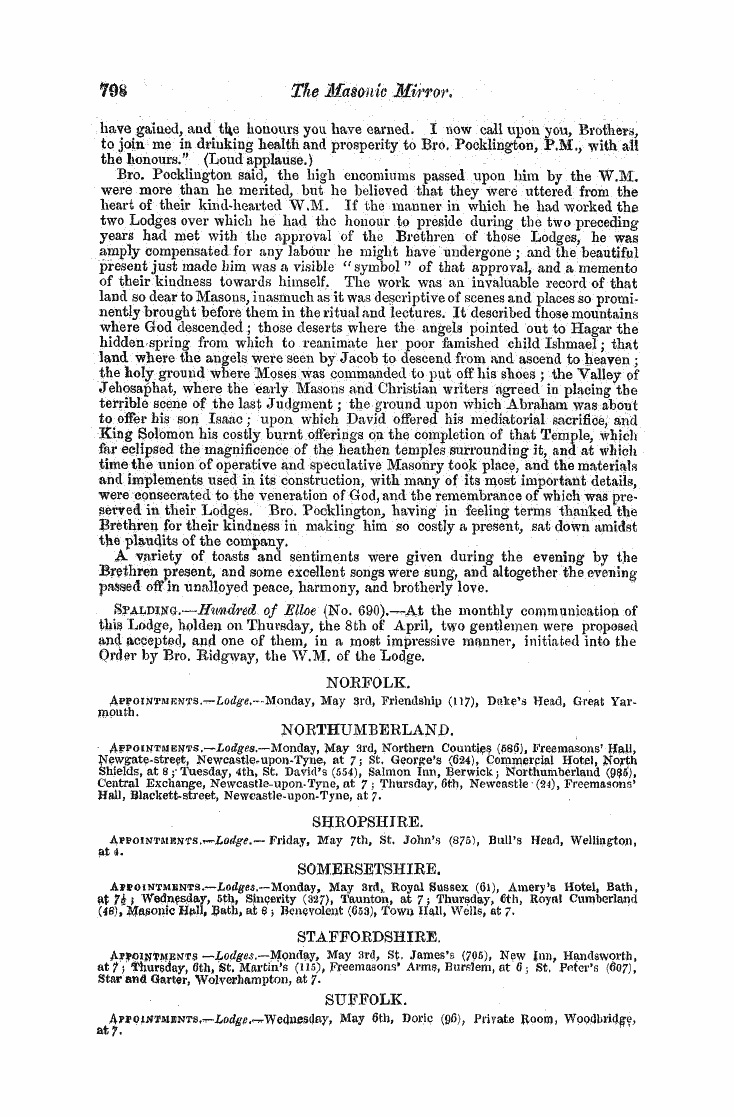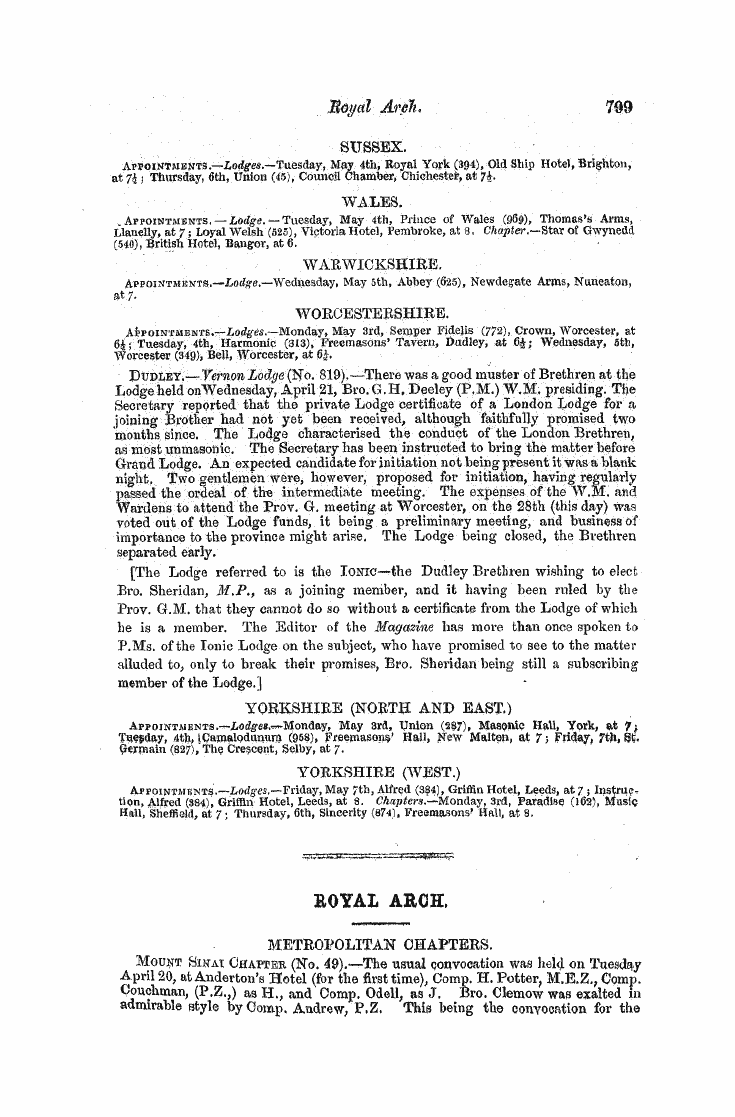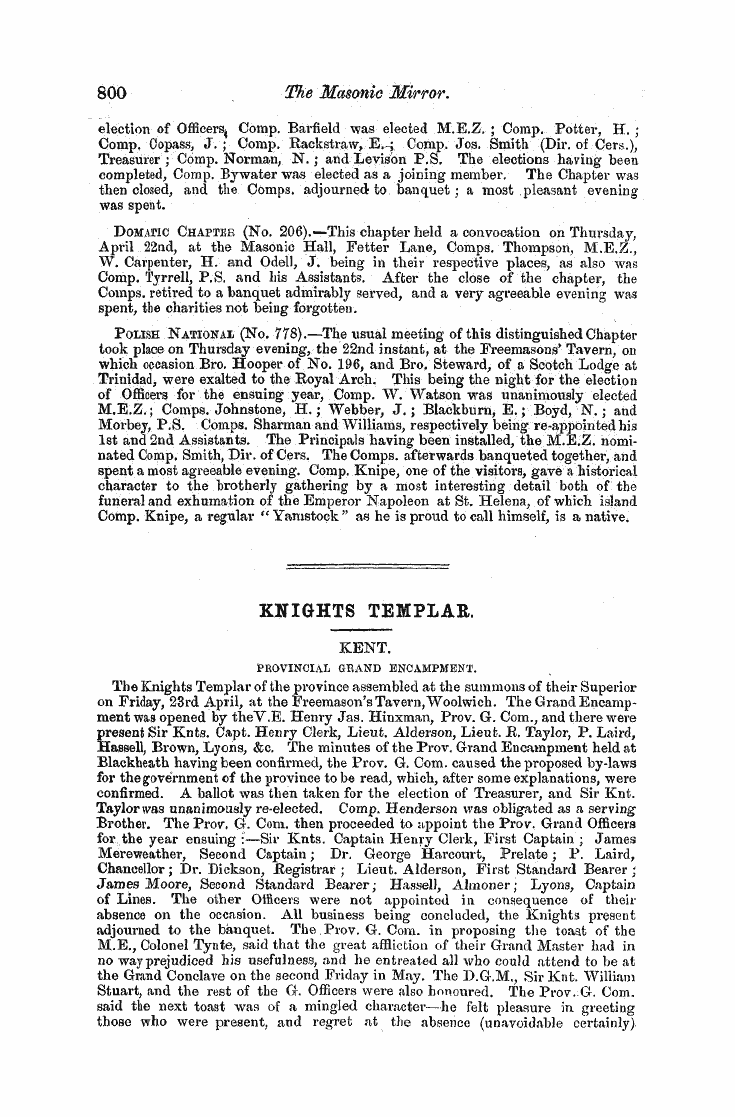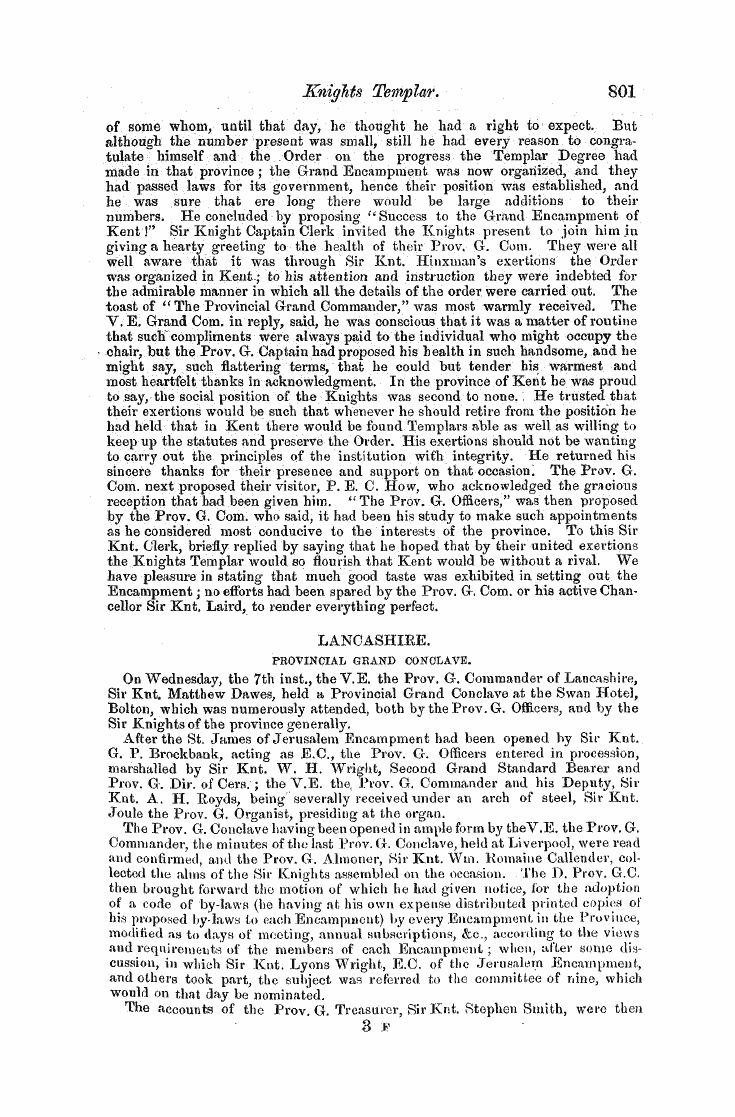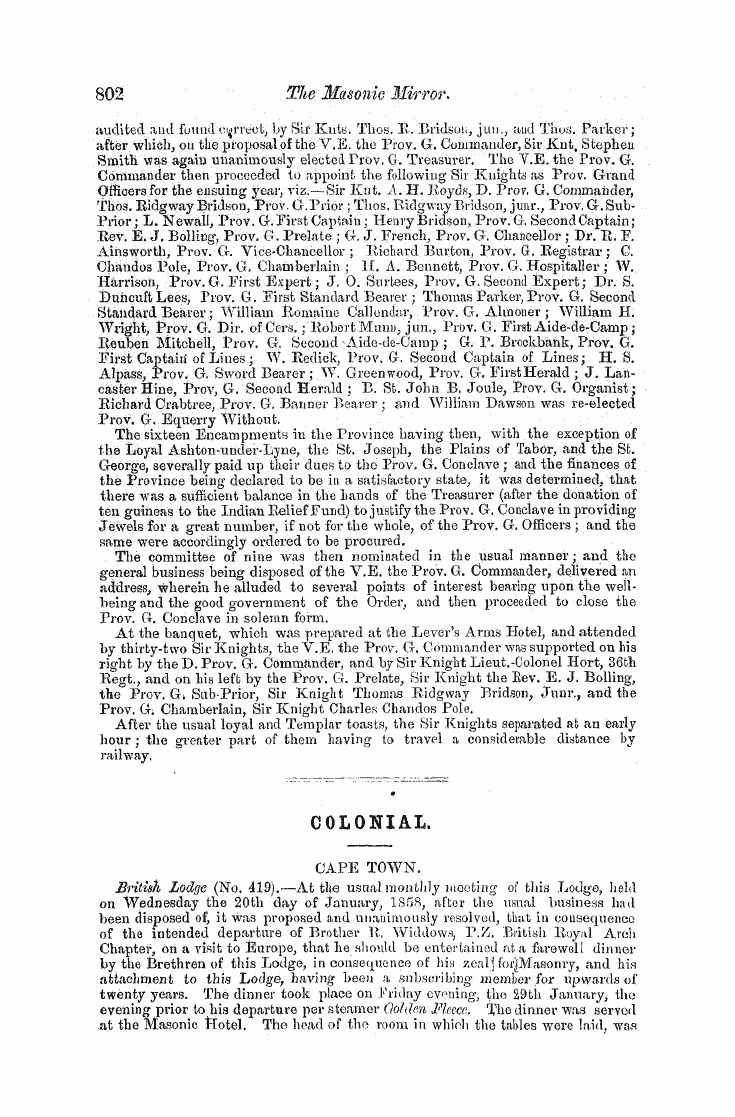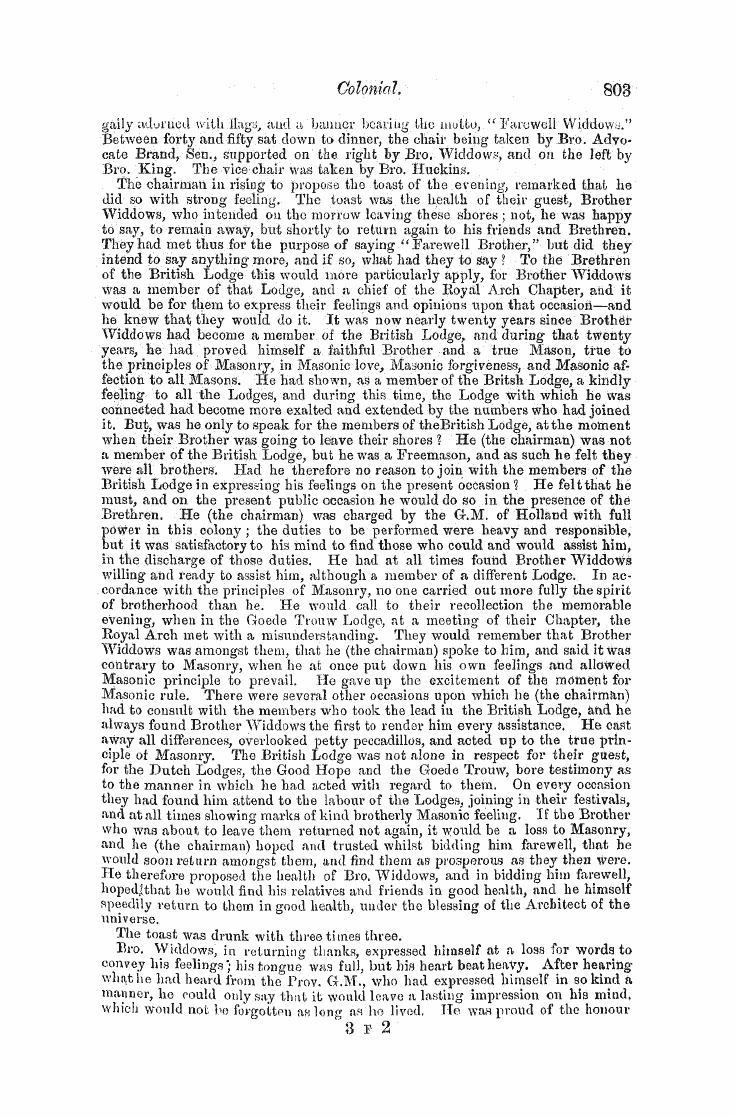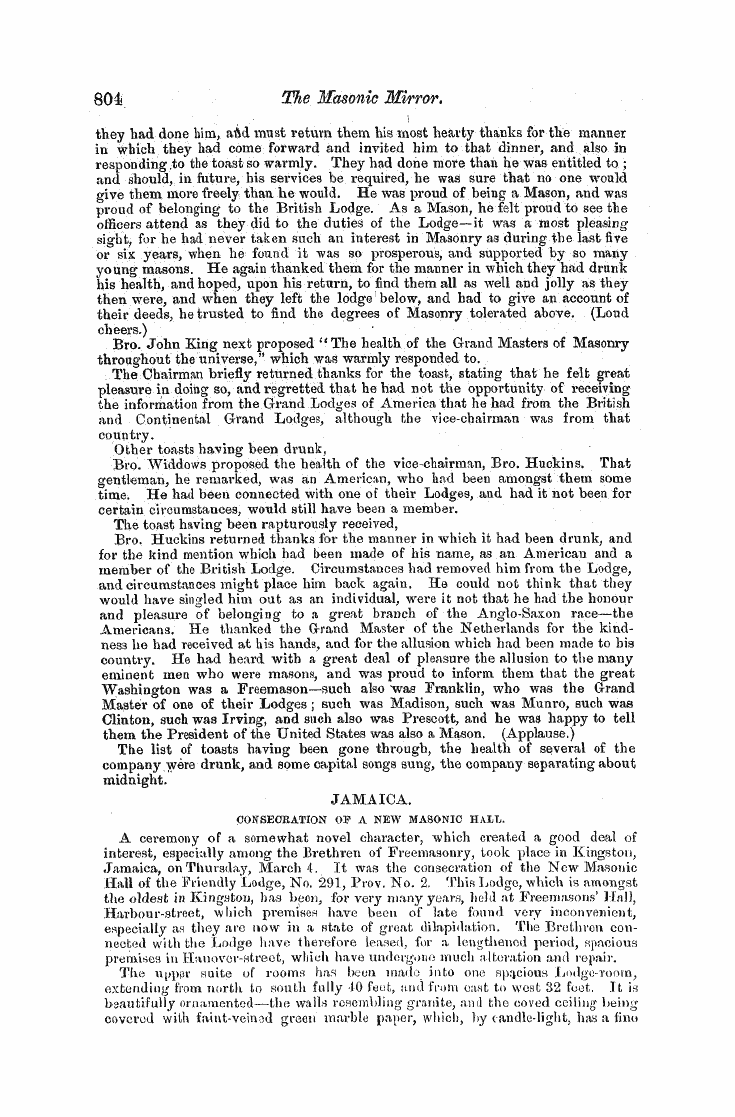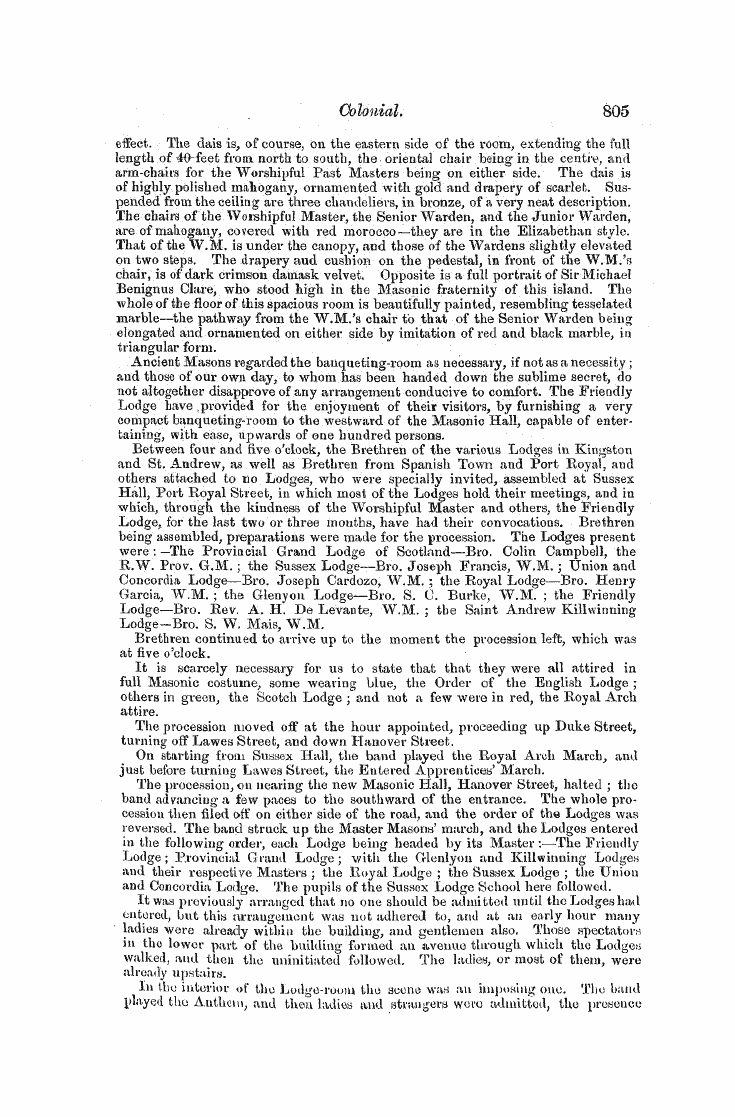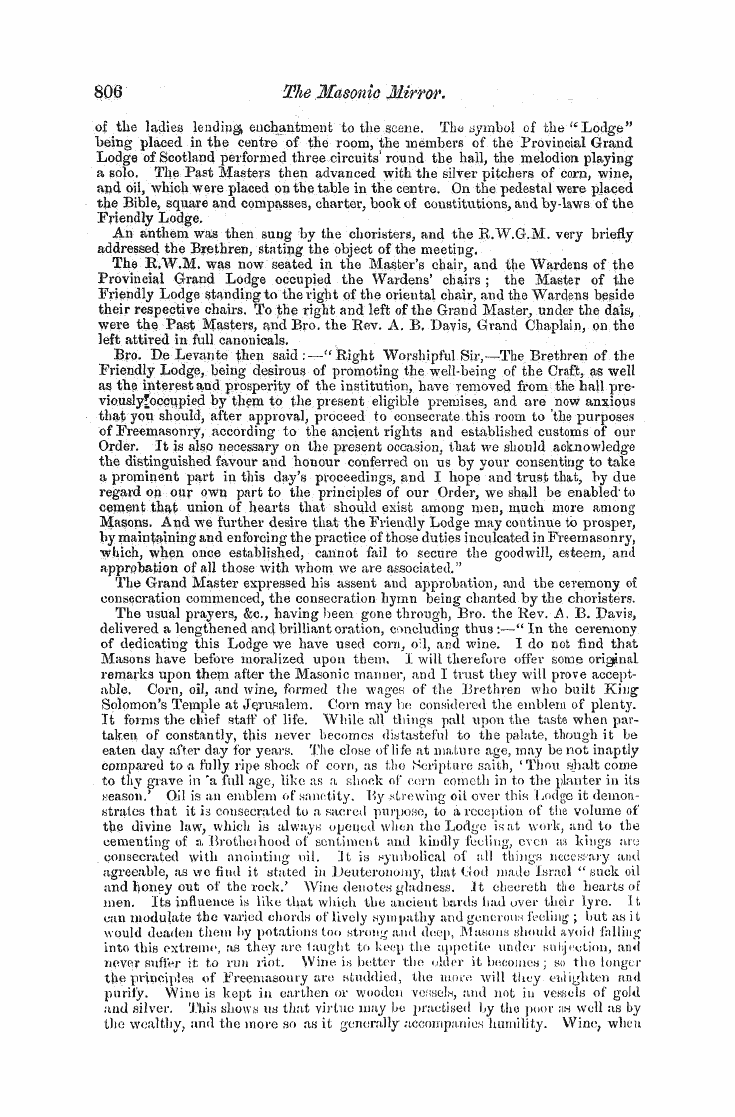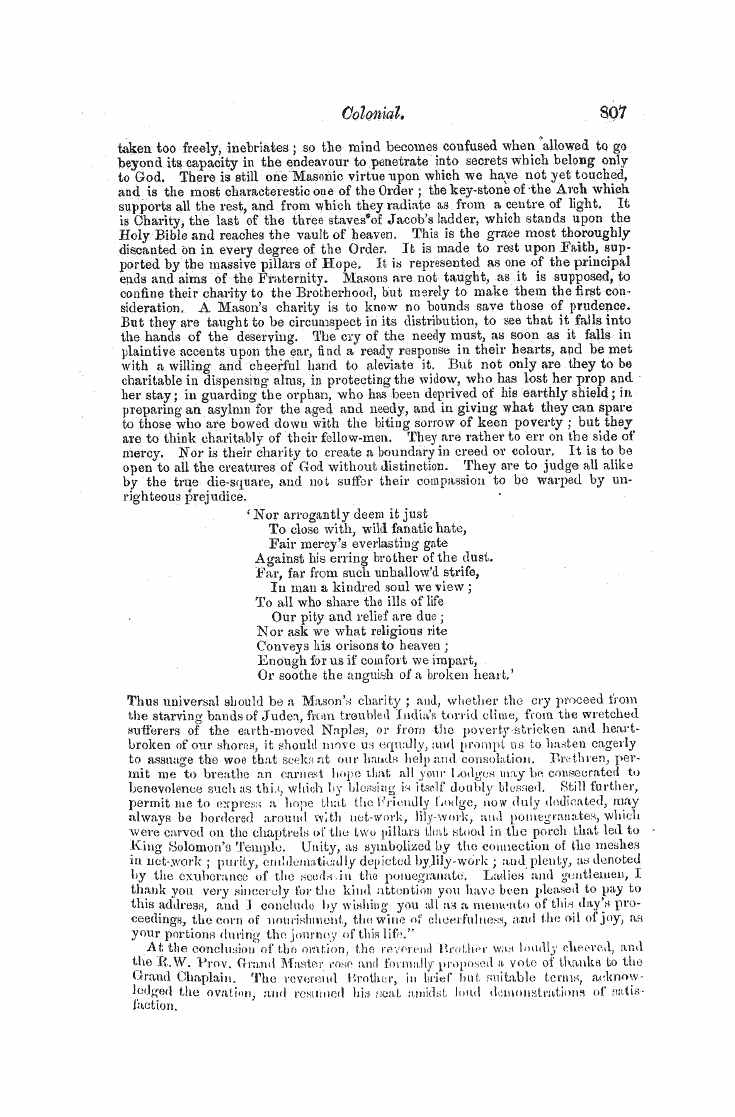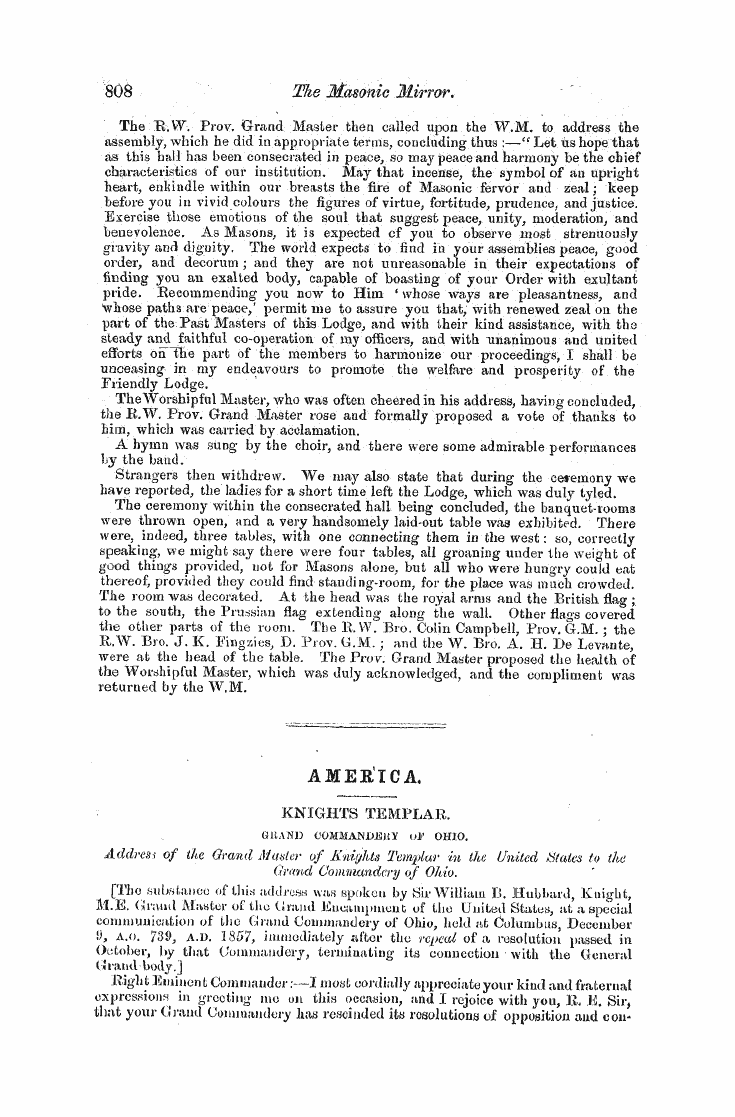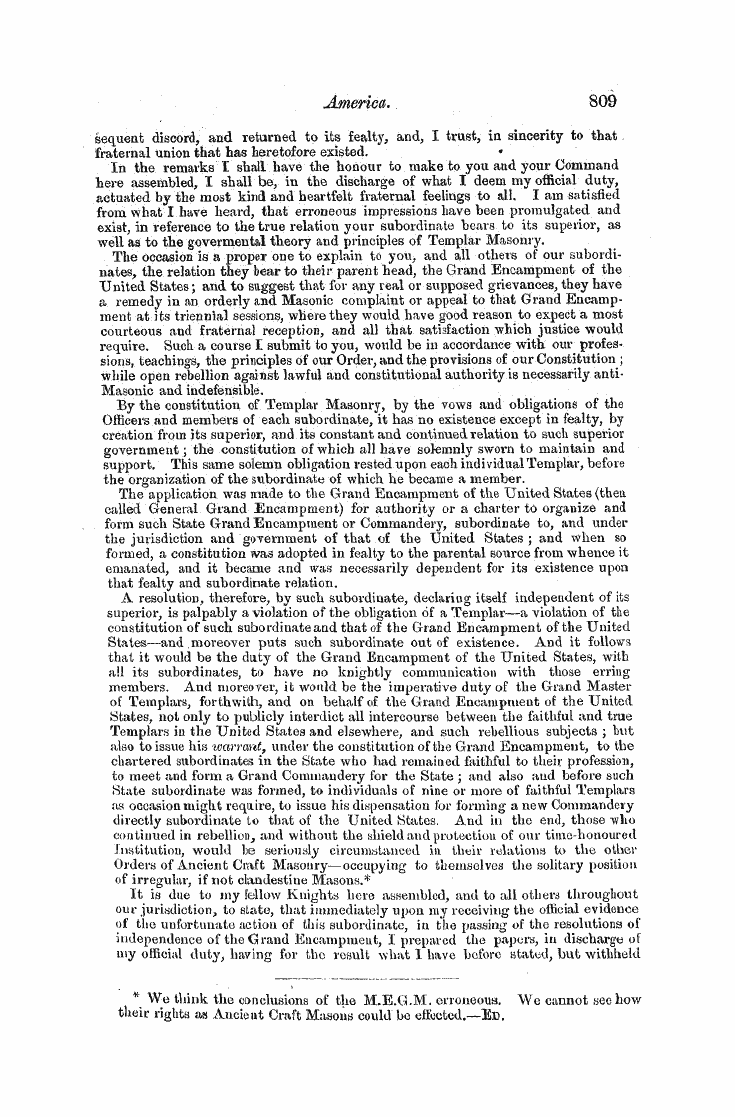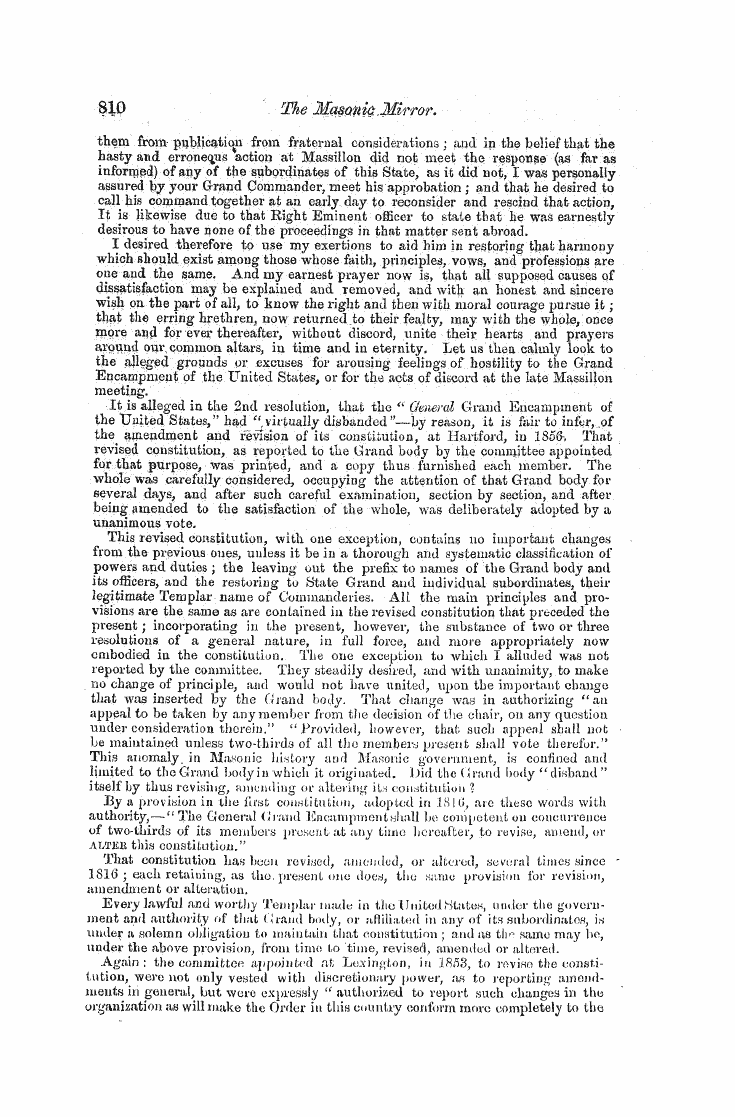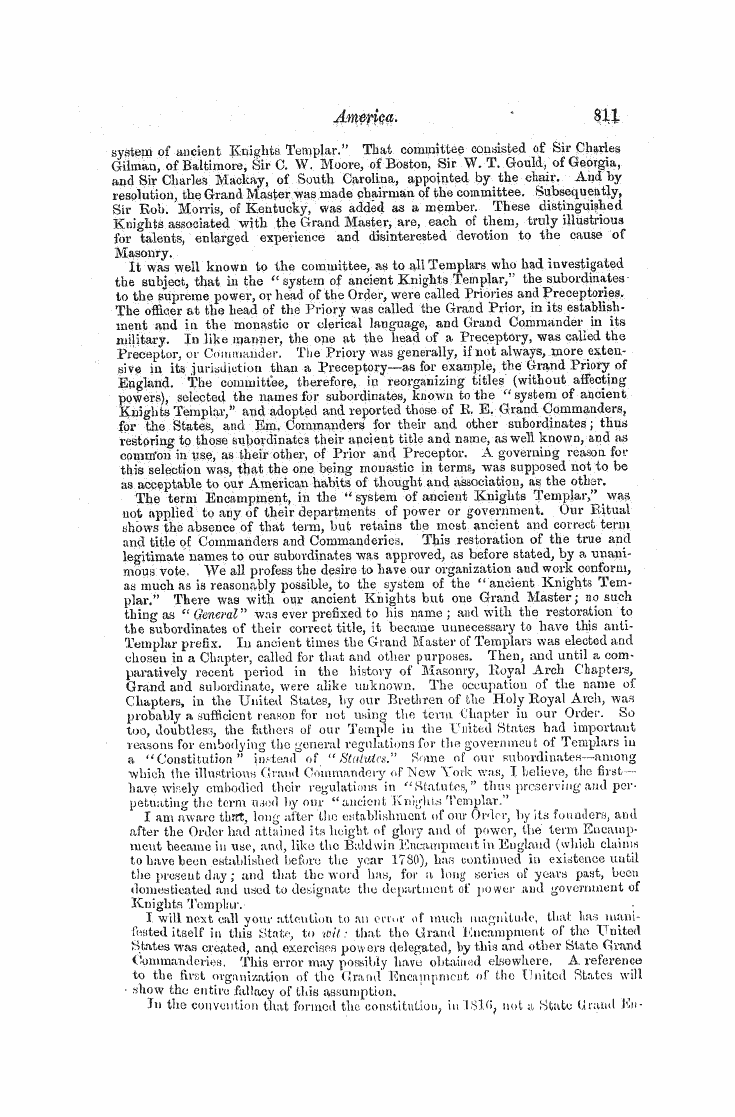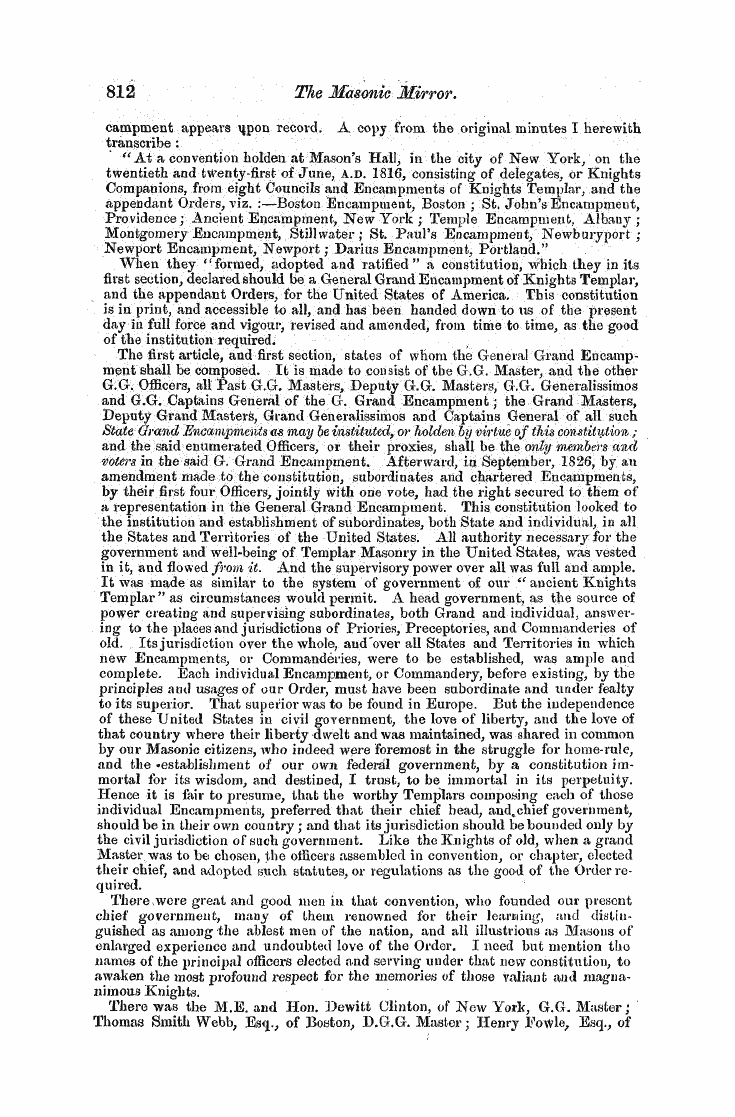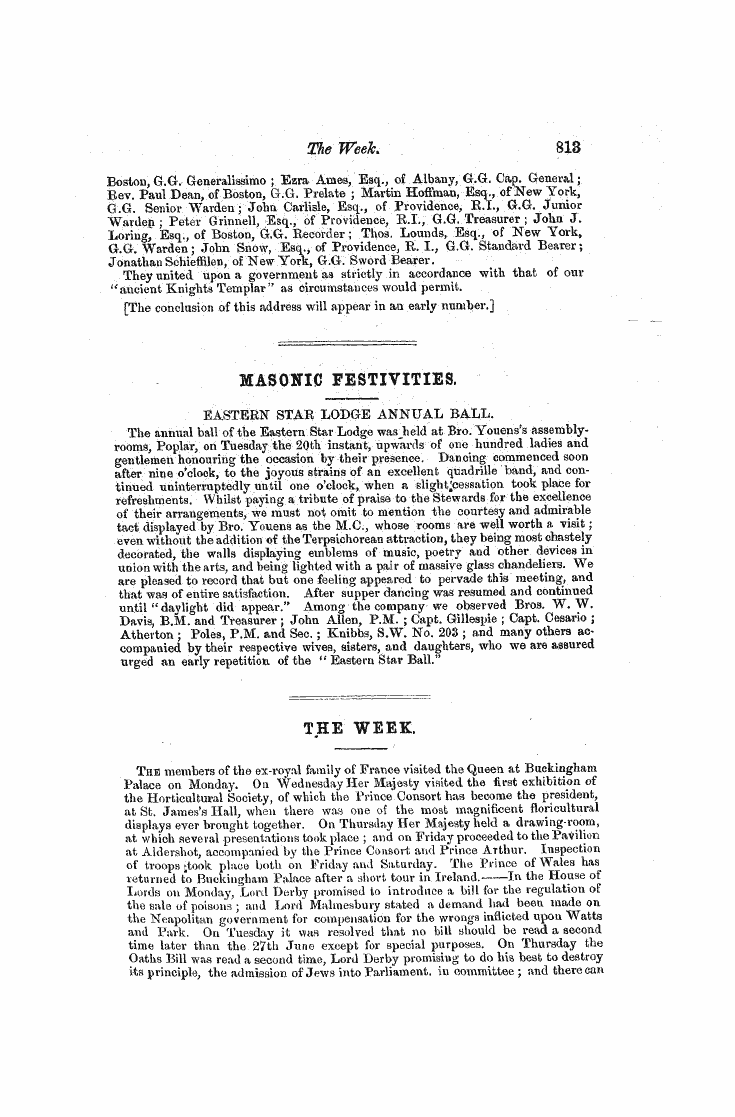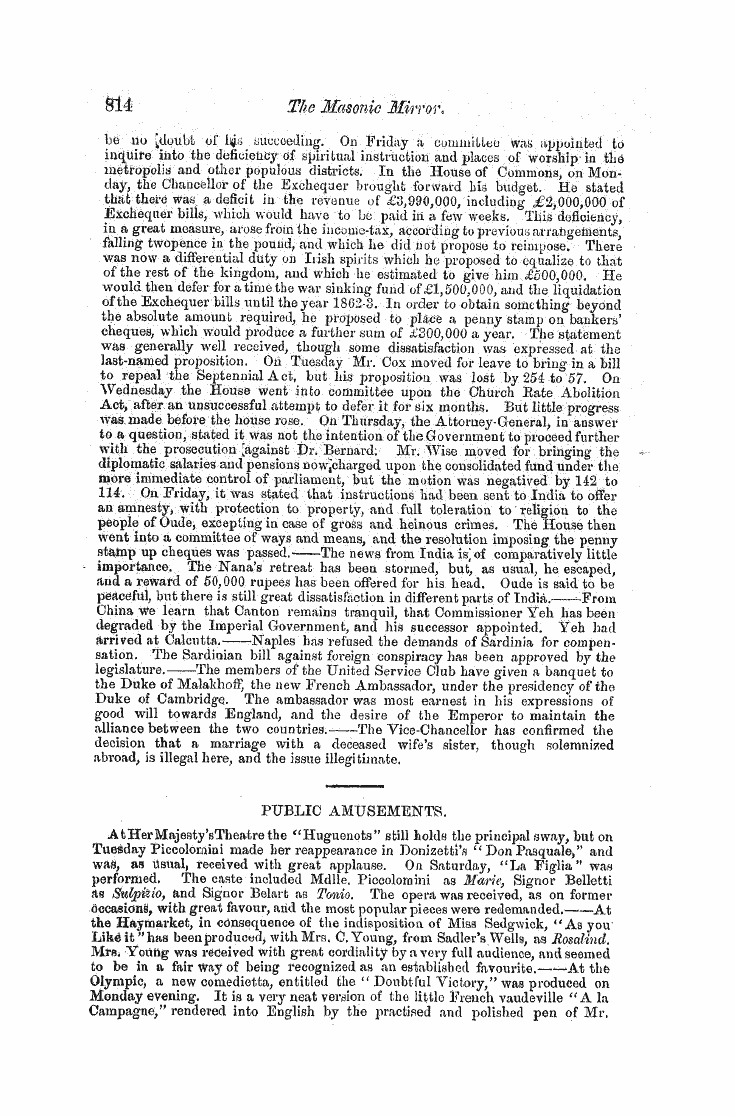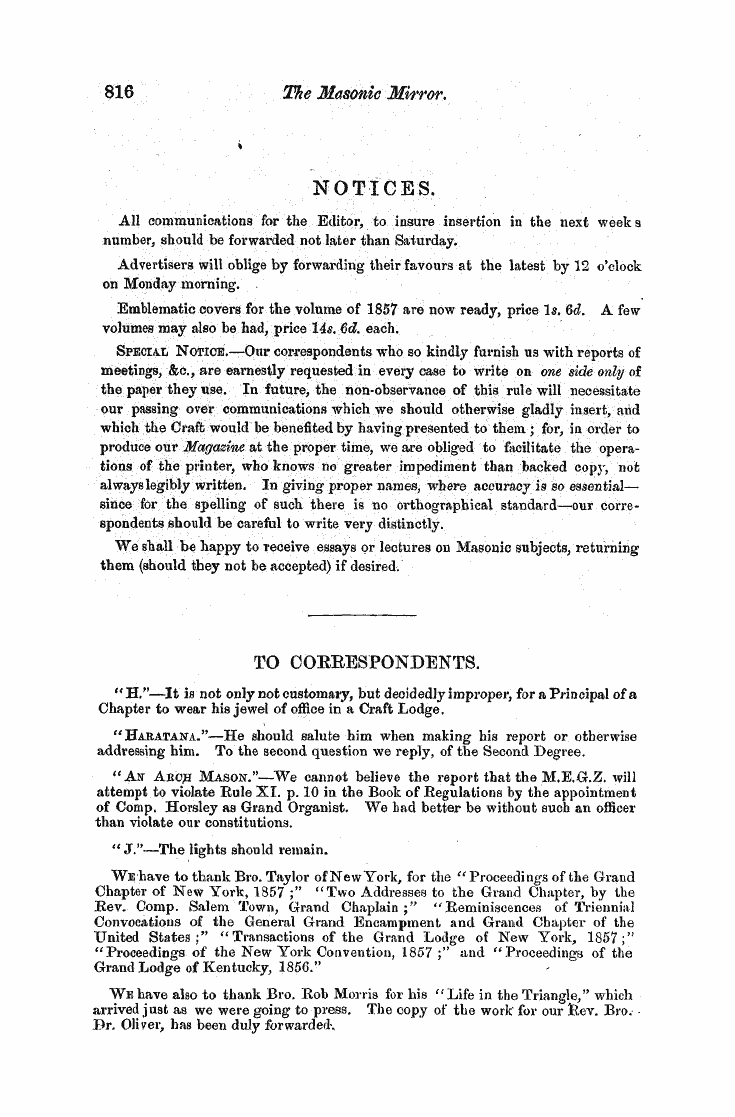Note: This text has been automatically extracted via Optical Character Recognition (OCR) software.
America
system of ancient Knights Templar . " That committee consisted of Sir Charles Gilman , of Baltimore , Sir C . W . Moore , of Boston , Sir W . T . Gould , of Georgia , and Sir Charles Mackay , of South Carolina , appointed by the chair . And by resolution , the Grand Master was made chairman of the committee . Suhsequently , Sir Bob . Moms , of Kentucky , was added as a member . These distinguished Knights associated with the Grand Master , are , each of them , truly illustrious for talents , enlarged experience and disinterested devotion to the cause of Masonry . ¦ ¦ ¦ '
It was well known to the committee , as to all Templars who had investigated the subject , that in the " system of ancient Knights Templar , " the subordinates to the supreme power , or head of the Order , were called Priories and Preceptories . The officer at the head of the Priory was called the Grand Prior , in its establishment and in the monastic or clerical language , and Grand Commander in its military . In like manner , the one at the head of a Preceptory , was called the Preceptor , or Commander . The Priory was generally , if not always , niore extensive in its jurisdiction than a Preceptory—as for example , the Grand Priory of England , the committee , therefore , in reorganizing titles ( without affecting
powers ) , selected the names for subordinates , known to the '" system of ancient Knights Templar , " and adopted and reported those of K . E . Grand Commanders , f ^ r the St ates , and 35 ^ for their and other subordinates ; thus restoring to those subordinates their ancient title and name , as well known , and as comnfoh in use , as their other , of Prior and Preceptor . A governing reason for this selection was , that theone being monastic in terms , was supposed not to be as acceptable to our American habits of thought and association , as the other . Kniht lar
The term Encampment , in the " system of ancient gs Temp , ^ ^ was not applied to any of their departments of power or government . Our Ritual shows the absence of that terrn , but retains the most ancient and correct term and title of Commanders and Commanderies . This restoration of the true and legitimate names to our subordinates was approved , as before stated , by a unanimous vote , We all profess the desire to have oar organization and work conform , as much as is reasonably possible , to the system of the " ancient Knights Templar . " There was with our ancient Knights but one Grand Master ; no such thing as " QenevaV" was ever prefixed to his name ; and with the restoration to
the subordinates of their correct title , it became unnecessary to have this anti-Templar prefix . In ancient times the Grand Master of Templars was elected and chosen in a Chapter , called for that and other purposes . Then , and until a comparatively recent period in the history of Masonry , Eoyal Arch Chapters , Grand and subordinate , were alike unknown . The occupation of the name of Chapters , in the United States , by our Brethren of the Holy Eoyal Arch , was probably a sufficient reason for not using the term Chapter in our Order . So too , doubtless , the fathers of our Temple in the United States bad important reasons for embodying the general regulations for the government of Templars in 91
a " Constitution" instead of " Statutes . Some of our subordinates—among which the illustrious Grand Commandery of New York was , I believe , the first — have wisely embodied their regulations in " Statutes , " thus preserving and perpetuating the term used by our " ancient 'Knights Templar . "
I am aware thrrt , long after ' the establishment of our Order , by its founders , and after the Order bad attained its height of glory and of power , the term Encampment became in use , and , like the Baldwin Encampment in England ( which claims to have been established before the year 1780 ) , has continued in existence until the present day ; and that the word has , for a long series of years past , been domesticated and used to designate the department of power and government of
Knights Templar . I will next call your attention to an error of much magnitude , that has manifested itself in this State , to wit : that tho Grand Encampment of the United States was created , and exercises powers delegated , hy this and other State Grand Commanderies . This error may possibly havti obtained elsewhere . A reference to the first organization of the Grand Encampment of the United States will show the entire fallacy of this assumption . In the convention that formed the constitution , in ISK > not a State Urand En-
Note: This text has been automatically extracted via Optical Character Recognition (OCR) software.
America
system of ancient Knights Templar . " That committee consisted of Sir Charles Gilman , of Baltimore , Sir C . W . Moore , of Boston , Sir W . T . Gould , of Georgia , and Sir Charles Mackay , of South Carolina , appointed by the chair . And by resolution , the Grand Master was made chairman of the committee . Suhsequently , Sir Bob . Moms , of Kentucky , was added as a member . These distinguished Knights associated with the Grand Master , are , each of them , truly illustrious for talents , enlarged experience and disinterested devotion to the cause of Masonry . ¦ ¦ ¦ '
It was well known to the committee , as to all Templars who had investigated the subject , that in the " system of ancient Knights Templar , " the subordinates to the supreme power , or head of the Order , were called Priories and Preceptories . The officer at the head of the Priory was called the Grand Prior , in its establishment and in the monastic or clerical language , and Grand Commander in its military . In like manner , the one at the head of a Preceptory , was called the Preceptor , or Commander . The Priory was generally , if not always , niore extensive in its jurisdiction than a Preceptory—as for example , the Grand Priory of England , the committee , therefore , in reorganizing titles ( without affecting
powers ) , selected the names for subordinates , known to the '" system of ancient Knights Templar , " and adopted and reported those of K . E . Grand Commanders , f ^ r the St ates , and 35 ^ for their and other subordinates ; thus restoring to those subordinates their ancient title and name , as well known , and as comnfoh in use , as their other , of Prior and Preceptor . A governing reason for this selection was , that theone being monastic in terms , was supposed not to be as acceptable to our American habits of thought and association , as the other . Kniht lar
The term Encampment , in the " system of ancient gs Temp , ^ ^ was not applied to any of their departments of power or government . Our Ritual shows the absence of that terrn , but retains the most ancient and correct term and title of Commanders and Commanderies . This restoration of the true and legitimate names to our subordinates was approved , as before stated , by a unanimous vote , We all profess the desire to have oar organization and work conform , as much as is reasonably possible , to the system of the " ancient Knights Templar . " There was with our ancient Knights but one Grand Master ; no such thing as " QenevaV" was ever prefixed to his name ; and with the restoration to
the subordinates of their correct title , it became unnecessary to have this anti-Templar prefix . In ancient times the Grand Master of Templars was elected and chosen in a Chapter , called for that and other purposes . Then , and until a comparatively recent period in the history of Masonry , Eoyal Arch Chapters , Grand and subordinate , were alike unknown . The occupation of the name of Chapters , in the United States , by our Brethren of the Holy Eoyal Arch , was probably a sufficient reason for not using the term Chapter in our Order . So too , doubtless , the fathers of our Temple in the United States bad important reasons for embodying the general regulations for the government of Templars in 91
a " Constitution" instead of " Statutes . Some of our subordinates—among which the illustrious Grand Commandery of New York was , I believe , the first — have wisely embodied their regulations in " Statutes , " thus preserving and perpetuating the term used by our " ancient 'Knights Templar . "
I am aware thrrt , long after ' the establishment of our Order , by its founders , and after the Order bad attained its height of glory and of power , the term Encampment became in use , and , like the Baldwin Encampment in England ( which claims to have been established before the year 1780 ) , has continued in existence until the present day ; and that the word has , for a long series of years past , been domesticated and used to designate the department of power and government of
Knights Templar . I will next call your attention to an error of much magnitude , that has manifested itself in this State , to wit : that tho Grand Encampment of the United States was created , and exercises powers delegated , hy this and other State Grand Commanderies . This error may possibly havti obtained elsewhere . A reference to the first organization of the Grand Encampment of the United States will show the entire fallacy of this assumption . In the convention that formed the constitution , in ISK > not a State Urand En-


























































